THE FIRST DECADE Gundy
PAGE 24

At Byford Auto Group, we take our motto seriously! For us, customer satisfaction comes first – we give more because you deserve more ... like free loaners for our service customers, and oil changes for life. And, you can count on our world-class service technicians to keep your car on the road and running smoothly. At Byford, we view our customers as part of our family and maintain a friendly, relaxed atmosphere ... which is probably why we have a top-tier customer satisfaction rating! Come see for yourself at any of our locations. Nobody Treats You Better Than Byford!
BYFORD BUICK GMC – CHICKASHA • 2900 S. Hwy. 81
BYFORD CHEVY BUICK GMC – DUNCAN * 1909 N. Hwy. 81
BYFORD CHRYSLER DODGE JEEP RAM – DUNCAN • 8307 N. Hwy. 81
BYFORD MOTORS – OKC • I-240 & Shields


888-595-0259

AUTO GROUP CHICKASHA • DUNCAN • OKC
ByfordAuto.com



For Cowboys on the move since 1904. Reliable, Dependable, Predictable. 4021 NW 3rd St., OKC 73107 • 800-299-7070 | 3126 S. Van Buren, Enid, OK 73703 • 800-299-1053 • Free estimates • Expert packing and crating • Local, long distance and international moves • Record management center • Commercial warehouse and distribution • Specialties in moving electronic equipment • Office moving • Small part distribution • Office record storage C. Paul Baker Jr., Owner • Allied Van Lines Agent emricksallied.com
OUR ATHLETIC DEPARTMENT IS VERY SIMILAR TO A NASCAR VEHICLE.
The body of the car would be our facilities, the engine would be the athletes, the driver would be our coaches, the pit crew would be our support sta , and the fuel would be you, our fans. WITHOUT YOU, WE WOULD HAVE A GREAT LOOKING CAR WITH THE POTENTIAL TO GO VERY FAST BUT THAT’S ABOUT IT. There isn’t a lot of excitement about a car that never moves.
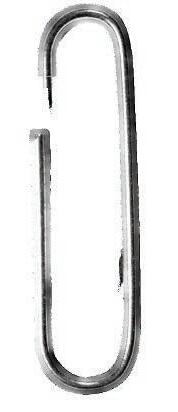
Greetings, OSU fans.

I can’t overemphasize how important you are to our success. You provide the resources by purchasing season tickets. You provide the excitement when you show up at the games and make a lot of noise. Without you, we are simply a great looking car with lots of potential. This past season set a new standard for our department with a 22nd place finish in the Learfield Sports Director’s Cup, a measure of the strength of an entire athletic department. YOU MADE THIS POSSIBLE, AND WE SINCERELY APPRECIATE YOUR LOYAL SUPPORT. You give us an opportunity to dream big dreams and make them come true as evidenced by our 51 national championships. Thank you for making OSU a very special place, a place where championships are won!
GO POKES!
MIKE HOLDER DIRECTOR OF INTERCOLLEGIATE ATHLETICS Former OSU Men’s Golf Coach OSU Class of 1973

4 PHOTO / BRUCE
WAERFIELD
FALL 2014





5 PLAY BOOK 2014 VOL.8 FALL the FEATURES DEPARTMENTS 16 At Home On The Road DONOR SPOTLIGHT 76 POSSE Auction 20 The 150 82 Wrav!ngs 72 The Honor Roll 24 The Mike Gundy Era at Ten STUDENT-ATHLETE COURTNEY DIKE 34 Goals in Mind STUDENT-ATHLETE KIRUBEL ERASSA 52 Crossing Countries FEMALE STUDENT-ATHLETE OF THE YEAR 58 Riding with Pride MALE STUDENT-ATHLETE OF THE YEAR 62 A Family Tradition STUDENT-ATHLETE CAITLYN WAY 68 From South Dakota to Center Stage 66 Female & Male Student-Athletes of The Year WHERE ARE THEY NOW? 40 Val Skinner 8 It’s More Than Academic THE TEAM BEHIND THE TEAMS 44 The Forgotten Coach Big wins: OSU head football coach Mike Gundy shares his recollections in an exclusive look back over the years.
COVER PHOTOGRAPHY BY PHIL SHOCKLEY
Mike Gundy
PHOTO / PHIL SHOCKLEY
At Oklahoma State University, compliance with NCAA, Big 12 and institutional rules is of the utmost importance. As a supporter of OSU, please remember that maintaining the integrity of the University and the Athletic Department is your first responsibility. As a donor, and therefore booster of OSU, NCAA rules apply to you. If you have any questions, feel free to call the OSU Office of Athletic Compliance at 405-744-7862. Additional information can also be found by clicking on the Compliance tab of the Athletic Department web-site at www.okstate.com
Remember to always “Ask Before You Act.”
Respectfully,
BEN DYSON
ASSISTANT ATHLETIC DIRECTOR FOR COMPLIANCE
LEARFIELD SPORTS DIRECTORS’ CUP

The 2013-2014 OKLAHOMA STATE ATHLETIC YEAR concluded with the Cowboys hosting a BASEBALL SUPER REGIONAL, a runner-up finish at the NCAA MEN’S GOLF NATIONAL CHAMPIONSHIP and a NATIONAL FINISH OF 13TH IN MEN’S TRACK AND FIELD. That acrossthe-board success was typical of the year and helped propel OSU to its highest finish ever in the LEARFIELD CUP OSU Athletics closed the year No. 22 nationally with 867 POINTS in the competition, which measures the overall athletic success of each program based on finishes in NCAA championship play OSU picked up points in 15 of its 16 eligible sports (AN EQUESTRIAN NATIONAL CHAMPIONSHIP IS NOT YET NCAA SPONSORED) No school that finished in the Learfield top 25 had fewer eligible sports than OSU.
AWARD WINNING
SOME OF OUR POSSE STAFF received HONORS at this Summer’s OKLAHOMA COLLEGE PUBLIC RELATIONS ASSOCIATION (OCPRA) awards ceremony. Michael Orr’s layout of Eddie Sutton’s Greatest Gallagher Moments was awarded a SECOND PLACE AWARD in the SPORTS PUBLICATION category. In the SPORTS WRITING category, Clay Billman’s Living Legend was awarded SECOND PLACE . Our previous issue of POSSE MAGAZINE, V7N3 took FIRST PLACE in the SPORTS PUBLICATION category.
POSSE POKES
POSSE MAGAZINE STAFF
VICE PRESIDENT OF ENROLLMENT MANAGEMENT / MARKETING KYLE WRAY
EDITOR-IN-CHIEF / SENIOR ASSOCIATE ATHLETIC DIRECTOR KEVIN KLINTWORTH
SENIOR ASSOCIATE ATHLETIC DIRECTOR / EXTERNAL AFFAIRS JESSE MARTIN
ART DIRECTOR / LEAD DESIGNER PAUL V. FLEMING
ASSISTANT ART DIRECTOR / DESIGNER ROSS MAUTE
PRODUCTION ASSISTANT / PHOTOGRAPHER BRUCE WATERFIELD
ASSISTANT EDITORS CLAY BILLMAN, MICHAEL BAKER
CONTRIBUTING PHOTOGRAPHERS BRUCE WATERFIELD, PHIL SHOCKLEY, GARY LAWSON
CONTRIBUTING WRITERS KEVIN KLINTWORTH, WADE M cWHORTER, RYAN CAMERON, CONTRIBUTING WRITERS GENE JOHNSON, CLAY BILLMAN, AUSTIN CHAPPELL, BLAKE ZIMMERMAN
CONTRIBUTING DESIGNERS MARK PENNIE, MICHAEL ORR
ATHLETICS ANNUAL GIVING (POSSE) DEVELOPMENT STAFF
POSSE DIRECTOR ELLEN AYRES
PREMIUM SERVICES DIRECTOR KARYL HENRY
PUBLICATIONS COORDINATOR CLAY BILLMAN
PROGRAMS COORDINATOR / BENEFITS MARY LEWIS
EVENT COORDINATOR / GAME DAY PARKING MANAGER JOE NELSON
ATHLETIC DEVELOPMENT ASSISTANT STEPHANIE BOESE
ATHLETICS MAJOR GIFT DEVELOPMENT STAFF
SENIOR ASSOCIATE ATHLETIC DIRECTOR / DEVELOPMENT LARRY REECE
DIRECTOR OF DEVELOPMENT / ATHLETICS MATT GRANTHAM
PROJECT MANAGER SHAWN TAYLOR
OSU POSSE
102 ATHLETICS CENTER STILLWATER, OK 74078-5070 405.744.7301
Donations received may be transferred to Cowboy Athletics, Inc. in accordance with the Joint Resolution among Oklahoma State University, the Oklahoma State University Foundation, and Cowboy Athletics, Inc.
POSSE magazine is published four times a year by Oklahoma State University Athletic Department and the POSSE, and is mailed to current members of the POSSE. Magazine subscriptions available by membership in the POSSE only. Membership is $150 annually. Postage paid at Stillwater, OK, and additional mailing offices. Oklahoma State University, in compliance with Title VI and VII of the Civil Rights Act of 1964, Executive Order 11246 as amended, Title IX of the Education Amendments of 1972, Americans with Disabilities Act of 1990, and other federal laws and regulations, does not discriminate on the basis of race, color, national origin, sex, age, religion, disability, or status as a veteran in any of its policies, practices or procedures. This includes but is not limited to admissions, employment, financial aid, and educational services. Title IX of the Education Amendments and Oklahoma State University policy prohibit discrimination in the provision of services or benefits offered by the University based on gender. Any person (student, faculty or staff) who believes that discriminatory practices have been engaged in based upon gender may discuss their concerns and file informal or formal complaints of possible violations of Title IX with the OSU Title IX Coordinator, Mackenzie Wilfong, J.D., Director of Affirmative Action, 408 Whitehurst, Oklahoma State University, Stillwater, OK 74078, (405) 744-5371 or (405) 744-5576 (fax).
This publication, issued by Oklahoma State University as authorized by the Associate Athletic Director, POSSE, was printed by Royal Printing Company at a cost of $1.115 per issue. 8.175M/August 2014/#5586.
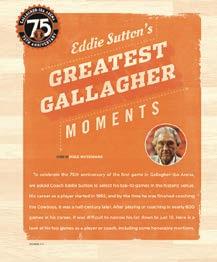

POSSE magazine is published four times a year by Oklahoma State University, 121 Cordell North Stillwater, OK 74078. The magazine is produced by OSU Athletics and University Marketing, and is mailed to current members of the POSSE Association. Membership starts at $150/year and includes benefits such as the POSSE Magazine and member auto decals. POSSE annual funds contribute to student-athlete scholarships and operating expenses, which are critical to helping our teams stay competitive. Gifts of all sizes impact all areas of athletics. Postage paid at Stillwater, OK, and additional mailing offices.
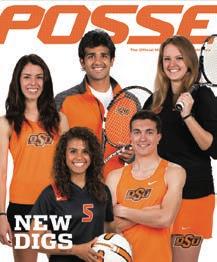
6
405.744.9084 F OKSTATEPOSSE.COM OKSTATEPOSSE POSSE@OKSTATE.EDU @OSUPOSSE ADVERTISING 405.744.7301 EDITORIAL 405.744.1706
P
V7N3 V7N2 V7N2
FALL 2014
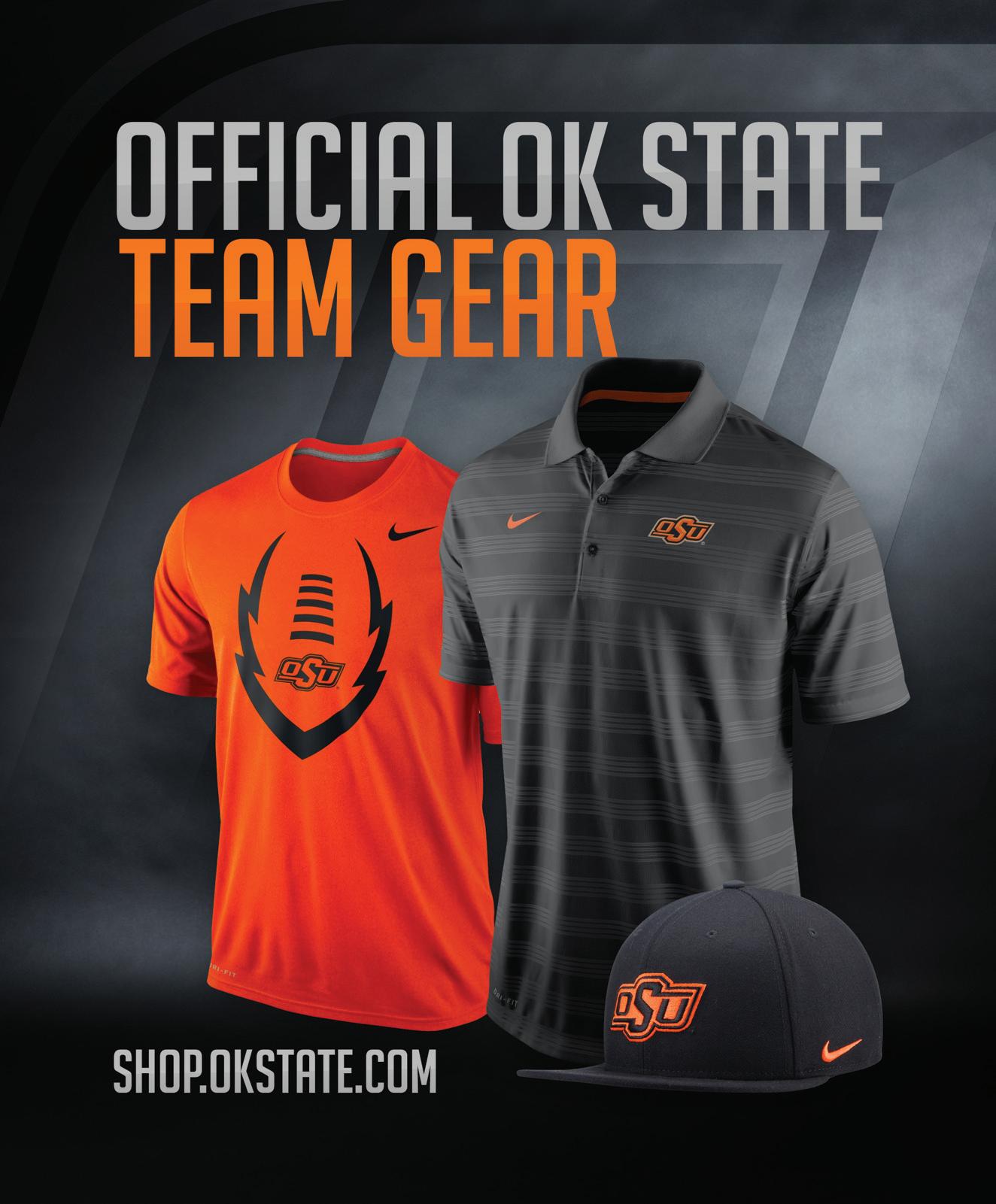
IN THE QUIETEST CORNER
of the OSU Athletics

Center, far away from the bright lights of competition and television cameras, the student portion of the student-athlete becomes reality with the help and guidance of dedicated professionals. Like many of the moving parts on the inside of a power conference athletic department, the sta in academic support faces challenges that are hard to fathom from the outside.

Degree progression, retention and eligibility represent the tangible measurements of the academic support unit. However, Oklahoma State’s student-athletes utilize Dr. Marilyn Middlebrook’s staff of advisors and counselors for far more than reading and writing.



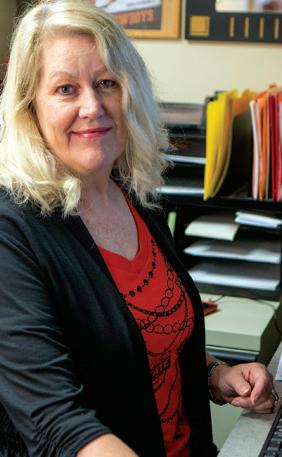
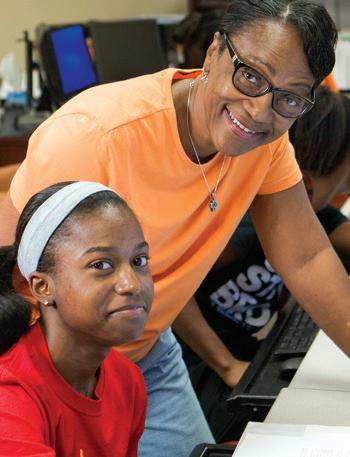
Inside the walls of JOE AND CONNIE MITCHELL ACADEMIC ENRICHMENT CENTER, located just o the memorial lobby of the athletics center, a good many dramas can take place. Middlebrook is referred to as “mom” by the student-athletes and in many ways the academic support sta becomes the personal confidantes of many of the Cowboys and Cowgirls.
By connecting the dots of the personal trials and tribulations faced by student-athletes with the demands and challenges of competing in the Big 12, the academic

8
ALAN GOOD — ASSISTANT DIRECTOR
AGATHA ADAMS — ASSISTANT DIRECTOR
KYLE TATROULT — WRITING CENTER COORDINATOR
NIKKI JONES — LEARNING SPECIALIST
TERRY HENLEY — SENIOR ACADEMIC COUNSELOR, FOOTBALL
BRENDA MILLER — ADMINISTRATIVE ASSISTANT
FALL 2014
sta often resolves academic, and at times personal issues, before they morph into roadblocks.
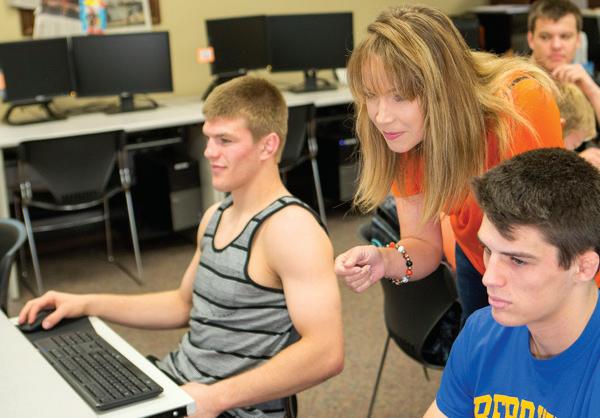

Perhaps the greatest connection OSU Athletics has to its former student-athletes is the ACADEMIC SUPPORT UNIT. Middlebrook’s tenure as the department head for the academic support unit far exceeds that of any current head coach. And unlike coaches, the academic sta is connected to every student-athlete on campus, regardless of their sport.
The academic support unit plays a critical role for student-athletes, serving as a critical sounding board in making life decisions and even as a family away from home.


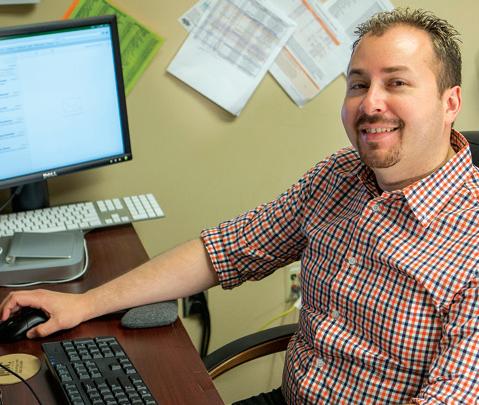
JUST ASK MOM.
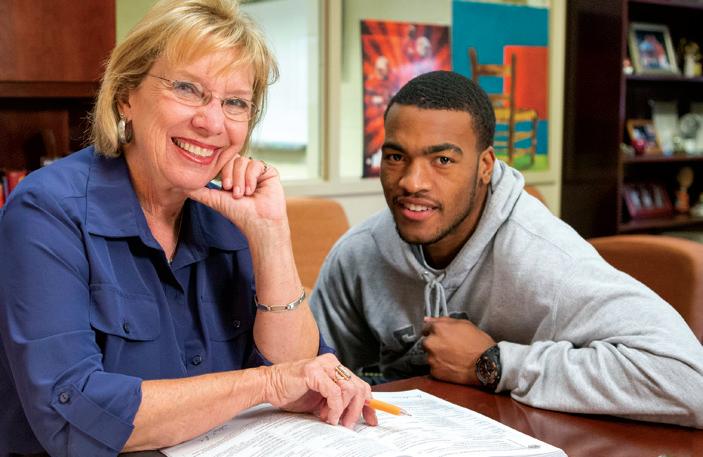
9
SHAYLA KENNEDY — ADMINISTRATIVE SUPPORT SPECIALIST
DR. MARILYN (MOM) MIDDLEBROOK — ASSOCIATE ATHLETIC DIRECTOR FOR ACADEMIC AFFAIRS
JAMES KNECHT — LEARNING CENTER COORDINATOR
AMY RANDOLPH — STUDENT ATHLETE LEARNING SPECIALIST
JONENE COOK — STUDENT ATHLETE LEARNING SPECIALIST
PHOTOGRAPHY BY BRUCE WATERFIELD

10
PHOTOGRAPHY BY GARY LAWSON FALL 2014
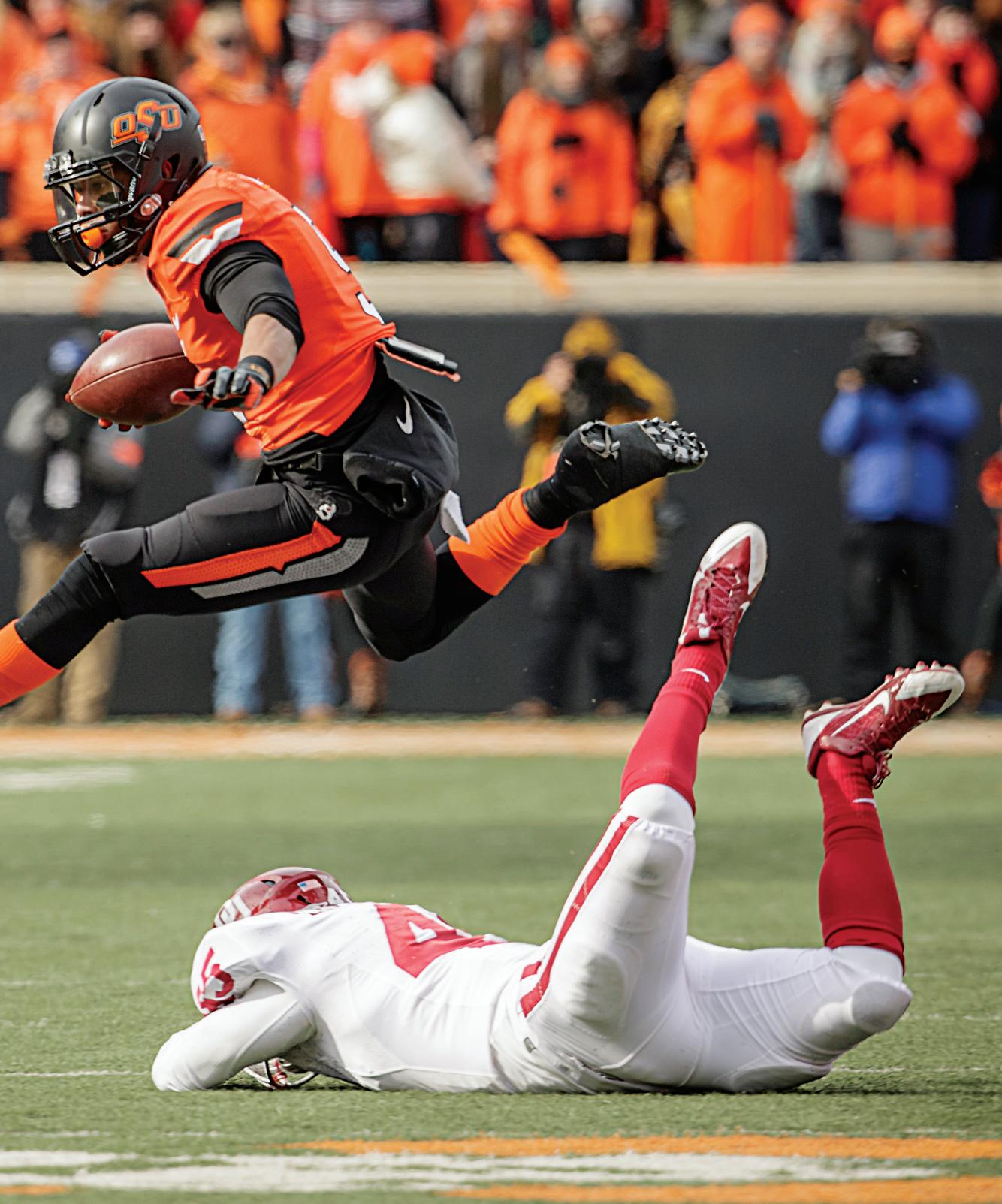
11

12 FALL 2014
On New Turf at BPS
THE 2014 OKLAHOMA STATE COWBOYS WILL BURST OUT OF THE GATE AT THE HOME OPENER ON NEW TURF IN Boone Pickens Stadium . The installation began after the completion of the annual OKLAHOMA SPECIAL OLYMPICS IN STILLWATER and was completed approximately one month later. The turf features the OSU logo at midfield and re-branded BIG 12 MARKS at the 25-yard-line, plus a BLACK BORDER and VIVID ORANGE END ZONES with classic block lettering.



13
PHOTOS / BRUCE WATERFIELD



CELEBRATING FIVE DECADES AS THE TEAM BEHIND THE TEAMS okstateposse.com 877-ALL-4-OSU @osuposse okstateposse
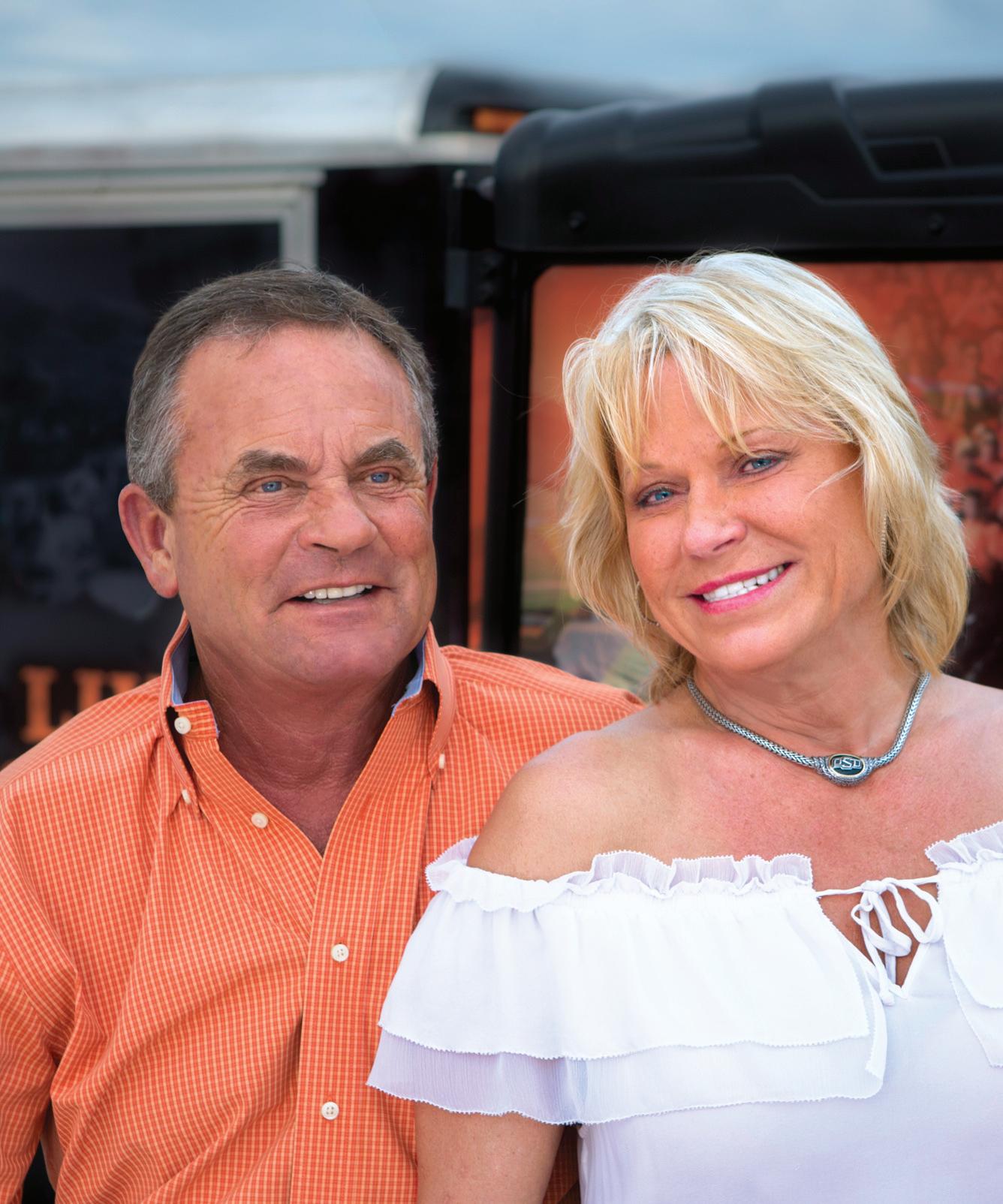

16 FALL 2014
STORY BY WADE McWHORTER PHOTOGRAPHY BY BRUCE WATERFIELD

FOR THE BETTER PART OF 15 YEARS AND COUNTING,
THE SCHULTZES HAVE BEEN BURNING UP THE ROADS BETWEEN THEIR HOMETOWN OF BOOKER, TEXAS, AND STILLWATER, THE HOME OF THEIR BELOVED COWBOYS AND COWGIRLS.
Brad and Margie make the 500-mile round trip in style in their custom Class A Motorhome, and the reason for their fandom is simple.
“WE LIKE TO DO FUN THINGS, AND OSU IS A FUN PLACE TO DO THINGS,” BRAD SAID.
Margie admits Cowgirl basketball is her favorite, but there are not many home events, regardless of sport, that she and her husband don’t attend on a regular basis — good luck finding an OSU sport for which they don’t have season tickets.
“I don’t know if we have two more loyal fans out there than Brad and Margie,” said OSU senior associate athletic director for development Larry Reece. “Just their commitment — I know we’ve got a lot of folks that travel, but they come to everything. It’s amazing their commitment to come all the way from BOOKER, TEXAS.
“That’s what separates college athletics — the people are so passionate. They get to know our student-athletes and invest in them, and there’s not a greater example of that than Brad and Margie Schultz. THEY REALLY EMBODY THE PASSION AND THE SPIRIT OF ‘THIS IS OUR TEAM, THIS IS OUR SCHOOL.’”
THEREIN LIES A LITTLE BIT OF IRONY, however.
While there’s no question of the Schultz’ orange-and-black loyalties, neither are Oklahoma State grads.
17
If you’re watching an Oklahoma State sporting event, there’s a very good chance Brad and Margie Schultz are somewhere in your vicinity.
Brad attended OSU for three years in the 1960s but ended up leaving Stillwater and graduating from a school that, let’s just say, employs a different shade of orange.
And that’s something Brad will let you know still rubs him the wrong way.
“I SHOULD HAVE STAYED AT OSU — THAT WASN’T THE BIGGEST MISTAKE I MADE IN MY LIFE, BUT IT WAS ONE OF THE LARGER ONES THAT I REMEMBER,” HE SAID.
Brad’s rooting interest in the Cowboys was spawned at a young age. Both his parents attended then Oklahoma A&M in the mid-1940s, and he remembers attending several Cowboy football games each season as a child growing up.
Fast-forward half a century or so, and it was Brad passing on his love of OSU sports to Margie.
Both Brad and Margie are from Booker, a small town in the northeast corner of the Texas panhandle.
After holding several corporate gigs following college, Brad moved home to get into the family business — cattle ranching — with his father.
It was then that he met Margie, and the couple was married in 1977.
Eventually Margie, who attended West Texas A&M, also fell in love with OSU and its teams, and the road trips to Stillwater increased.
“Pretty much by being (Brad’s) wife — I didn’t want to stay in Booker,” said Margie when asked how she developed a love for OSU.
But joking aside, Margie quickly grew fond of Orange Country.
“It’s a large university in a small-town atmosphere,” Margie said. “You just feel like you know people. Even in the businesses up-and-down, people know your name, and that’s important.”
Over the years, numerous people have gotten to know Brad and Margie, and a big reason for that is the hand the couple played in helping grow and develop the RV community for game days on the OSU campus.
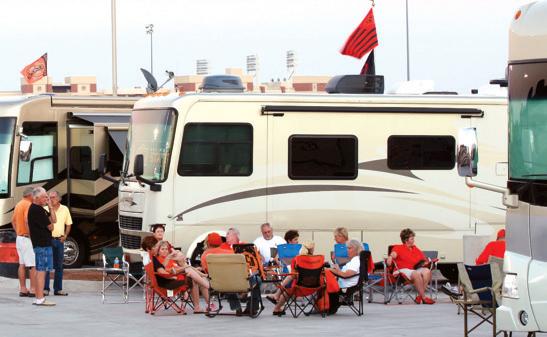

The Schultzes started out small but eventually graduated from camping trailers to their current rig. The RV community also had humble beginnings, spawning in a small lot on the west side of the Noble Research Center that held around 20 RVs.
Fast forward to the current lot, which sits just south of the COWGIRL SOCCER COMPLEX and accommodates upwards of 100 RVs. Led by donors Tom and Cheryl Hamilton, Art and Sylvia Couch, Jerry and Rae Winchester and the Schultzes, several donors pooled resources to reconstruct the lot, and among the biggest improvements was adding power for all vehicles to alleviate the need for generators, thus also doing away with the noise and exhaust that come with them.
“We just kept looking for better spots, and the university finally saw that there was a need for it and gave us a big lot,” Brad said. “It’s real convenient because we can park close to the stadium, and it’s self-contained with everything we need.”
And the best part for the Schultzes is the camaraderie it generates among OSU’s loyal fan base.
“It’s exactly like a big family,” Brad said. “We’ve met so many people and become such good friends with people we would generally never had the opportunity to meet. We come from a little town of 1,300 people and when you put 80-to-100 RVs in there with two or three people each, you really broaden your social circle considerably.
“Everybody looks forward to coming to that. It’s fun. Which is our experience with OSU — it’s fun.”
That fun extends beyond Stillwater. The Schultzes have taken their RV as far as San Diego and Tempe, Ariz., for football bowl games, and it’s been to every Big 12 city, save two.
“I’M NOT TAKING IT TO NORMAN OR MORGANTOWN, WEST VIRGINIA, BUT IT’S BEEN TO EVERY OTHER BIG 12 SCHOOL,” Brad said. “And we’ve been treated almost like royalty everywhere we go — people have been so good to us.
18
FALL 2014
“It’s exactly like a big family.”
“Where we live, the closest Wal-Mart is 70 miles away so driving is nothing — we don’t mind doing that. We spend a lot of time on the road, and we like it.”
Margie guesses she and Brad began making regular trips to Stillwater at the turn of the century, and that’s provided countless memories along with the hundreds of thousands of miles traveled.
Asked her favorite memory or team, Margie doesn’t hesitate — that would be the 2004 COWBOY BASKETBALL FINAL FOUR TEAM.
“That was a fun time,” she said. “We were there every step of the way, loud and proud!”
As for Brad, it would be hard to pinpoint just one.
“In football, every time that we beat OU,” Schultz said. “Every bowl game we went to that we won, especially the FIESTA BOWL
“Getting to know Coach (Eddie) Sutton and seeing what he had to go through when the plane crashed in Colorado, how he manned up and handled that. I don’t know that I could have done that.
“And we got to know Coach (Kurt) Budke very well and fell in love with those women and how hard they compete. We felt it was important to contribute to that.”
Staunch supporters of Cowgirl hoops — among their contributions to OSU Athletics was fully endowing a scholarship for the program — the Schultzes are also fond of coach Jim Littell, whom they have known since his days as a JUCO coach in Liberal, Kan.
“He took an impossible situation and made the university and all of us so proud of him and his team,” Schultz said.
While he’s been a lifelong fan, Brad said his support of OSU Athletics really ramped up when the Schultz’ daughter, JADE , was younger. And he helped make sure Jade, a recent OSU graduate, would carry on the family tradition of rooting for the Pokes.
“I told her when she was a senior in high school she could go to any college she wanted to, but if she went to Oklahoma State, I’d pay for everything,” Brad said. “So she made a good decision.”
Brad’s success as the third-generation owner of BAR S RANCH (Jade will become the fourth-generation owner) has allowed his family the opportunity to generously support the sports they are so passionate about. The Schultzes rank 33rd on the POSSE donor list and have given over $1 million to OSU Athletics.
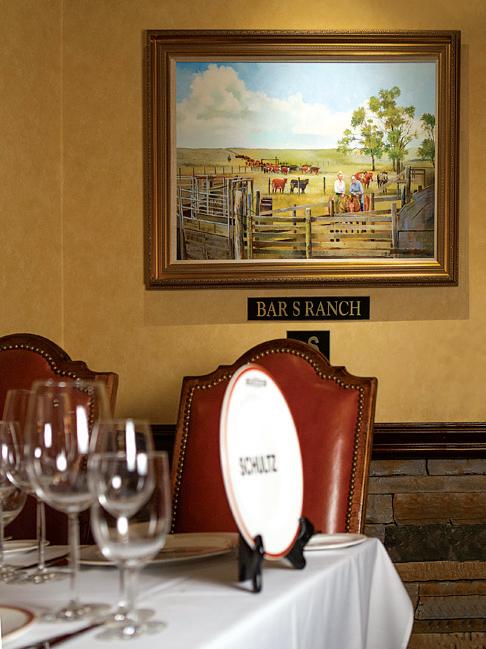
“The athletic department is pretty good at fundraising, and they’re not bashful at all about asking,” Brad said. “They’re awfully good to us, and we just fell in love with OSU. We spend a lot of time there, and it just made sense to help build something over there. We were eager to contribute what we could.
“We do very little — we don’t contribute enough to substantially change anything there. But collectively, like Boone (Pickens) said, if we can all put a little bit in there, look what happens.”
Brad says that type of generosity is something all OSU fans can take pride in, and the continued success of OSU athletics, not only in competition but also in upgrading facilities, is something he’ll continue to enjoy.
“ONE THING THAT REALLY STICKS OUT IS THE FACILITIES,” BRAD SAID. “WHEN I WENT TO SCHOOL THERE IN 1967 TO WHERE IT IS NOW, YOU WOULDN’T BELIEVE IT’S THE SAME UNIVERSITY.
“The change in the facilities and the fact that it’s still stayed a small town, somewhere I didn’t worry about sending my only daughter o to college in a strange university where I had to worry about her, I don’t know how other to say it other than the fact we just love OSU. What they put out is a fine student, a fine young adult.
19
The BAR-S RANCH TABLE at OSU’s RANCHER’S CLUB restaurant in the student union.
“AND THE SUCCESS THAT OKLAHOMA STATE HAS HAD … LIFE IS JUST GOOD BEING A COWBOY.”
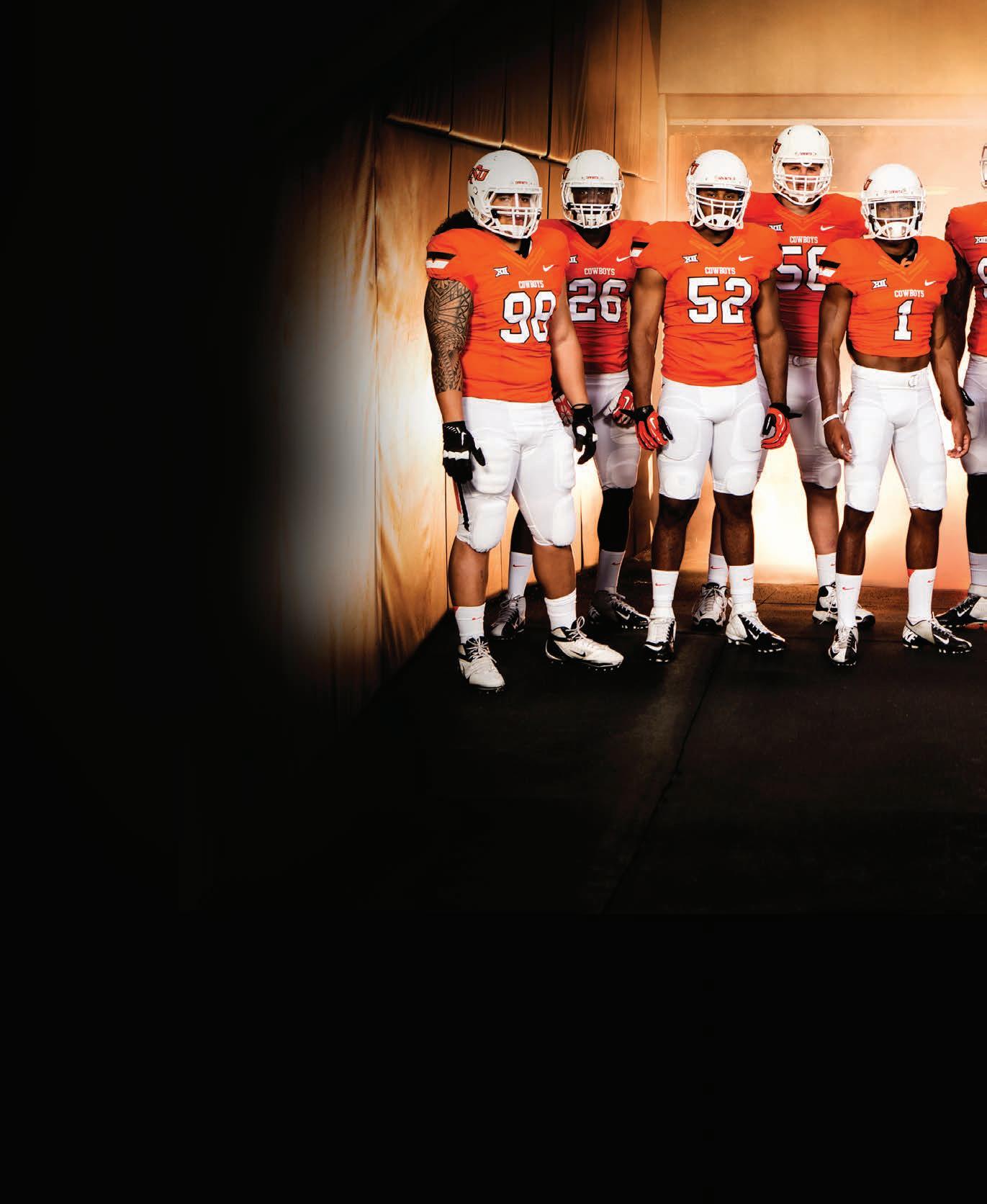
20 45 E. Turner & Cindy Davis 46 OSU Foundation 47 David & Julie Ann Ronck 48 Bryant J. Coffman 49 Garland & Penny Cupp 50 Jon & Suzanne Wiese 51 OSU President’s Offce 52 Jay & Connie Wiese 53 Jim & Vicki Click Jr. 54 Jameson Family, LLC 55 Andy Johnson 56 Lambert Construction 57 American Fidelity 58 Jerry & Rae Winchester 59 Atlas Paving Company 60 Blueknight Energy Partners, LP 61 KNABCO Corp 62 Calvin & Linda Anthony 63 Anonymous #3 64 Philip & Shannon Smith 65 Ike & Mary Beth Glass Boone Pickens 6,103,690 2 Malone & Amy Mitchell 3 Sherman & Eloise Smith 4 John Clerico 5 Dennis & Cindy Reilley 6 Michael & Anne Greenwood 7 W & W Steel Co. 8 Karsten Manufacturing 9 Ross & Billie McKnight 10 Dennis & Karen Wing 11 Robert A. Funk 12 Walt & Peggy Helmerich III 13 A.J. & Susan Jacques 14 Ed & Jana Evans 15 Bank SNB 16 Harold & Joyce Courson 17 Mike & Robbie Holder 68,421 18 Chesapeake Energy, Inc. 19 Ken & Jimi Davidson 20 ONEOK, Inc. 21 Bob Howard 22 Joe & Connie Mitchell 23 Watson Family Foundation 24 Kent & Margo Dunbar 25 Gary & Jerri Sparks 26 Vickie & Tucker Link Foundation 27 Patrick & Patricia Cobb 28 Richard & Barbara Bogert 29 Chad Clay 30 Anonymous #1 31 Greg & Rhonda Casillas 32 RCB Bank 33 OG&E 34 Brad & Margie Schultz 35 Joullian & Co. 36 Lew & Suzanne Meibergen 38,966 37 Neal & Jeanne Patterson 38 David & Tracy Kyle 39 Flintco, Inc. 40 James & Mary Barnes 41 Russ Harrison & Natalie Shirley 42 Sparks Financial 43 Anonymous #2 44 Bob & Kay Norris 1 PHOTOGRAPHY BY PHIL SHOCKLEY 66 David LeNorman 67 Mark & Beth Brewer 68 David Bradshaw 69 Richard & Joan Welborn 70 Mark & Lisa Snell 23,874 71 JS Charter Investments, LLC 72 SST Software 73 Barry & Roxanne Pollard 74 Griff & Mindi Jones 75 Thomas & Barbara Naugle 76 The Foothills Foundation 77 Mike Bode & Preston Carrier 78 Les & Cindy Dunavant 79 Sandra M. Lee 80 Harvey & Donna Yost 81 Doug & Nickie Burns 82 Bank of Oklahoma 83 Southwest Filter Co. 84 Larry Albin 85 K.D. & Leitner Greiner FALL 2014
the 150
HOW
OSU ATHLETICS PRIORITY POINT SYSTEM
The PRIORITY POINT SYSTEM provides a fair, consistent and transparent method of providing benefits to donors in exchange for their financial investments in OSU athletics.
DONORS GAIN POINTS THREE WAYS:
CONTRIBUTIONS: All current and lifetime contributions (cash or stock) are worth 3 points per $100 donation. Planned (deferred) gifts in the new Leave a Legacy Endowment Campaign will receive 1 point per $100.
COMMITMENT: Donors will earn one point each year for purchasing season tickets (one point per sport annually), as well as one point for each year of POSSE donations.
CONNECTION WITH THE UNIVERSITY: Donors (or their spouses) who are OSU Alumni receive a one-time 10 point bonus, as do OSU faculty/staff and letterwinners.
Points never diminish and will carry over to subsequent years. Donors retain all previously earned Priority Points in their giving history. For questions about the POSSE Priority Point System, email posse@okstate.edu or call us at 405.744.7301.

21
POINTS RANK 162,677 top 5 31,366 50 18,630 100 7,330 250 3,597 500 1,711 1,000 604 2,500 152 5,000 46 7,500
OF JUNE 24, 2014
DO MY POINTS RANK? AS
101 Ameristar Fence Products 102 Ed & Kathy Raschen 103 Scott & Kim Verplank 104 The Bank of America 105 BancFirst 106 MidFirst Bank 107 Austin & Betsy Kenyon 108 Johnsons of Kingfsher 109 Anonymous #15 110 John & Gail Shaw 111 Tatum Family 112 Russ & Julie Teubner 113 Stan & Shannon Clark 114 Larry Bump 115 Terry & Martha Barker 116 Bill & Claudean Harrison 117 Brent & Mary Jane Wooten 118 Jim Hester 119 OSU Alumni Association 120 Brad & Leah Gungoll 121 Bob & Mary Haiges 122 Mike & Judy Johnson 123 Anonymous #4 124 Chandler USA, Inc. 125 F & M Bank & Trust 126 OSU Business Offce 127 AEI Corporation - Oklahoma 128 Randy & Pati Thurman 14,715 129 Tom & Sandy Wilson 130 Anonymous #14 131 Chip & Cindy Beaver 132 Jay & Fayenelle Helm 133 Chris & Julie Bridges 134 Thomas Winton 135 James D. Carreker 136 Drummond Investments 137 Fechner Pump & Supply 138 James H. Williams 139 Mustang Fuel 140 Jack Bowker Ford 141 Vionette & John Dunn 142 First Capital Bank 143 Bill & Karen Anderson 144 Robert & Sharon Keating 145 John & Patti Brett 146 Randall & Carol White 147 Steven Farris 148 Norman & Suzanne Myers 149 Shaw’s Gulf 150 Barber-Dyson Ford Lincol-Mercury 94 Emrick’s Van & Storage 95 A-Cross Ranch 18,338 96 Baab Legacy, LLC 97 Z-Equipment, LLC 98 Henry Wells 99 John & Jerry Marshall 100 Ed & Mary Malzahn AS OF JUNE 24, 2014 86 Darton & Jamie Zink 87 Ron & Marilynn McAfee 88 Bryan Close 89 Steve & Jennifer Grigsby 90 OSU Center for Health Sciences 91 Diane & Steve Tuttle 92 Jerry & Lynda Baker 93 The Oklahoman

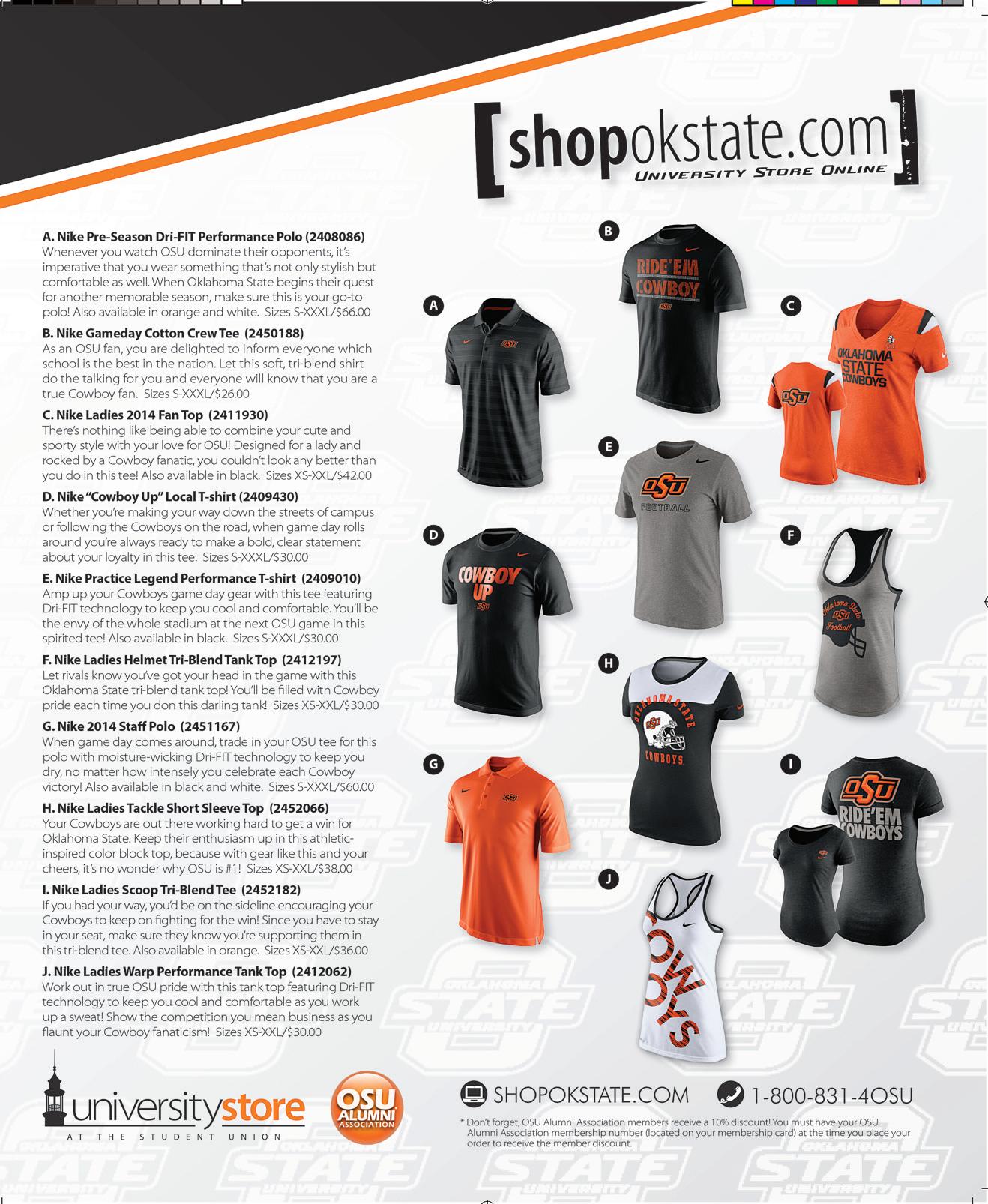
Mike Gundy THE FIRST DECADE
 STORY BY KEVIN KLINTWORTH
PHOTOGRAPHY BY GREG BULLARD, GARY LAWSON, JAMES SCHAMMERHORN, PHIL SHOCKLEY AND BRUCE WATERFIELD
STORY BY KEVIN KLINTWORTH
PHOTOGRAPHY BY GREG BULLARD, GARY LAWSON, JAMES SCHAMMERHORN, PHIL SHOCKLEY AND BRUCE WATERFIELD
24
FALL 2014
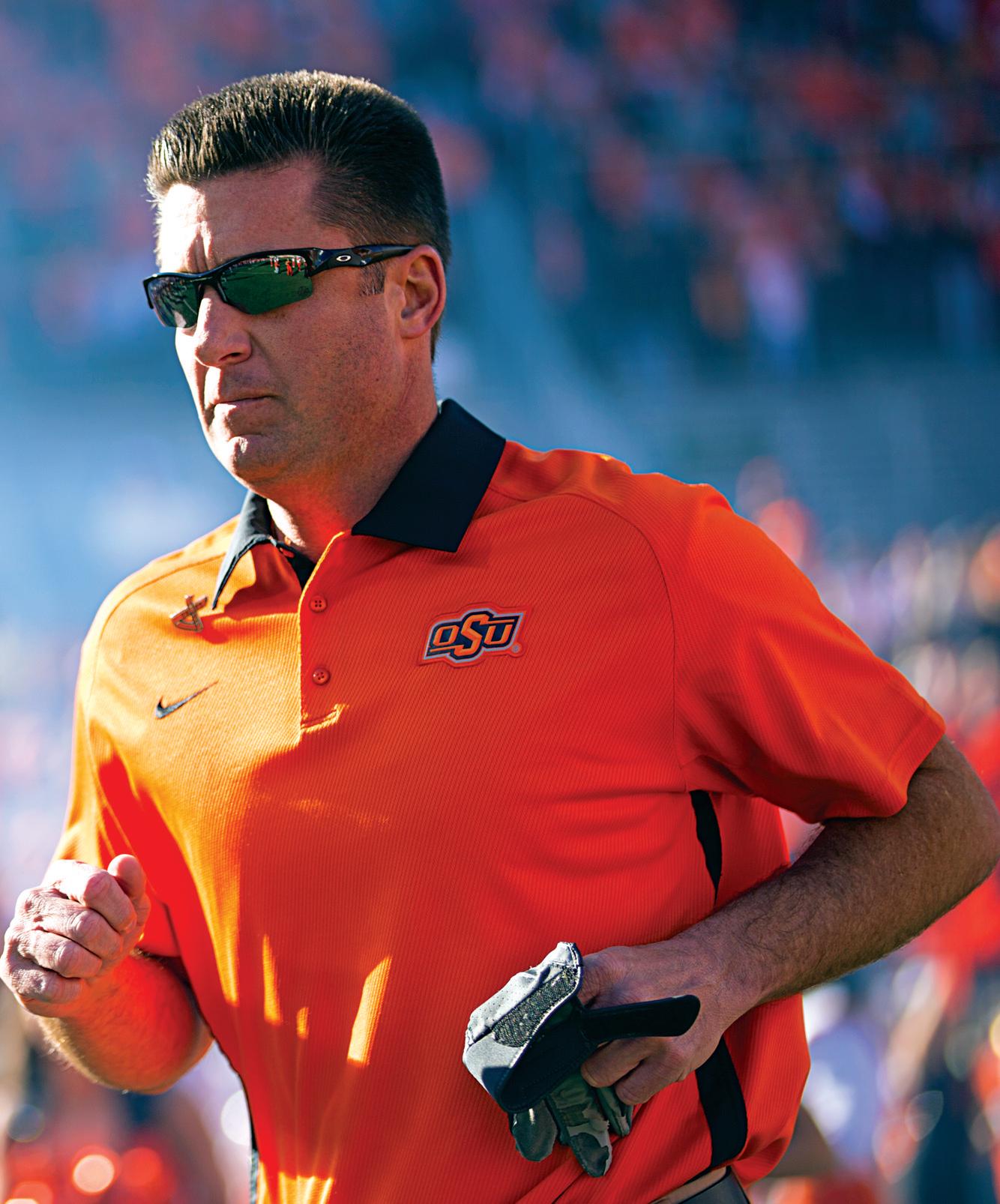
25
IN THE FALL OF 2014, MIKE GUNDY WILL ENTER HIS 10TH SEASON AS THE HEAD FOOTBALL COACH AT OKLAHOMA STATE.

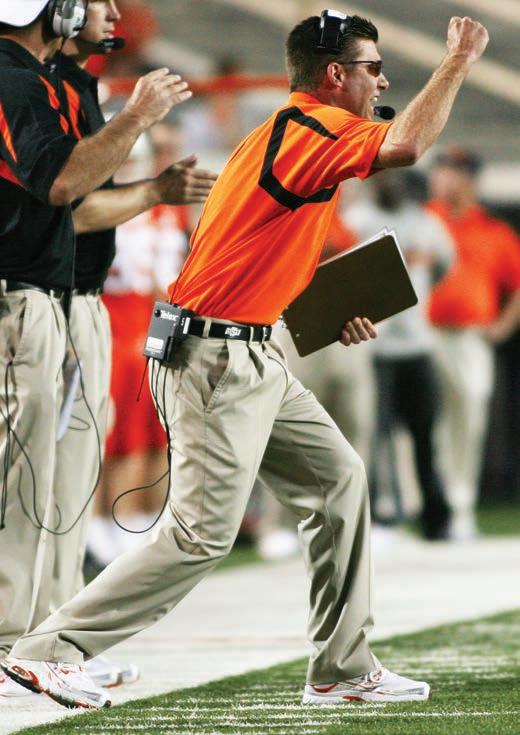
Gundy is the WINNINGEST COACH IN THE PROGRAM’S HISTORY with 77 victories. Only two coaches, Pat Jones and Jim Lookabaugh, have had longer coaching tenures in Stillwater with 11 years each. In 2010, Gundy was the BIG 12 COACH OF THE YEAR, and in 2011 he was the NATIONAL COACH OF THE YEAR. POSSE Magazine recently visited with the former Cowboy quarterback about his tenure as the OSU football boss and the future of the program.
POSSE: As a now veteran head coach, how prepared do you think you were to assume that role in 2005 when you became one of the youngest head coaches in the country?
Mike Gundy: I would say I was a very average candidate, especially when you look back at the information you gather and learn and process over a period of time as a head coach. And the patience that you develop in dealing with a number of di erent personalities from coaches to administrative support to players, I was probably 15 or 20 percent as prepared in regards to what I am now — and I’m still not the finished product. If I became a new head coach now, I think I would have a better feel and understanding and appreciation for administrators and athletic directors and the chance they take by hiring younger coaches. It’s a tremendous risk. If it works out, it’s a benefit with a big upside. You have a young coach that’s got a lot of enthusiasm and can grow on the job. However, there’s always a chance that it won’t (work out) because you have a young guy who may not be able to deal with the demands and all the personalities and all the pressures on your plate as a head coach.
PM: There would definitely seem to be a limit in regards to how prepared you could be as a first-time head coach. An o ensive coordinator and a head coach have two vastly di erent job descriptions.
MG: I think you’re right. It’s di erent than anything you’ve done leading up to becoming a head coach. And one thing I’ve always said and really believe that has helped me is this: I coached 11 years before I was ever on a sta that had a winning record. And I when I look back, I think I learned more from those teams and those sta s than maybe from a sta that had a winning record and was able to get into a bowl game. Because I saw a lot of mistakes made that I thought, at some point, I would like to eliminate if I ever had the opportunity. You learn on the job and the statement is true in that there’s not a lot of preparation other than what you believe in, in regards to coaching young men and your own personal beliefs and philosophies. I think you can have some of that instilled in you from other coaches. But as far as handling the entire operation on a daily basis, there’s not really any preparation.
26
FALL 2014
PM: Do you have someone that you consider a coaching mentor?
MG: I think Pat Jones has probably had as much influence on me as anyone, just the way that he prepared us for everyday life when I was a player and just the toughness part of football. And I was able to grow and grab and hold onto things from all of the coaches (I worked for). My first head coach was obviously Coach Jones. And then Bob Simmons had some good ideas and things that he had worked on with BILL M c CARTNEY (at Colorado). And then CHUCK REEDY at Baylor had some di erent ideas from his days with DANNY FORD at Clemson and then RON VANDERLINDEN at Maryland. I thought he was a great recruiter and great with parents, and then, obviously I came back here to work for Les Miles. His work ethic and o ensive mind had a lot to do with my career. So I don’t know that there was any one person. When it comes to the thick and thin, ultimately, I’m going to do what I want to do so maybe I got a little bit from each coach.
PM: If someone in 2005 had told you where the OSU program would be in 2014, would you have been happy?

MG: I don’t think there’s any question I would have been. I felt like this was going to be a six-to-eight year project for us to get to the point that we could compete for a conference championship. At times, the public and people outside of the program would say ‘well that’s way too long.’ We’ve had some good years here at Oklahoma State, historically, but we have had a number of really di cult years. In my opinion, in college football, you don’t change tradition and perception in three or four years. And I’ve said this before, we have just barely started to change the way people look at Oklahoma State football. And it will take it another 10 or 15 years before it will stick, and that’s why we still have a lot of work ahead of us. But if someone had told me we would be in a situation in which we had won a conference championship and competed for a couple of more, been ranked in the top 10 several years and in the top 25 consistently,
gone to a number of bowl games, then I would have said we’ve done pretty well up to this point.
PM: What do you remember about your first game as head coach against Montana State?
MG: I’ve said this before many times, but I guess I wasn’t smart enough to realize just how bad we really were. We just weren’t any good. We had good kids and all of that, but we didn’t have a system in place. We didn’t have structure, accountability or discipline. We were learning a new o ense with a new head coach and coordinators. There was just a lot out there. They (Montana State) were a decent team that year. They had a decent quarterback for any level (the reigning Canadian Football League O ensive Player of the Year TRAVIS LULAY). We couldn’t move the ball. We couldn’t score points. I look back at it now and think how lucky we were to get out of that game with a win. It was 15-10 or something and we just weren’t very good. We had a long way to go.
27
“Even when I was a young coach I knew it was going to be a long process.”
PM: Was there a point when you thought that success, at least at the level you envisioned, might not happen at OSU?
MG: Not really, and I’ll tell you why. I guess I’m repeating myself here, but I wasn’t smart enough to realize that we weren’t very good and that it couldn’t happen here. I knew that Mr. Pickens and Coach Holder were committed to trying to win
in football. And that others would follow their lead. We were trying to build our facilities. We had long-range plans for an indoor facility. When I look back, I think our coaches bought into it. I feel like one thing I did well early on was to never give anyone any reason to believe that it wasn’t going to work in the long term. We had all kinds of issues along the way. We lost (linebacker) Orie Lemon for a season. We
GUNDY MILESTONES

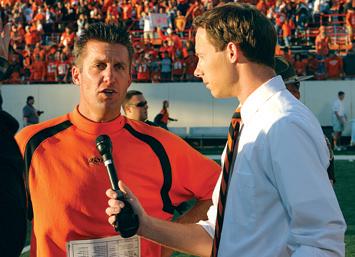
Cowboys get their first true road win under Gundy by rallying from a 17-0 halftime deficit to defeat Kansas, 42-32, just one week after a heartbreaking road loss at Kansas State
lost (running back) Kendall Hunter. We lost (receiver) Dez Bryant. We had a lot of issues. But I thought, or hope, I never let anyone think in terms of anything other than success. I wasn’t smart enough to grasp that we weren’t very good. I just kept pushing forward and to use a cliché, I just never took my eye o the ball. That might be the upside of being a young coach. Now that I know a lot more about the job and am more mature and am a little smarter about the situation, I might not be as good at looking at the big picture. Even when I was a young coach I knew it was going to be a long process. We had to condition our players. We had to get more talent at some key positions. And then once we started doing pretty well, we started losing coaches. In years three and four, we began losing assistants who were becoming head coaches, and that can be a di cult obstacle to overcome. But to answer your question, if I had known early in my career what I know now, I’m not sure I could have withstood the pressure knowing we had such a long road ahead of us.
Oklahoma State knocks o Nebraska, 41-29, giving OSU two-straight home
28
first time
wins over the Huskers for the
ever
Picks up his first Big 12 victory and first win over a ranked opponent when the Cowboys upset No. 13 Texas Tech,
Wins his first game as head coach when the Cowboys defeat Montana State, 15-10 Named the 22nd head football coach in Oklahoma State history 1/3/05 9/3/05 11/12/05 10/14/06 10/28/06 FALL 2014
24-17
PM: At what point did you start thinking success was attainable?
MG: The year that we went to the Insight Bowl (2007). I think we played the second-most di cult schedule in the country in someone’s opinion (the NCAA ranked the Cowboys’ schedule as toughest in the country based on the cumulative record of OSU’s opponents). And we ended up going to a bowl game. On the field for that season, just o ensively speaking, we had Dez Bryant, Zac Robinson, Russell Okung, Dantrell Savage, Kendall Hunter and Brandon Pettigrew. So we played on o ense that year with six or seven NFL guys. And I guess I realized at that point that we were good — in fact pretty good. The next year I think we played in the Holiday Bowl against Oregon, which would be playing in the national championship game in a year or two. We were ahead of them at halftime. But late in that 2007 season was when I started realizing that we were pretty good and could be a good program.


PM: Was there a key player or recruit that changed the perception of Oklahoma State.

MG: Dez Bryant. Dez was very highly recruited, but he got his grades late in the year so there was some concern about that with some schools. But everyone still wanted him. When we got him and he showed up as a freshman, it kind of brought back memories of when I was in school and first saw Hart Lee Dykes. Dez was just a different player on the field. Those guys can change a game for you. At Oklahoma State and maybe other schools across the country, if you have a certain number of guys that understand your situation and system and play hard, and then you sprinkle in a few NFL players, you are good enough to win football games and a championship, like we did with (Brandon) Weeden and (Justin) Blackmon and those guys.
I think Dez was the player that really changed us from a recruiting standpoint and what he brought to the field instantly. In the first game of his sophomore year we played at Washington State, and we just kept throwing balls up to him and he just kept making plays.
Oklahoma State picks up a landmark victory with its 28-23 win at No. 3 Missouri
Following the win in Columbia, the Cowboys crack the Associated Press top 10 for the first time since 1988, checking in at No. 8
OSU’s 34-6 win over Baylor was rather routine, but the victory improved OSU to 7-0 for just the second time in school history
29
Oklahoma State wins in Lincoln for the first time since the final weeks of the Eisenhower administration and for just the second time ever with a 45-14 shellacking of Nebraska
12/28/06 10/11/08 10/12/08 10/13/07 10/18/08
The Cowboys get their first bowl win since 1988 with a 34-31 victory over Alabama in the Independence Bowl
PM: Was there a specific game that you rank as a game changer?
MG: Things really started to change the year that we opened by losing at Georgia (2007). We also lost at Troy. But in the middle of the season we beat Texas Tech and later we played better and finished up strong but lost to some really good teams before winning our bowl game. That was the start. Then I think it was the next year we won at Missouri when it was second or third in the country (actually both, depending on the poll). That was really a big hurdle for us. We were waiting to win that one big game. It was on national TV in prime time, and they were a really good team. In fact, I don’t think they had had a three-and-out all year with their first-team o ense on the field. We showed up on defense and made some plays on o ense. They were probably a better team than we were, I felt like, but we were able to go out and play well and win on the road, and I think maybe that was the biggest hurdle for this program. It was in Columbia when our players started to believe that they were as good as anyone and could compete with some of the top teams in the country.

PM: What do consider your recruiting philosophy? What is your compass when recruiting?
MG: I think the most important thing we have done at Oklahoma State is that we understand our geography. We understand that there are better players than what people think in Oklahoma and so we want to be very thorough in this area and the same with Kansas. And then we want to be very strong in Texas just based on sheer numbers. You have so many more people living there and so many more people playing ball. So the geographical concept has been very important to our success.
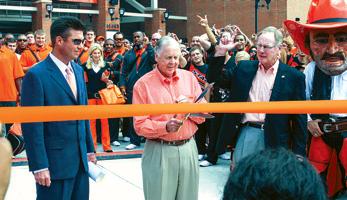
PM: You also seem to do your own thing.
MG: There is a growing interest in recruiting services, and they are all online now with instant updates and evaluations and it really gets the fans involved. One of our keys is not to be influenced by outside sources. You have to go in and establish right o the bat if the young man really likes to play football. If he doesn’t, it doesn’t matter how talented he is because he’s not likely to make it because of the

commitment. And then we just have to evaluate. For instance, Russell Okung was 245 pounds and you could tell he would be 290 someday. If he had been 280 pounds in high school he would have probably been committed to a tradition-rich program. And so we have to project players in certain areas. Sometimes we take running backs that aren’t as tall and so on. But our focus has been ‘Does he really like football? Will he compete? Is it important to him?’ And for the most part that’s helped us have success.
PM: Does being here 10 years have any sort of significance to you?
MG: I think so. You know we broke the all-time wins record and have had so much success and broken just about every coaching record and a ton of team and individual records, and none of that mattered much to me. But I think the longevity of coaching at this level at a school where it takes a lot of work is pretty special to me. It takes a lot of work at every school, but it takes a lot of time and e ort and thinking outside the box to win at Oklahoma State. I was asked the other day by sports writers about longevity. It’s funny how
30
11/20/10 11/6/11 11/12/11 12/29/10 11/30/10 9/5/09
OSU reaches the 11-win mark for the first time in school history with a 36-10 thrashing of Arizona in the Alamo Bowl
Mike Gundy is named Big 12 Coach of the Year
A 48-14 win over Kansas clinched OSU’s first 10-win season since 1988 and also clinched a share of the Big 12 South championship
Oklahoma State is ranked second in the AP poll, the highest ranking in school history
Oklahoma State’s 66-6 win at Texas Tech improved OSU to 10-0 for the first time in school history
FALL 2014
Oklahoma State re-dedicates Boone Pickens Stadium with a 24-10 win over No. 9 Georgia
you go from five years ago with all of those questions about whether you could make it as a coach and then at 10 years the questions focus on how long will you stay here. You become a kind of a staple, and for me I would like to coach here 20 years. Ten years has been really special, but I would really like to do it another 10.
PM: You have had the same athletic director for 10 years. That’s somewhat rare.

MG: There has been a lot of talk about Coach Holder and I, but we really work pretty well together. We have had our issues on scheduling over the last two or three years and everyone knows that, but we have worked really well together on a lot of issues. As long as he is around here, it makes my job fairly easy because of our relationship. He understands winning and football, and he understands Oklahoma State.
PM: Talk about your philosophy when it comes to hiring coaches and how that process can re-invent a program.
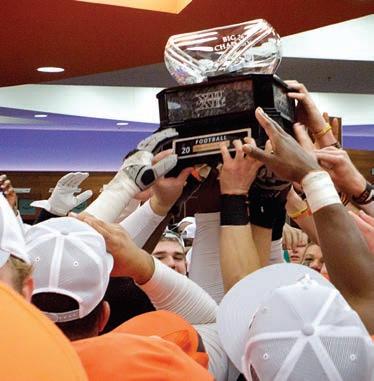
MG: My philosophy has changed since year three or four. I have learned if you hire a smart coach who is loyal, likes coaching the kids and is willing to work hard, we can
teach them and train them in our system. We have had to replace so many coordinators on both sides of the ball over the last four or five years. That has been my most di cult task as a head coach — replacing quality coaches when quality coaches leave. I think the impact that a coordinator,


an assistant coach too, but more importantly a coordinator, has on a program is immense. I don’t think most people realize the impact a coordinator has on a program. Just like in the car business where you have someone in charge of sales and someone overseeing maintenance.
Oklahoma
31
11/23/13 10/20/12 1/2/12
State’s 49-17 romp past No. 3 Baylor in front of the first sellout crowd in Boone Pickens Stadium history assured OSU of its sixth 10-win season
12/3/11
A 31-10 win over Iowa State is the 63rd in Gundy’s head coaching career, making him the winningest coach in OSU history OSU nips No. 4 Stanford, 41-38, to win the Fiesta Bowl and clinch the school’s first 12-win season
1/8/12
OSU blasts the Sooners by a 44-10 score to assure itself of an outright Big 12 title
Gundy is honored as the Eddie Robinson National Coach of the Year by the Football Writers Association of America at an FWAA reception in New Orleans
The coordinators have their areas and they oversee all of it. I’ve changed my philosophy in that sense. I used to be involved with the o ense some when I started, but now I’m not going in there all the time and calling the plays. I establish our philosophies and my feelings on where we are regarding personnel and then let them coach. A smart guy who is willing to buy into our system and work hard is really the direction I’ve gone in hiring coaches.
PM: Like all successful coaches, you have been approached by other potential employees over the years …
MG: I think that like most people, not just coaches, when you’re wanted or in demand that it makes all of us feel better. I went through a time when jobs were intriguing just because the prevailing thought in our profession is that if you are at a school like Oklahoma State and you win and win big, people think you are really a quality coach. And if you go and
do that at another school you are a Hall of Famer. So those things have crossed my mind before. But then I think about the hard work we have put into this program and into Oklahoma State, and the things that I have here … it’s usually not greener on the other side of the fence. And this has become a top 25 job in my opinion. We can debate that, but the goals and patterns and trajectory have been established that shows if it’s not a top 25 job, it certainly can be.
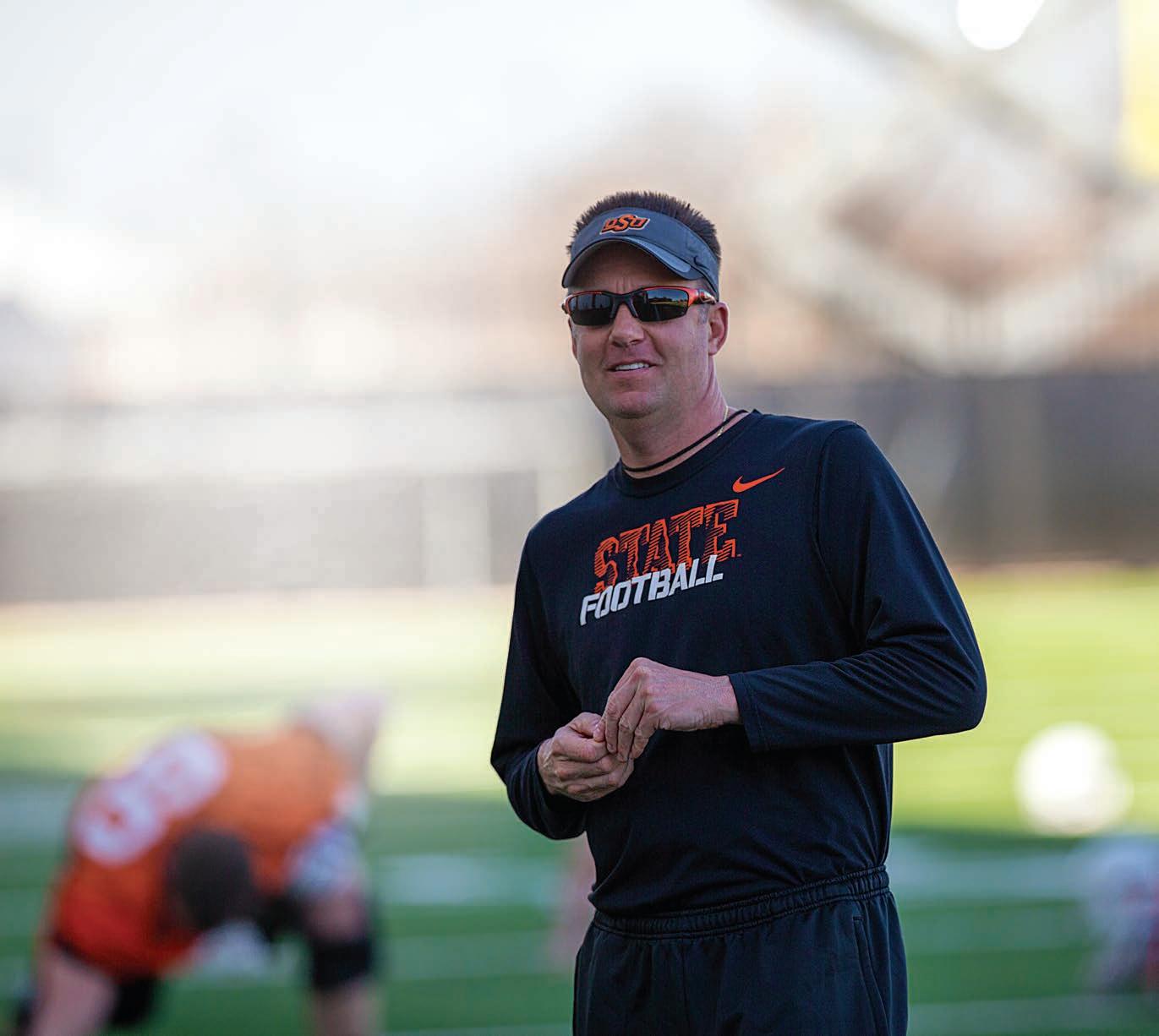
32
FALL 2014
“There are a lot of calls that come in on jobs. I don’t really have any interest in other jobs that might have intrigued me three or four years ago.”
PM: Which leads to more job speculation?
MG: When we have had success here, there are a lot of calls that come in on jobs. I don’t really have any interest in other jobs that might have intrigued me three or four years ago. I’m comfortable now in being fully committed in finishing here and coaching here another 10 years.
PM: The professional leagues always seem to be intriguing to football and basketball coaches. As a basketball coach once explained about the appeal of professional leagues, it is basketball all the time. No recruiting, no fundraising, no red tape.
MG: I had multiple interviews with two di erent NFL organizations … extensive and in depth. There was some interest
because I really didn’t know anything about the way an NFL franchise operates. The NFL is completely di erent, which I learned. They were great learning experiences for me, and I kind of backed out because with those guys when you get to a certain level of interviews it becomes really serious and that wasn’t something I felt like I wanted to do. It changes really fast with the NFL.

33
“I’m fully committed in finishing here and coaching here another 10 years.”
Goals In Mind
OURTNEY DIKE can’t
Growing up in Edmond, Okla., Dike recalls being somewhat of an anomaly on the playground — other kids were playing hopscotch or basketball or swinging and climbing. But not Dike, who was always on the lookout for someone who wanted to kick a ball.
“I REMEMBER PLAYING ALL THE TIME, EVERY DAY, AND I WAS ONE OF THE FEW WHO JUST WANTED TO PLAY SOCCER. THAT’S WHEN I KNEW IT WAS MY THING,” DIKE SAID. (PRONOUNCED DEE-KAY) comes by her passion for soccer honestly. Her parents, Vincent and Jacinta, are natives of Nigeria, an African nation that like much of the world is crazy for the sport.
“Soccer is something I was basically born into,” Dike said. “I remember always being on the sidelines at my brother’s games, and at home it was either soccer or the news on TV.
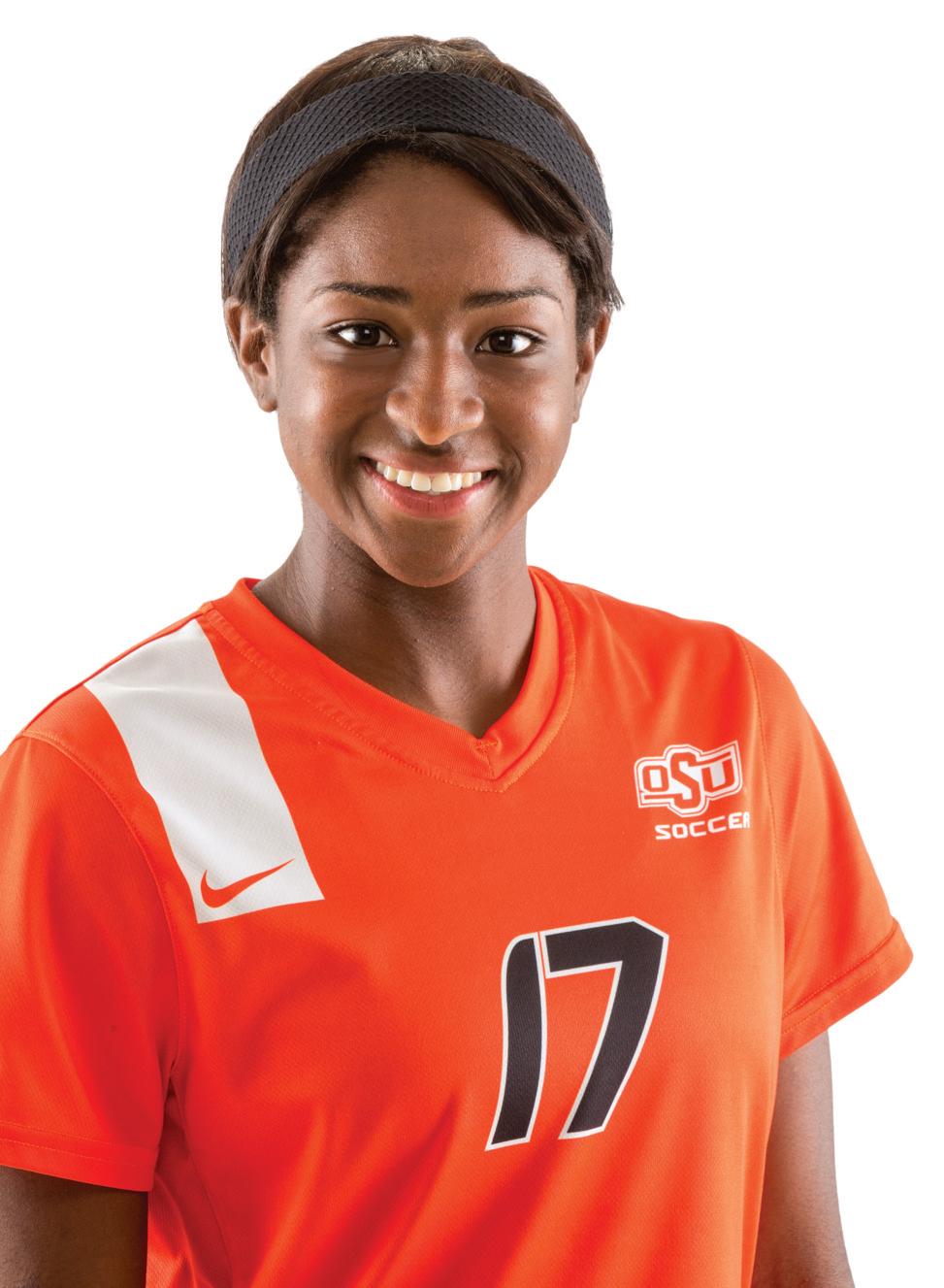
“We definitely fell into it early. I had a choice, but I looked up to my older brother and wanted to be like him so soccer was what I did.”
 WADE McWHORTER
PHOTO / PHIL SHOCKLEY
WADE McWHORTER
PHOTO / PHIL SHOCKLEY
34 FALL 2014
remember not wanting to play soccer.
In her older brother, Bright, she had an impressive performer to emulate.
Bright starred collegiately at NOTRE DAME before embarking on a MAJOR LEAGUE SOCCER career that began with Portland and now has him in a Toronto uniform. Also a member of the NIGERIAN NATIONAL TEAM, he would have been on NIGERIA’S 2014 WORLD CUP roster had he not su ered an Achilles injury in February.

“(BRIGHT IS) THE ULTIMATE INSPIRATION FOR ME. HE’S WORKED SO HARD ALL HIS LIFE AND PUT ALL HIS EFFORT AND ENERGY INTO PLAYING SOCCER,” DIKE SAID. “When he got injured, it hit me hard, but it motivates me to not take things for granted. It makes you want to always play your best and make the most of your opportunities.”
Following her older brother’s example, Dike did just that in her first season in an Oklahoma State uniform in 2013.
She started 21 of OSU’s 22 games as a freshman and racked up 13 goals, four assists and 30 points, finishing second in the Big 12 Conference in both goals and points.
“(DIKE) DID EVERYTHING WE ASKED OF HER AND MORE,” SAID OSU HEAD COACH COLIN CARMICHAEL. “To get 13 goals is amazing when you consider our schedule and the di culty of the competition we played. There weren’t many games in there where
she had an opportunity to score three or four goals. It was all done against very good opponents.
“She did everything we hoped she could do. We didn’t know she would do that, but we knew she had the ability to be special.”
Dike’s rookie campaign saw her tie for the fourth-most goals in a single season in program history, while also ranking in the top 10 on the Cowgirls’ single-season points chart.
But if you think the Cowgirls’ 5-foot-6 forward is content with what she accomplished in 2013, you don’t know Courtney Dike.
“It just puts more pressure on me to do well. I definitely want to do better than I did last year,” said Dike, who was named to the All-Big 12 second team and also earned a spot on the league’s all-newcomer team.
“I know I can do it, and it’s a challenge I’m excited, to see how far I can go and how much I can improve.
“It seems like I did well, but there’s so much more I could have done. I’m excited to see what I’ve learned and how I can improve, whether that’s scoring more goals or helping my teammates score. Whatever I can do to make our team better is my focus.”
Dike’s impact on OSU was immediately felt in her first season — her impressive play helped the Cowgirls turn in a 9-7-6 record and return to the NCAA Tournament.
Needless to say, Carmichael was glad to have Dike in the mix, something that almost didn’t happen.
Carmichael and his sta thought highly of Dike, who starred at Edmond North High School and the Oklahoma Football Club. But with a recruiting class filled and already including several attacking players, the Cowgirls didn’t have the scholarship money to o er — at least initially.
But sometimes things have a way of working out, and in OSU and Dike’s case, it did just that, and the opportunity to bring Dike’s talents to Stillwater came to fruition.
Even then, however, Carmichael wasn’t quite sure what he was getting in Dike.
“We knew her upside was huge — she’s a tremendous athlete, she’s very strong. We were just curious how that raw athleticism would translate to the college game,” Carmichael said.
“Yeah, she kind of proved that it translated pretty well.”
Opportunities like the one a orded Dike are a big reason why Courtney’s parents immigrated to the United States in the early 1980s.
Vincent played soccer through high school while Jacinta was one of the topranked badminton players in Nigeria. The couple came to the United States to further their education and job opportunities, and they chose Oklahoma as their U.S. destination simply because Vincent’s brother had a friend there and they would know someone upon arrival.
35
“To get 13 goals is amazing when you consider our schedule and the dif culty of the competition we played.”— COLIN CARMICHAEL
“It’s a huge blessing for me to be (at OSU). I never expected it and when it happened and I got here … it’s the best atmosphere. The coaches are honest and personable, and OSU is just a great place to be. I de nitely have all the resources I need to become the person I want to be, either with my degree or with soccer.”
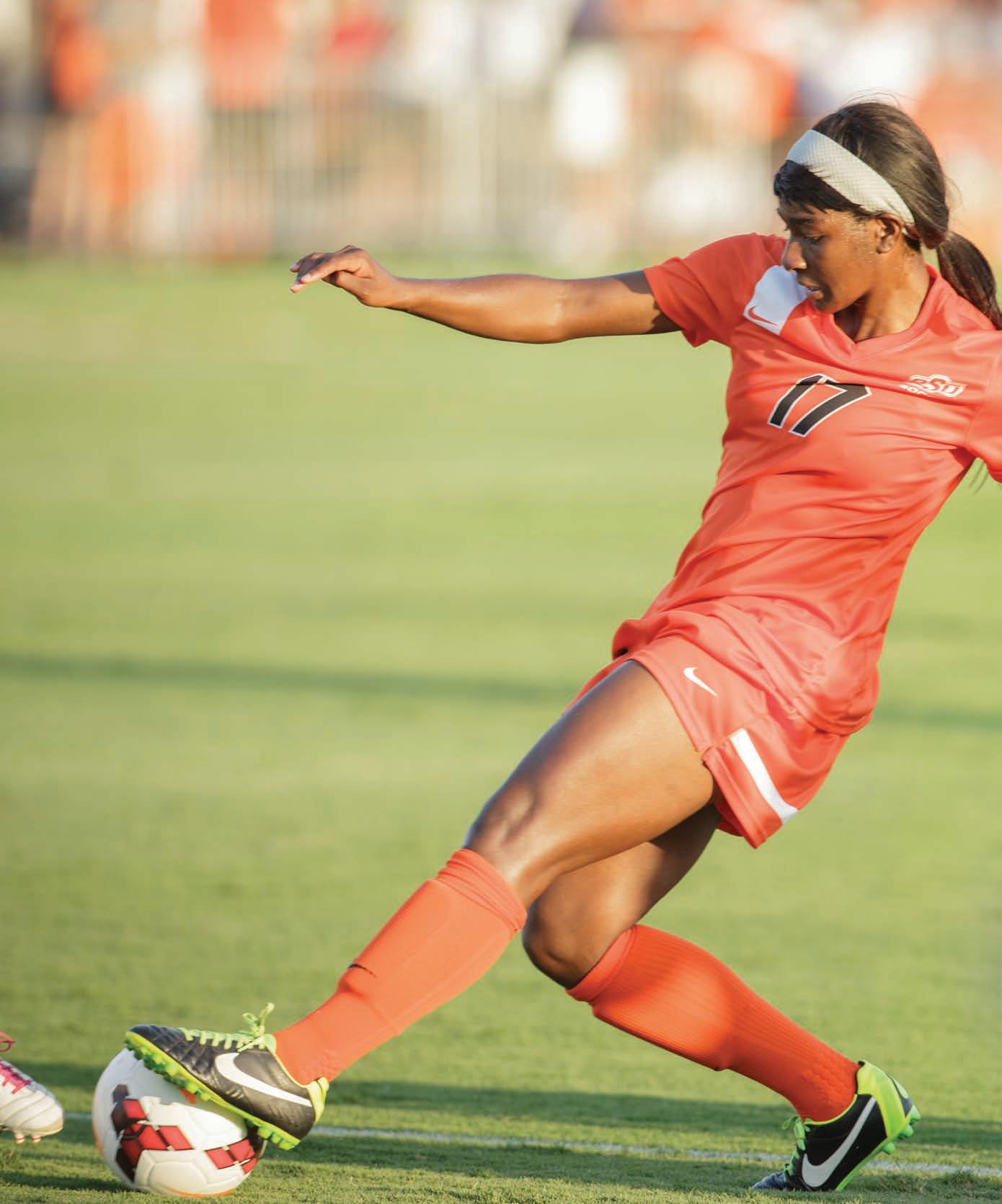
36
PHOTO/GARYLAWSON
FALL 2014
Dike experienced her Nigerian ancestry for the first time in 2012 when her family visited the country at Christmas. She had been there as an infant but this trip a orded her the chance to meet many of her African relatives.
“It was great getting to see the people my parents grew up with and getting to know everyone that we’d never met,” Dike said. She also got to experience the country’s passion for its — and her — sport of choice.
“THERE WAS A LOT OF SOCCER PLAYED — ALL NIGHT, WHEN WE WOKE UP, THERE ALWAYS SEEMED TO BE A GAME GOING ON,” DIKE SAID. “IT WAS AMAZING.”
Dike’s Nigerian roots may also help her aspirations of following in her older brother’s footsteps. She was recently invited to attend training camp with the Under-20 Nigerian national team.
To further her national team opportunities, Dike’s mission is to keep doing what she’s done her whole life — score goals. She had 94 of them in four seasons at ENHS and countless more at the club level before her baker’s dozen for the Cowgirls a year ago.
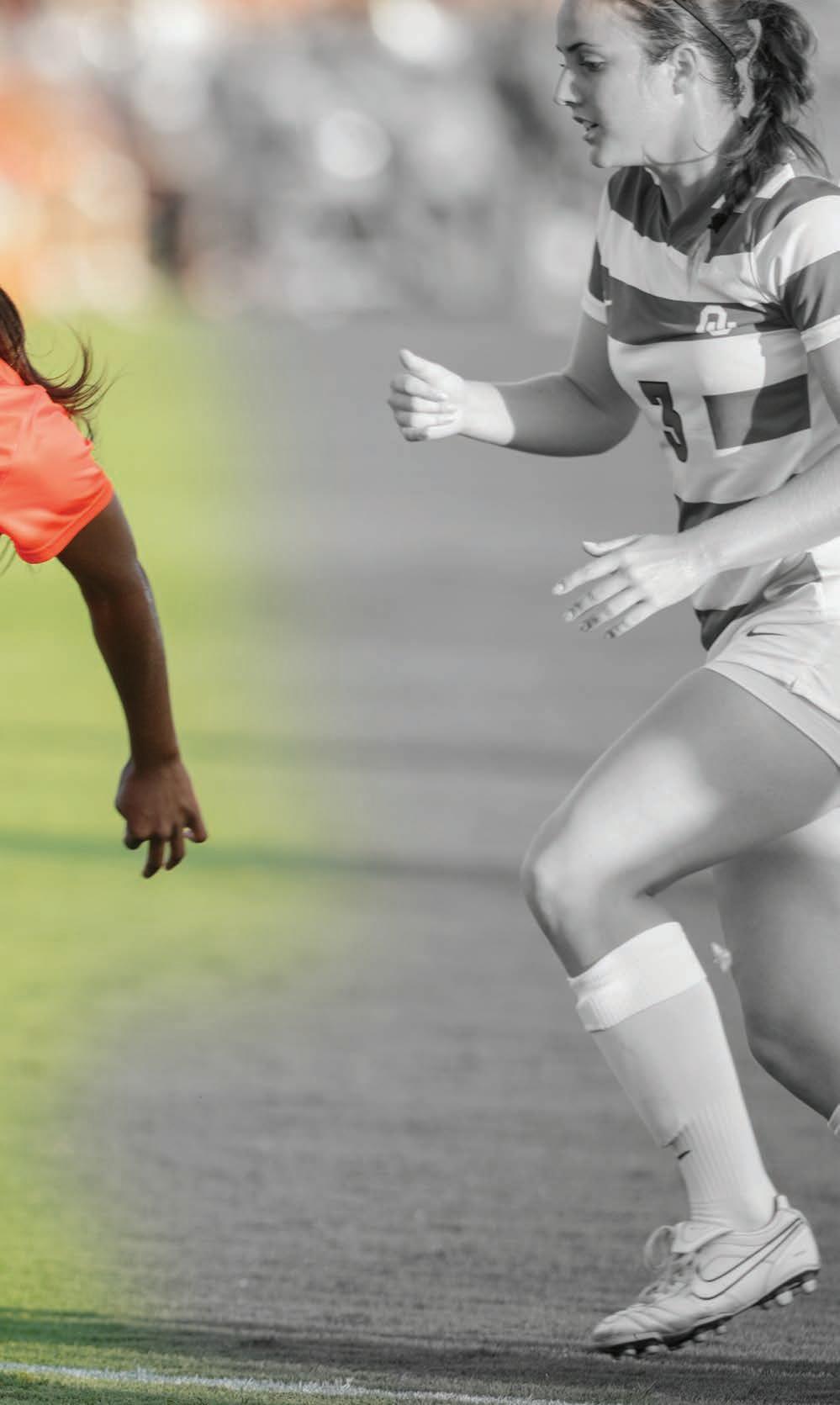
Not surprisingly, Dike ranks finding the back of the net foremost among her favorite aspects of playing the game.
“I love to score — I love that feeling,” Dike said. “A goal is just the icing on the cake, the celebration of all the hard work leading up to it.
“And I love the teamwork and that even within a team, you can be yourself and be creative. I wouldn’t like completely depending on myself or me completely depending on someone else. It’s definitely a fun mix.”
The jubilation of scoring goals playing the game she loves is something Dike aims to continue for three more years in Stillwater. Carmichael has challenged her.
“She raised the bar so high as a freshman, she’s going to have her work cut out for her to keep that level going” — and she’s ready to meet that challenge head on,” he said.
“Going in as a freshman, you don’t know what to expect, and I think I definitely surprised some people,” Dike said. “I think I did well, but I definitely feel I have a lot more room to grow and improve. I know what I need to work on — that became pretty obvious as the season went on.
“You don’t get very many chances so you better make the most of them. I’m working on consistency in my level of play so I can get more of those chances.
“I HAD A GOOD SEASON, BUT THERE ARE BETTER ONES TO COME FOR SURE.”
Should Dike continue on her current path, she will one day challenge OSU’s career record for goals, which stands at 35 and is held by former ALL-AMERICAN YOLANDA ODENYO and JOLENE SCHWEITZER.

It’s not just the soccer pitch where Dike is a star. There are plenty of brains to go along with all that athletic ability. A student in the OSU HONORS COLLEGE , Dike is majoring in accounting with a minor in Spanish and carries a sparkling 3.91 grade point average.
“It’s a huge blessing for me to be (at OSU),” Dike said. “I never expected it and when it happened and I got here … it’s the best atmosphere. The coaches are honest and personable, and OSU is just a great place to be. I definitely have all the resources I need to become the person I want to be, with my degree and with soccer.”
And Carmichael has no doubts that the sky is the limit for his sophomore forward.
“She’s a great kid — trains really hard o the field, makes great grades, never any issues socially — she’s just a wonderful student-athlete,” Carmichael said. “Sometimes people talk about our athletes and don’t give them enough credit for what they do off the field, and Courtney takes care of her business the right way and is a great representative for OSU and Cowgirl soccer on and off the field.”
37
“I love to score –I love that feeling. A goal is just the icing on the cake, the celebration of all the hard work leading up to it.”

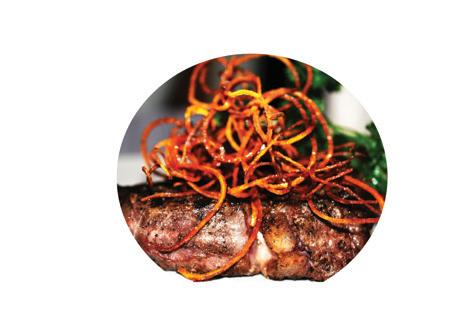


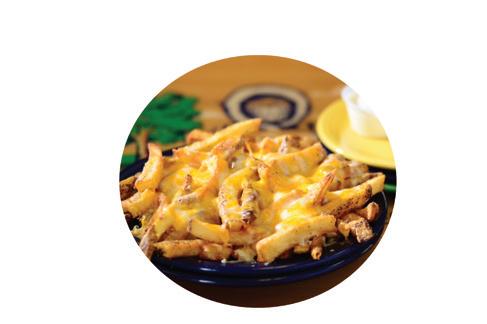

Party with America’s Favorite Mascot!
PE TE’S PARTNERS
OSU’s annual kids club membership (8th grade & under) is just $25 per child.
Benefits include:
• F REE ADMISSION to OSU soccer, wrestling, women’s basketball, baseball and softball
• Exclusive members-only t-shirt and ID lanyard
• Invites to autograph parties and special events
• Birthday card from Pistol Pete
• Pistol Pete picture and more ...

For details, visit okstate.com/kidsclub

SKINNER
OSU grad, college champion, LPGA champion and founder of a cancer- ghting foundation
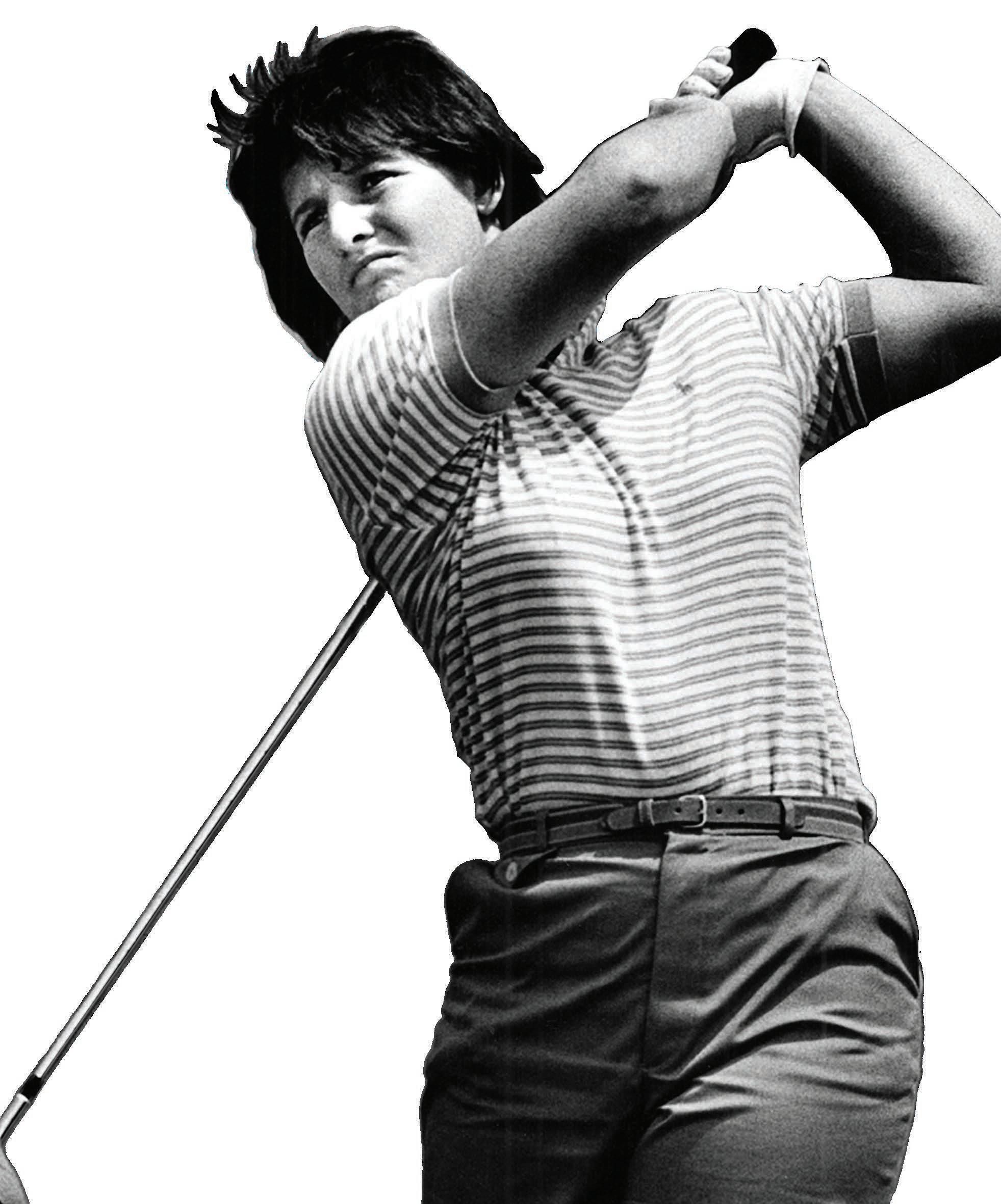 STORY BY RYAN CAMERON
STORY BY RYAN CAMERON
40
VAL
FALL 2014
WHAT BEGAN SIMPLY AS AN OPPORTUNITY FOR VAL SKINNER
“MY FATHER WAS A GOLF PROFESSIONAL. I just wanted to be around him and hang out with him. I THOUGHT HE WAS A COOL DUDE. When he would go out and practice, I would go out and practice,” Skinner said.
Not long after taking up the game at four years old, Skinner saw her work pay o , winning her first tournament three years later and getting the better of a field that included males as well.
“I played in typical junior stu and in that particular event I beat all of the boys, so I was pretty proud of myself,” Skinner said.
Going head-to-head with male competitors became the norm for Skinner. Growing up in a community limited in population, the Nebraska native spent the majority of her time with a pair of boys as playing partners.
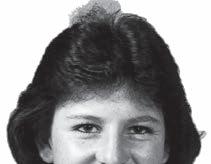
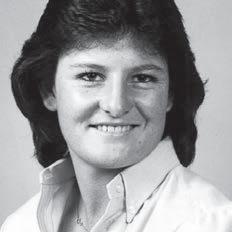
“Those two boys and I would just wear out the turf. WE WOULD PLAY 54 OR 63 HOLES A DAY AND JUST GO ROUND AND ROUND. THAT WAS UP UNTIL I WAS 10 OR 11,” SKINNER SAID.
As she approached her teenage years, Skinner’s father relocated the family, providing her with a new crop of competitors to test her skill.
“There were a bunch of guys that were older than me and were really good players, scratch or better. When I was really young, 12 or 13, I played a lot of golf with those guys, and it was really an advantage because you had to hit it hard and you had to hit it far. The competitive edge was a lot of fun. I was really exposed to some good, young male players,” Skinner said.
Growing up in the unpredictable climate of the midwest would seemingly steer someone toward sports other than golf. However, Skinner used the locale, which proved to be the perfect training grounds in advance of her collegiate and professional careers, to her advantage.
“I think it is a big thing for athletes that are really driven to have a break. These kids that play in California and Florida may feel guilty if they aren’t out there working at it every day when the weather is nice. You see a lot of those kids end their careers earlier than players that had a more normal change of season.”
“When you have a change of season, I think playing in all kinds of weather makes you a better player. I think it teaches you how to be more versatile and learn different shots. That was a huge advantage to me when I got on tour and a huge advantage when I was playing at OSU.”
Life in the Midwest also presented Skinner with the opportunity to compete in multiple sports to avoid the burnout factor that often accompanies the grind of an individual sport.
“I LETTERED IN FOUR SPORTS
AT ONE TIME. I ran track and I was a volleyball player and a basketball player. I played a lot of softball. I was a really big sports freak. WHATEVER THE GAME WAS, I WAS INTO IT. I was a competitive person, so I just liked sports,” Skinner said.
As her prep career unfolded, the multitalented Skinner shined brightest with a golf club in her hand, racking up victory after victory. In addition to a pair of high school state titles, she captured 20 victories during her senior season.
Skinner’s prowess did not go unnoticed with schools from coast to coast pursuing her services. In the end, Oklahoma State won out for reasons aplenty.
“There were a lot of scholarship opportunities and I was a good enough player, but a bit of a dark horse. I followed the Big Eight, so I had friends in college that were playing against OSU,” Skinner said.
“I felt it was a good communications school, but also a school that wasn’t too awfully far from home, but was far enough that I was going away to school. The size
41
TO SPEND TIME WITH HER FATHER EVOLVED INTO A CAREER AND A VESSEL TO LEAVE HER IMPRINT ON THE WORLD.
“The one thing Nebraska taught me was how to play in Oklahoma because it was windy. When I went to school at Oklahoma State the wind was challenging. We qualified in snow. I remember being at Stillwater Country Club one day and it was snowing and we were playing,” Skinner said.
of the school was so appealing to me because it was a big university, but it was a small town.”
A campus visit sealed the deal and the OSU program landed a player capable of putting the Cowgirl program on the map.
“There were just a lot of things that felt right when I saw the campus. I LOVED THE LOOK OF IT AND I LIKED THE TRADITION OF GOOD BASEBALL AND GOOD WRESTLING. I felt like there was a commitment to golf there in the community with the people in town. There were just a lot of things that mattered to me that lined up,” Skinner said.
And, once again, the men’s side of the sport had an influence on Skinner, who was very aware of the storied Cowboy program.
“One of the things that did impress me and made think about Oklahoma State was the men’s program was so good. I felt like there was a golf tradition there that was unlike any other. I knew Labron Harris was still there and I knew he could be a resource and I knew Mike Holder was an amazing coach and had an unbelievable record,” Skinner said.
On the women’s side, the Cowgirls had a legendary coach in their own right in Ann Pitts, who oversaw the program for more than two decades.
“She had a personality that was good for me. I was a very independent thinker and my father had taught me, so I had a lot of my own opinions about what I wanted to do. She helped you find yourself on the map of going through college and doing all of the other things you were doing as a student-athlete. The balance was appealing to me. COACH PITTS WAS A GOOD COACH FOR ME,” SKINNER SAID.
The balance in life Skinner sought was provided by Oklahoma State and allowed her to immerse herself completely in the college experience and leave Stillwater with fond memories.
“I really loved going to the games and being a part of that and living in the dorm. I went through rush and it was too much for me to take on, so I didn’t end up pledging. I liked the fact that there were a lot of options. I liked ESKIMO JOE’S a lot and would go to the FOX (The Gray Fox Inn) a lot and play pool with the guys. It was just fun. I had fun people around me and I had a good time,” Skinner said.
On the course, Skinner found herself in a familiar situation, squaring o with members of the Cowboy squad.
“I could try to match their record, but those guys were so great. I went to school with a handful of such great players. There have been so many. I was really proud to say I played golf there,” Skinner said.
It was during her time at OSU that Skinner began to see her goal of playing the game at its highest level on the LPGA Tour come to fruition.
“I wanted to play the tour from the time I was young. I don’t even know where it came from. I wasn’t that familiar with the LPGA Tour. I just knew that was what I wanted to do,” Skinner said.
“WHILE I WAS AT OKLAHOMA STATE, I PROVED TO MYSELF THAT AT LEAST I COULD BEAT ALL OF THE OTHER GOOD PLAYERS IN THE COUNTRY because I had a schedule that suited that opportunity. It gave me a chance to play against all of those good players and see how good I was. That just continually built confidence.”
For Skinner, knocking o the nation’s best was something that happened regularly, but not initially. After going winless as a freshman during the 1978-79 season, SKINNER BROKE THROUGH WITH THE FIRST OF HER TWO BIG EIGHT TITLES as a sophomore in 1980 before adding a second career victory in 1981 at the Sooner Invitational.
Skinner saved her best for last. AS A SENIOR, SHE WON A SCHOOL-RECORD SIX TIMES, including a string of four consecutive victories as well as her second conference title. Skinner capped her collegiate career with a SEVENTH-PLACE FINISH AT THE INAUGURAL NCAA CHAMPIONSHIP IN 1982.
Her play did not go unnoticed. She was named GOLF Magazine’s COLLEGIATE PLAYER OF THE YEAR , the BIG EIGHT FEMALE ATHLETE OF THE YEAR and the school’s first-ever WOMEN’S GOLF ALL-AMERICAN . In 1999, she became the first female to be inducted into OSU’s Hall of Honor.
“I loved my sport from top to bottom and I was really into it. It meant a lot to me to be a great player. By the time I got my act together my junior and senior years, my performance continually improved and my grades improved and it was obviously a good choice for me,” Skinner said.
After her historic run, it was time to put Stillwater in the rearview mirror and turn her attention to the professional circuit.
Skinner earned her Tour card at the 1983 LPGA FINAL QUALIFYING TOURNAMENT. Two years later, she secured her first LPGA victory in dramatic fashion, winning a playo at the KONICA SAN JOSE CLASSIC against one of the sport’s legendary figures.

“I BEAT PAT BRADLEY IN A PLAYOFF. Pat Bradley is now a Hall of Fame member and one of the greatest players to ever play the women’s game. Capturing my first victory against a player like that was incredibly rewarding,” Skinner said.
Skinner posted a win in each of the next two seasons and put together another three-year run from 1993 to 1995 that saw her log a victory during each season. When it was all said and done, she had tallied six career wins, more than $2.4 million in earnings and was a member of the victorious U.S. Solheim Cup squad in 1996.
42
FALL 2014
The relationships forged are what Skinner speaks of most fondly when recapping her career. Those ties would eventually lead to her future endeavors.
“The camaraderie of being among other great athletes, enjoying their performances and seeing how good they could be …. I think of those times often and I really honored and respected a lot of my fellow professionals. I felt like they were great examples for women’s sports,” Skinner said.
Despite an impressive list of credentials as a player, it has been o the course where Skinner has made her biggest impact.
In 1993, Skinner’s friend and fellow LPGA member HEATHER FARR lost her battle with breast cancer at the age of 28. The loss launched Skinner into action.

“When Heather got so sick ... it was a really di cult time on the LPGA. The reason she had the impact she did was because she was really incredible. This was a player that won all of her state championships, won everything in junior golf there was to win with national titles and all of that. She drew the short straw with this disease and what happened to her. It was really unfortunate and it was really hard to watch and it wasn’t ok,” Skinner said.
Before her death, Farr urged Skinner, whom she had known to have an impact beyond the game, to use the platform golf had given her to take action.
“Right before she passed away, we had had a number of visits and she would come out on tour when she was feeling better and spend time with some of us. She was very open with her disease when it was happening. I think it made a di erence to the idea that something like this is necessary. That is how we got started,” Skinner said.
“I HAD ALWAYS BEEN INVOLVED WITH SOMETHING BEYOND GOLF. I just needed that and she gave me marching orders.”
Skinner began to build the VAL SKINNER FOUNDATION. After rolling up her sleeves and beginning her fundraising e orts in 1996, her foundation became a reality four years later.
“It took a while. I started raising money for breast cancer after she passed, but it took a while to establish an initiative just for young women. Some of the big cancer groups that were working on breast cancer … (young women) weren’t the statistic they typically saw. It took a while to convince them, so I just kept raising money and finally I had enough to get their attention,” Skinner said.
“The rest is kind of history.”
Centered around the LIFE (LPGA PROS IN THE FIGHT TO ERADICATE BREAST CANCER) EVENT, an annual golf outing, the foundation has raised funds totaling more than $9.5 million with the RUTGERS CANCER INSTITUTE OF NEW JERSEY and SUSAN G. KOMEN FOR THE CURE serving as the primary benefactors. The event took place for the 15th consecutive year this past June and annually attracts some of the biggest names the LPGA has to o er.
Through LIFE, funding has been provided for research. Early detection programs have been launched and clinical support has been provided to those affected by the disease. Additionally, Skinner’s foundation has helped fund BIOCONNECT, a high school educational platform, and BOLD, a summer camp for high school students interested in medical sciences.
The nature of golf lends itself to focusing on one’s self, so the unselfishness that came with the cause proved to be fulfilling for Skinner, who has become equally if not more decorated for her work o the course. Now a resident of Palm Beach Gardens, Florida, and Bay Head, N.J., she counts the LPGA Humanitarian Award, Susan G. Komen Award, the Award of Hope from the Cancer Institute of New Jersey and the Golf Writers Association of America’s Charlie Bartlett Award for unselfish commitment to community service among her list of achievements.
“Golf is a very demanding, selfish sport and I needed to be able to have a little bit of everything. I didn’t feel like I was giving enough of who I was just by being a player,” Skinner said.
After serving 12 years as a commentator for GOLF CHANNEL and CBS , Skinner recently stepped away from the cameras, allowing more time to focus her e orts on helping others.
“I am taking a little break right now. I did it a long time and have traveled a long time. Obviously, I have traveled my entire life, so this has been a breath of fresh air to focus on the foundation,” Skinner said.
“MAKING A DIFFERENCE through something that you are so fortunate, first of all, to be able to do and be in that one percent that can do it well enough to do it professionally HAS BEEN VERY GRATIFYING,” SKINNER SAID.
Like her work, Skinner is equally appreciative of the place she chose to help springboard her to her calling and her place in OSU’s rich athletic history.
“I am incredibly grateful for the opportunity and to have such a good fit. I could not be more proud. I take a lot of pride in that and am very proud of my record there, and I am proud of the legacy of Oklahoma State athletics.”
43
OSU’s PERNILLA LINDBERG , left, and VAL SKINNER , center, with VAL SKINNER FOUNDATION members.
the
FORGOTTEN
COACH
44
SCORES OF ATHLETES AND COACHES HAVE CONTRIBUTED TO THE 119 YEARS OF HISTORY AT OKLAHOMA A&M TURNED OKLAHOMA STATE UNIVERSITY. SOME RECEIVE CONTINUED AND CONSTANT RECOGNITION. MOST DO NOT AND ARE FORGOTTEN. THIS STORY IS ABOUT AN INDIVIDUAL IN THE “GONE AND FORGOTTEN” CATEGORY. HE SERVED AS HEAD FOOTBALL COACH FROM 1955 THROUGH 1962. HIS NAME IS CLIFF SPEEGLE.
 STORY BY GENE JOHNSON
STORY BY GENE JOHNSON
REDSKIN /
SPECIAL
OSU
COLLECTIONS
FALL 2014
1957
said former athlete and former OSU athletic administrator Dick Soergel , “because there aren’t many folks today who know anything about him. Nothing has been written about him since he left Stillwater.
“COACH SPEEGLE WAS A MAN FOR ALL SEASONS, A LOVING HUSBAND, DEVOTED DAD, GOOD FRIEND, GIFTED ATHLETE, OUTSTANDING COACH AND ADMINISTRATOR. HE HAD A HUGE, POSITIVE INFLUENCE ON MY LIFE.”
Soergel wasn’t finished.
“The strongest language I ever heard him use, and only when he was very upset was, I have no idea what that word means, but the way he said it, you knew he was serious. After I was through playing, in social situations, I never saw him use tobacco in any form or take a drink. It was OK if someone else did, but he wouldn’t.”
THE SPEEGLE BROTHERS, C.B. II , CLIFF AND WAYNE, were standout athletes during the 1930s at Oklahoma City’s prestigious Capitol Hill High School. The school was a sports powerhouse for four decades beginning in the 1930s.
Growing up on a rural dairy farm, the siblings had plenty of daily chores. C.B., the oldest, graduated in 1933 and went to Central State University, where he earned all-conference honors in both football and basketball. The youngest brother, Wayne, was a member of the 1947 Oklahoma basketball squad that lost in the NCAA finals to Holy Cross.
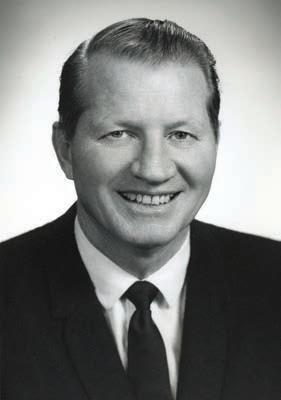
In high school, blond-headed Cli stood six-feet tall and weighed 180 pounds. He was named by The Daily Oklahoman as an all-stater in both football and basketball.
During Speegle’s high school years, Capitol Hill had two undefeated football teams and won state championships in baseball and basketball. Speegle was also selected as senior class president and best all-around student.
“DAD EARNED THE NICKNAME ‘BIRD DOG’ BECAUSE ON DEFENSE HE ALWAYS SEEMED TO BE ABLE TO FIND THE BALL,” said Speegle’s son, Max. “Being a diehard Cowboy fan, I hate to admit it, but Dad played for OU. He was HONORABLE MENTION ALL-AMERICA and was chosen ALL-BIG SIX as a center. That same Sooner squad played in OU’s first ORANGE BOWL game in 1939 against Tennessee. Most people don’t know this, but Dad also started at guard on OU’s 1939-40 basketball squad that captured the Big Six championship.
“Mom was Dad’s high school sweetheart who married Dad while he was still in Norman. They were together the rest of their lives.”
After graduating from OU, Speegle coached high school football one year each at Wewoka and Capitol Hill before enlisting in the ARMY AIR CORPS in 1942. He learned to fly B-26s and spent most of his time stationed in Del Rio, Texas, as a flight instructor. He never had to serve overseas.
“When you think about it,” Max added, “that job teaching 18-year-olds to fly may have been more dangerous for Dad than if he’d flown planes over the Pacific.”
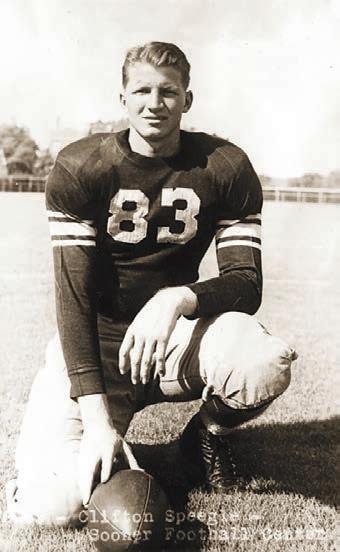
45
“I call him the forgotten coach,”
UNIVERSITY OF OKLAHOMA
1940
‘PIFFLE.’
Max Speegle:
Being a diehard Cowboy fan, I hate to admit it, but Dad played for OU.
CLIFF SPEEGLE
to beat OU but never did, although he came close.”
— MAX SPEEGLE —
After the war, Speegle played one season of professional football and severely injured a knee while playing for the CHICAGO CARDINALS . He then resumed his coaching career with assistant coaching jobs at Bacone Junior College, Oklahoma A&M, Colgate University and in Canada.
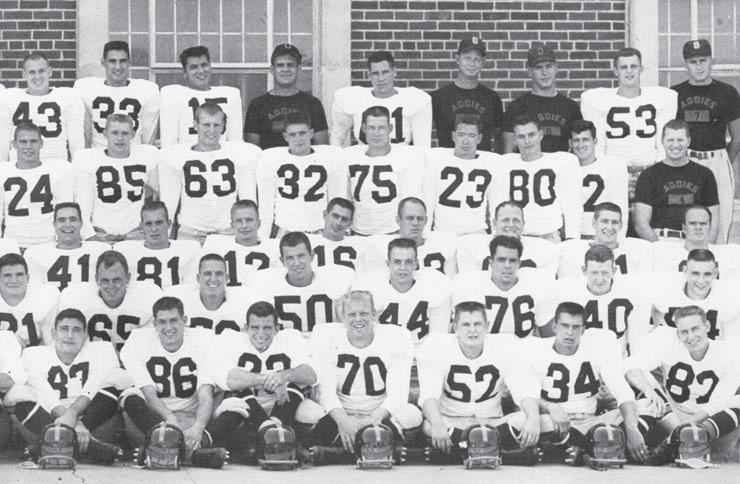
At the age of 38, he returned to Stillwater, succeeding J.B. Whitworth as Oklahoma A&M’s new head football coach in 1955. Whitworth left Stillwater for his alma mater, the University of Alabama.
*
In those days, A&M played in the old Missouri Valley Conference against league opponents that included Tulsa, Wichita State, Houston and Detroit Mercy. Speegle’s first two Aggie teams struggled to 2-8 and 3-5-1 records.
“In my eyes, Dad was the greatest coach there ever was,” Max said. “He was a perfect role model who enjoyed coaching. His desire was to make a positive impact on whatever he did. He put his heart and soul in it, but it was a shoestring budget. In Stillwater we didn’t have a full deck in either facilities or money. He wanted very badly to beat OU but never did, although he came close. But it wasn’t a level playing field.”
46
“He wanted very badly
1957
REDSKIN / OSU SPECIAL COLLECTIONS FALL 2014
Legend has it that one year the Athletic Council was reviewing the budget for the upcoming football season. One of the members questioned the allocation of funds to buy jerseys, questioning the need for jerseys two straight seasons.
“Back then, BUD WILKINSON had his weekly TV program sponsored by a local milk company,” recalled Soergel. “During the show, Bud, who was charismatic, and a great salesman, would sip milk from a glass and nibble on chocolate-chip cookies while looking very wholesome. All the moms who saw those programs wanted their sons to play for Bud. HE WAS TOUGH TO RECRUIT AGAINST.”
It was a di erent era for college football. In 1953, platoon football was the order of the day. Players were allowed to enter a game just once a quarter.
“College football rule makers decided that huge sums of money could be saved if there was no free substitution,” Soergel said, who along with being a great athlete spent several years as the business manager for OSU Athletics. “PLAYERS HAD TO PLAY OFFENSE AND DEFENSE SO THE NUMBER OF SCHOLARSHIPS WAS SIGNIFICANTLY REDUCED, COSTING LESS MONEY. OUR TRAVELING SQUAD CONSISTED OF ONLY 33 PLAYERS.”
Coaching sta s were challenged to teach all players both o ensive and defensive schemes, plus instruct the same group on special teams.
Neill Armstrong, a former Oklahoma A&M All-America receiver who played on the UNDEFEATED 1945 AGGIES SUGAR BOWL TEAM, was part of Speegle’s Stillwater sta . Armstrong, selected eighth in the 1947 NFL Draft, went on to play on two NFL championship teams with the Philadelphia Eagles. He would eventually become the head coach of the CHICAGO BEARS.
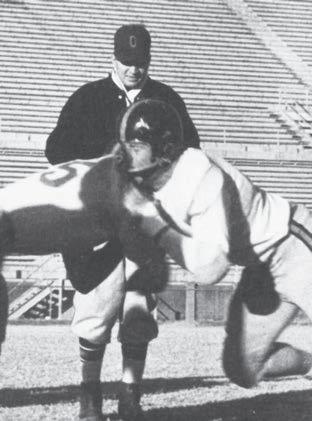
“Cli gave me my first coaching job, and I owe him for that,” Armstrong said. “He was the nicest guy in the world. He was very capable and a good coach. I learned a lot about football from him and the rest of that sta .”
Former quarterback Mike Miller was also a Speegle fan.
“Coach was a great guy, high ethics, a true gentleman,” he said. “I do recall one game when several of my linemen talked me into changing a play from one that coach Speegle had sent in for us to run. It resulted in our scoring a touchdown. I was excited.
“As I jogged o the field with a grin on my face, Coach caught up with me and was furious. He royally chewed me out and didn’t want me to deviate from the game plan.” Miller laughed, “I never changed any more plays!”
“We were all in excellent shape … had to be,” recalled Larry Rundle, who played fullback during coach Speegle’s era.
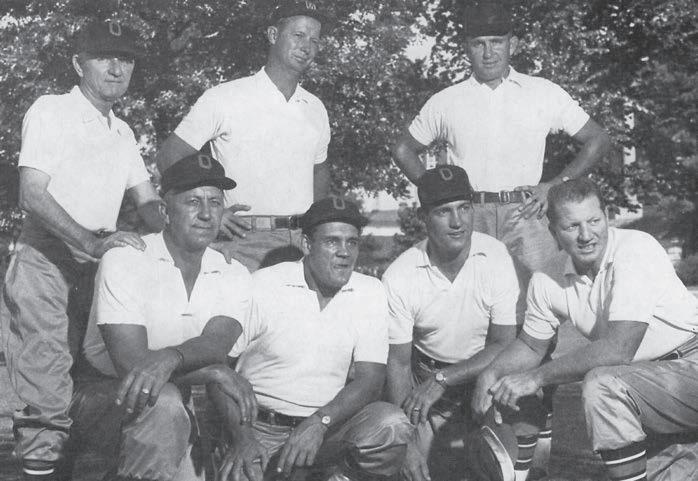
“ANY LINEMAN OVER 200 POUNDS WAS BIG, AND THERE WEREN’T TOO MANY OF THEM. BUT I THINK MOST OF OUR GUYS WERE TOUGH AS OLD SHOE LEATHER.”
Speegle recruited OSU’s first African-American player, a pintsized halfback named Chester Pittman, from Wewoka, Oklahoma.
Jim Elliott, who also quarterbacked under Speegle, had one very specific memory.
47
1959 COACHING STAFF, kneeling: JACK BAKER , HARRY BUFFINGTON , JIM SPAVITAL , CLIFF SPEEGLE; standing: TOBY GREENE , OTIS DELAPORTE and NEILL ARMSTRONG .
1957 Under the watchful eye of CLIFF SPEEGLE , players improve their blocking technique.
REDSKIN
/ OSU SPECIAL COLLECTIONS
REDSKIN / OSU SPECIAL COLLECTIONS
“One time we were on the road at Kansas,” he said. “The night before the game we stayed in Topeka. Coach was organized and had our schedule down to 15-minute increments. After supper, we’d always go to a movie. The schedule read something like ‘7-to-9, relax, go to movie, take mind o the game.’
“We got to the theatre a little late and had to sit on the front two rows. Alfred Hitchcock’s Psycho was playing.” Elliott laughed. “When that guy took a butcher knife to that gal in the shower, we all came unglued … so much for relaxing!”
IN 1957, A&M BECAME OSU, THE AGGIES BECAME THE COWBOYS AND THE LEAGUE OF MEMBERSHIP BECAME THE BIG EIGHT CONFERENCE.
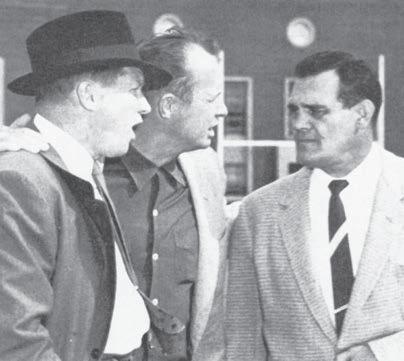
Showing marked improvement, the Cowboys went 6-3-1 in 1957, including wins over Texas Tech and Tulsa. Attendance that season averaged 22,000.
The following year proved to Speegle’s best, as OSU went 8-3, which would be the best record for the program over 29 years, spanning from 1946 through 1975. Unfortunately, there was no conference title to play for as OSU competed as an independent its final three seasons before beginning Big Eight play. The 1958 season finale was a sweet 15-6 BLUEGRASS BOWL win over Florida State. It was the third bowl win in school history.
That same season, the Cowboys played the Sooners down to the wire before losing 7-0. OSU also lost a nail biter to the Air Force Academy, which scored with seven seconds remaining to eke out the win. All in all it was a successful Cowboy season.
Jim Wood, now deceased, was an OSU All-America end in 1958. He went on to become a teacher, coach and finally a school administrator.
“JIM HAD SO MUCH RESPECT FOR COACH SPEEGLE,” SAID JIM’S WIDOW, HELEN. “HE DID NOT WANT TO DISAPPOINT HIM WHEN HE PLAYED OR IN LIFE. He called him regularly over the years and asked his advice about a job or for a recommendation. COACH SPEEGLE WAS A TRUE MENTOR IN JIM’S LIFE. Jim had strong feelings for him. COACH SPEEGLE WAS JUST SO SOLID.”
“His teams were always well prepared and had a good game plan,” Soergel said. “He wasn’t the type of coach to rant and rave like some, nor was he a terrific motivational speaker. But we played a hard-nosed, smash-mouth brand of football. I wouldn’t have wanted to play for anybody else.”
Speegle’s next three teams went 6-4, 3-7 and 4-6. He had no wins over Oklahoma, a fact that apparently rankled some members of OSU’s Athletic Cabinet and eventually led to his dismissal.
Max Speegle was a high school senior and clearly recalls that event.
“I took it a lot harder than Dad,” he said. “He was ready to go on to the next thing in life, whatever that might be. He took it in stride. Within a few months the family moved to Canada, where Dad took a coaching job. By then I was pretty much a Cowboy and stayed in Stillwater.”
Max received an athletic work scholarship, helping Mr. Henry Iba and the basketball program. “I did laundry (Max actually washed the practice gear of the author). I got basketballs out for practice and games, handed out towels, whatever needed to be done. Plus I got a front row seat next to the players at all home games. It was a great situation and I enjoyed it.”
48
Dick Soergel:
REDSKIN / OSU SPECIAL COLLECTIONS
He wasn’t the type of coach to rant and rave like some, nor was he a terrific motivational speaker. But we played a hard-nosed, smash-mouth brand of football. I wouldn’t have wanted to play for anybody else.
FALL 2014
COACHES OTIS DELAPORTE , football, HARRY BUFFINGTON and head football coach CLIFF SPEEGLE .
In 1967, after coaching stops in Toronto, Canada, and El Paso, Texas, Speegle took a job as an assistant to the executive secretary of the SOUTHWEST CONFERENCE He would become the commissioner of the SWC in 1973, a position he held until his 1984 retirement. Just over 10 years later, four Southwest Conference schools would join with the Big Eight schools to form the Big 12 Conference.
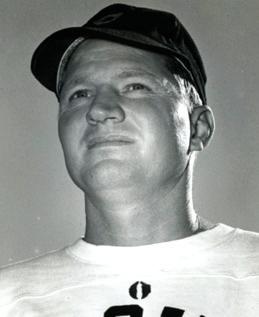
“I think that job better suited Dad,” said Max. “HE WAS GOOD AT BRINGING PEOPLE TOGETHER AND HELPING THEM RESOLVE THEIR DIFFERENCES.”
Soergel was asked to speak at Speegle’s retirement party. At that gathering he had a chance to inspect some of the mementos that the former coach had acquired over the years. Among them was a letter that, several years earlier, Soergel had written.
Dear Cliff:
Congratulations on your many accomplishments. Your achievement as an athlete, coach and administrator are certainly significant, but to me, your most important achievements are the personal relationships you developed with your family, teammates, players, coaches, administrators and numerous other friends. You are a very important influence on my life and I look forward to your continuing friendship.”
Sincerely, Dick
Soergel
“One afternoon coach Speegle was in town, just a few months before he passed away,” Elliott said. “He unexpectedly dropped by my o ce. It was a pleasant surprise. We must have visited for at least two hours about the old players, games, practices, road trips … a little bit of everything. We laughed a lot. I enjoyed it, and I believe he did too.”
Cli Speegle passed away in 1994 at the age of 77. He is survived by two daughters, JEAN STOUT of Tulsa and SANDY NOBLES of Dallas, and sons STAN of Denver and MAX of Edmond, Okla. He is also survived by seven grandchildren and 11 great grandchildren.
It’s true that not much has been written about “the forgotten coach” since he left Stillwater. But IT IS WORTH NOTING THAT SPEEGLE’S WON-LOSS RECORD PROVED TO BE SIGNIFICANTLY BETTER THAN HIS SUCCESSORS, who were provided additional resources, including three more assistant coaches. Could another coach with the same meager resources have done better than coach Speegle during this period? We’ll never know.
One thing is for certain. The forgotten coach left an indelible positive mark on his family, friends, players and, yes, on OSU. Maybe today’s Cowboy fans can appreciate the job of Cli Speegle did with the OSU football program nearly 60 years ago.
The author welcomes your comments at OSU52johnson@yahoo.com
49 *
*
1955
COURTESY / MAX SPEEGLE / FANBASE.COM
Help us find the next generation of Cowboys. Recommend a future Cowboy online today. orangeconnection.org/knowafuturecowboy WE WANT YOU!
STORY BY CLAY BILLMAN





































 PHOTOGRAPHY BY BRUCE WATERFIELD
PHOTOGRAPHY BY BRUCE WATERFIELD
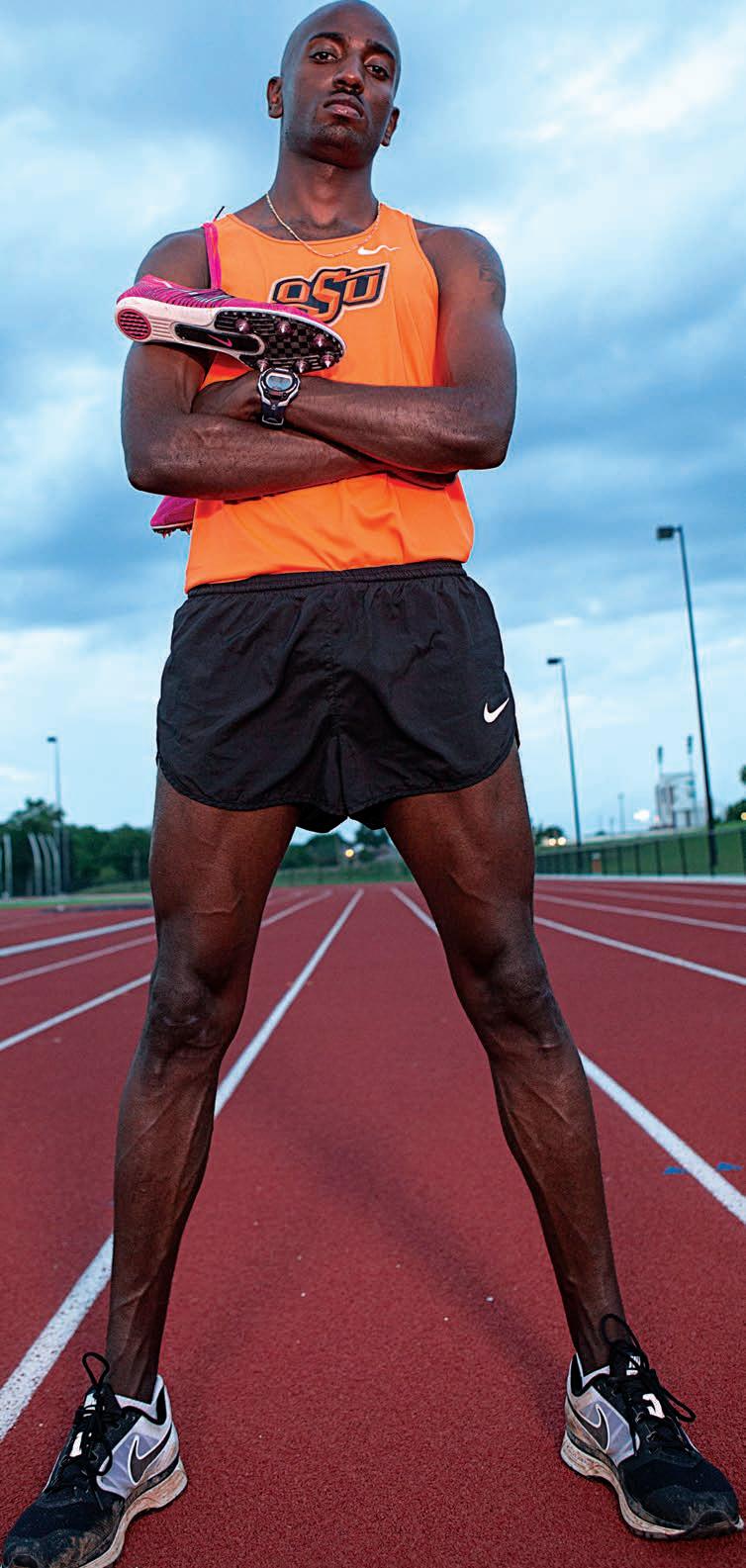





CROSSING










52
FALL 2014
NOT ANYMORE. These days Erassa is taking the lead.









After a stellar spring on the track — highlighted by three Big 12 individual wins to lead the Cowboys to their first-ever indoor conference title — the Oklahoma State senior has unfinished business.
THIS FALL WILL MARK ERASSA’S FINAL CROSS COUNTRY SEASON IN THE SIGNATURE DAY-GLOW ORANGE SINGLET. Despite etching his name throughout the OSU and Big 12 track and field record books, he still has something to prove as a collegian.
“Cross country’s a glaring hole on his résumé right now,” says Dave Smith, OSU director of track and feld and cross country. “He’s done really well at the Big 12 and regional levels, and this is his final year to prove himself at nationals. KIRUBEL IS TRYING TO BECOME ONE OF THE BEST DISTANCE RUNNERS IN THE NCAA, and cross country is a huge part of it.
“Cross country measures different things than the track measures, and I think it’s very important to him as he tries to take his career beyond OSU and run professionally.”


The top 40 individual finishers at the NCAA CROSS COUNTRY CHAMPIONSHIPS earn ALL-AMERICA HONORS. In two starts at nationals, Erassa has finished 102nd (2012) and 83rd (2013). Despite the team taking the national title in 2012 and finishing third a year ago, Erassa has been disappointed with his personal performance.
“He’s performed exceptionally well in almost every race — except for the two times he’s run at the cross country national championships,” Smith says. “I think he might not have seen himself as a long distance runner, and that’s part of his maturing process. If you want to be a great runner, you can’t pigeon-hole yourself into thinking you’re a middle-distance
guy or a track guy or a cross country guy. You’ve got to approach it as, ‘I’m a great runner, and it doesn’t matter what the race is, I’m going to go out and perform well.’”























Erassa agrees with his coach’s assessment.
“I HAVE TO PROVE TO MYSELF,” HE SAYS. “I HAVEN’T BEEN ALLAMERICA IN CROSS COUNTRY YET, BUT I’M CONFIDENT I CAN COMPETE WITH THOSE GUYS. Running is running. ”
ALL-IN







With the graduation of AllAmerica teammates Tom Farrell, Shadrack Kipchirchir and Joe Manilafasha, the veteran role is squarely on the shoulders of Erassa, along with fellow senior Shane Moskowitz.
“This is my last cross country season so I have to make it count,” Erassa says. “I’m going all-in. I’ve got to be a leader.
But like Dave always says, it doesn’t take only seven guys to win the national championship, it takes the whole team. You never know what’s going to happen during the season. Someone may get injured so everybody needs to be accountable to each other.
“We have really, really talented guys, and I believe we can do big things,” he adds. “But it’s not going to be easy. We’ve got to work hard. At the same time, we’ve got to be smart about it. We’ve got to train smart, and everybody has to come together and be on the same page because cross country is not an individual sport.”
Smith says Erassa has noticeably matured over the last year.
“He came to OSU as a 17-year-old and didn’t turn 18 until after his freshman year so he was a young guy,” Smith explains. “He had some typical 17-year-old issues and some


















53
COUNTRIES
EARLY IN HIS CAREER, KIRUBEL ERASSA WOULD BIDE HIS TIME AND SIT BACK IN THE PACK, CONTENT TO LET OTHER RUNNERS SET THE PACE. IT WASN’T SO MUCH A STRATEGY AS IT WAS A MINDSET, A FEAR OF PUSHING HIMSELF INTO UNCHARTED TERRITORY.
that were beyond what most of our kids have. But he grew up and became independent and gained confidence in himself and confidence in his abilities on and o the track.”

Erassa’s mother left Ethiopia in 1996 and traveled to the United States, hoping to establish a better life for her children, who remained in the capital city of Addis Ababa with their father.
“My mom went to the U.S. when my twin sister ( TIYO) and I were three years old,” Erassa says. “She had to stay here five years to get her paperwork, and by the time she came back to Ethiopia, we were eight. From there, the process took around about two-and-a-half years before we were able to come to the U.S. My mom wanted us to have a good life for the future and better opportunities. When we got our visa, I was happy that we were going
to come to the U.S., but I wasn’t ready to leave my country because I had made a lot of friends there, and I love my country. I remember it was a very sad moment for me. I was crying. I couldn’t even get on the plane. My dad said, ‘You’ve got to go. It’s okay, you’re going to come back.’”
Leaving their father behind, Erassa and his sister landed with their mother in ATLANTA, Georgia, in early 2004.
“When we got here, it was a cold-weather day,” Erassa recalls. “I remember being at the airport, and when we got outside it was like 19 degrees. I had never been so cold! Where I lived in Ethiopia it’s always around 70 degrees. I thought, ‘This is going to be interesting.’”
As a sixth grader, soccer bridged the cultural divide between his homeland and life in America, but then he discovered a new sport: basketball.
“I always loved to play soccer, but when I came here I started watching basketball games on TV. I had known about MICHAEL JORDAN back home, but when I saw LEBRON (James) play, I thought, ‘This guy can be the greatest.’ BASKETBALL BECAME MY PASSION.
“In middle school I loved basketball. I would go to the court and just play by myself. I remember waking up at 5:45 a.m. and going down to the basketball court until 10. My mom would always come to the court: ‘My son, what are you doing? Come home.’”
When Erassa reached high school, he tried out for the basketball team.
“I made it to the final cut, and the coach said I had the ball skills but didn’t have the communication skills because I never played with a team. No one had ever taught me how to play. So I didn’t make it. I cried. After that I just played soccer.”
54
FALL 2014
“I thought,‘That’s it. Next year I’m going to play soccer. This is not going to happen again.’” i KIRUBEL ERASSA
As a freshman, Erassa did make the GRAYSON HIGH SCHOOL varsity soccer roster, and his running ability was immediately evident.
“The soccer coach knew that I was fast on the field, and he told the track coach that I should join them after soccer season,” Erassa says. “There was only two weeks left of track. I practiced one week and found out that running is so hard. They took me to a high school meet, and I ran the JV mile. I broke five minutes — I ran 4:59 — and I was on the ground just throwing up everywhere. I thought, ‘That’s it. Next year I’m going to play soccer. This is not going to happen again.’”
Then Erassa saw a familiarlooking figure. He’d never met the cross-town competitor, but there was something about him.
“They were running the two-mile, and this guy was on the track going past me. He looked Ethiopian. After he finished the race, I went up and asked him his name. He said, ‘ GIRMA’ (Mecheso) ... ‘I’m Kirubel. I just ran the mile. Are you Ethiopian?’ And so we talked in our language and exchanged numbers.”
Suddenly, running didn’t seem like such a bad idea.
“That summer, my high school coach would come by my house and take me to cross country practice on the trails at the park. We were like 15 minutes in, but it felt like 50 minutes. ‘Are we done yet?’ And then I tripped on a root and dislocated my elbow. That was my first week of actually training. My elbow is still crooked.”
During his first season of cross country competition, the sophomore was still green when it came to racing, and perhaps a bit naïve.
“My teammates told me to go out with the leaders,” he says. “They were actually joking with me, but I went out to the front. I remember we came through the first mile in 4:55. After that I was just exhausted. I ran 17:18 for the 5K in my first cross country race.”
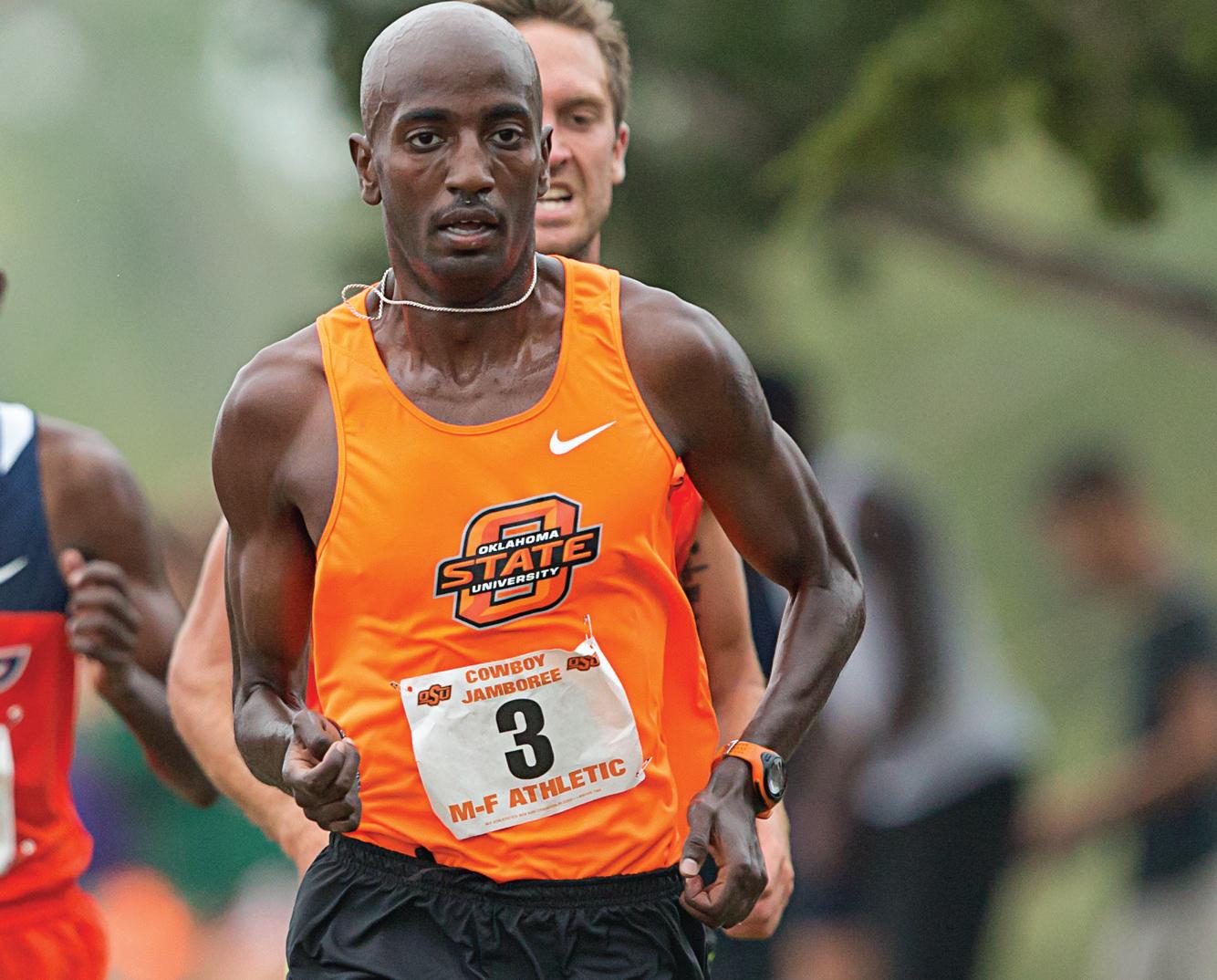
By the time spring arrived, Erassa had a decision to make: soccer or track?
“A lot of people told me I had to run track. Don’t play soccer. For me it was the hardest decision ever. I chose track. At that moment, I knew that I was capable of making improvement and doing special things. So I called GIRMA . I remember talking to him a lot on the phone, just
55
hearing his life story (see POSSE vol. 6, issue 2). I was scared, actually, when he told me about his training. How can you run for three hours? He told me to go home and run extra after practice. So I listened to him. Girma was pretty much my second coach at that time. He said, “You’ve got to be honest with me and be willing to listen to me, and I will help you out.’ I said, ‘Okay, and whatever college you go to, I’m going to follow you. I promise you. Just coach me.’ At that time he was my idol, the guy I looked up to.”
Mecheso was two years ahead of Erassa and accepted a scholarship to Auburn University. After earning All-SEC honors as a freshman, Mecheso transferred to Oklahoma State.
“When he got to Auburn, to be honest, I was like, ‘I’m going to be at Auburn.’ But he wasn’t comfortable there and asked to visit other schools. He ended up here at OSU.”
Smith says he was unaware of the promise Erassa made to his mentor.
“I didn’t really know that when I was recruiting him,” he says. “Kirubel never mentioned that to me. But I know he looked up
to Girma. He’s someone who had a similar life experience. He respected him and saw him as kind of a mentor or big brother figure in his life. As he’s grown up and matured, he’s started to become very independent and now stands on his own two feet.”
ON TRACK
In Stillwater, Erassa has left his own mark, with PERSONAL BESTS IN THE INDOOR MILE (3:58.24), 3,000 meters (7:49.17) AND OUTDOOR 5,000 METERS (13:27.55) THAT PUT HIM AMONG OSU’S ALL-TIME GREATS. He’s anchored THE COWBOY DISTANCE MEDLEY RELAY (1200/400/800/1600) THAT HOLDS THE TOP TWO SPOTS IN THE SCHOOL RECORD BOOKS.
This past spring, he earned USTFCCCA NATIONAL ATHLETE OF THE WEEK honors for an unprecedented triple at the Big 12 Conference Indoor Championships.
“Indoors he was a superman,” Smith says. “He was unbelievable at the Big 12 indoor meet. And then he went on to the NCAA Championships and fnished second in the 3,000 meters.”
Erassa almost didn’t get to race at nationals, where the top 16 times of the season automatically qualify. At the time of the Big 12 meet, Erassa sat comfortably in 10th place, with a time of 7:54.05. His coaches were confident he would move on.

Meanwhile, OSU was competing for its first-ever indoor conference title. Led by 5K champion Erassa, weight throw winner Nick Miller and a number of other key performances, Smith’s squad found itself in the overall lead after the first day of competition. On the final day, newcomer Tyreek Hill claimed the 200-meter title, and Erassa won the mile. The team race was going down to the wire.
“Kirubel has a natural anaerobic capacity that few runners have, and it’s really hard to develop,” Smith says. “And he has the ability to recover better than almost anybody I’ve ever dealt with. He can run a race at maximum e ort and an hour later be ready to run again. There are very few people who could triple the way he did at the Big 12 meet in the five (5K), the three
races — and run it with such
56
(3,000 meters) and the mile — with the mile having two
“KIRUBEL HAS A NATURAL ANAEROBIC CAPACITY THAT FEW RUNNERS HAVE, AND IT’S REALLY HARD TO DEVELOP. AND HE HAS THE ABILITY TO RECOVER BETTER THAN ALMOST ANYBODY I’VE EVER DEALT WITH. HE CAN RUN A RACE AT MAXIMUM EFFORT AND AN HOUR LATER BE READY TO RUN AGAIN. THERE ARE VERY FEW PEOPLE WHO COULD TRIPLE THE WAY HE DID …. NO ONE’S EVER DONE THAT IN THE BIG 12 ON THE MEN’S SIDE.”
FALL 2014
DAVE SMITH
poise and control. No one’s ever done that in the Big 12 on the men’s side.”
As Erassa prepared for the 3,000 meters, he knew the team title was within reach. A win, with its 10 points, would clinch the championship for the Cowboys.
“Literally 10 minutes before the race, my teammate, Chad Noelle, looked up the NCAA 3K qualifying list on his phone. ‘Kirubel, you are 18th!’ He showed the results on the phone to our coaches, and they were shocked.”
“Nine people passed him that day at other meets,” Smith explains. “We didn’t think that would happen. So we told him, 10 minutes before the gun went o ,’ “If you want to go to nationals, you’ve got to run a qualifying time by yourself.’”
“Dave told me, ‘Forget everything, just focus now. Go do it. Chad will rabbit you.’ I just went from the gun. Boom! I ran 7:53 and ended up breaking the conference record.”
Erassa’s victory gave OSU 112.5 points, enough to claim the BIG 12 TROPHY by a narrow four-point margin.
“We pretty much knew right after I finished the 3K that we had won. We were excited. I love my team, and I’m really honored to have been in that position to help the team win our first indoor title. It was an unforgettable moment.
“Everybody did an amazing job,” Erassa adds. “The whole team executed well and did what we needed to do. It was special. I was very blessed to be a part of that team that day.”
“Kirubel ran three events and won all three decisively,” Smith says. “No one had ever tripled and scored 30 points for us at that meet before.”
Following his remarkable feat, Erassa was named 2014 Big 12 indoor performer of the year.

His time, however, was still two-hundredths of a second behind 16th place. Several days later he would get the news that two runners had scratched due to injury. He had punched his ticket to nationals after all.
HOME RUN
ETHIOPIA has always been on Erassa’s mind, but a recent trip to his homeland really put things in perspective. As a U.S. citizen, Erassa traveled to ADDIS ABABA in the summer of 2013 to visit family and friends and train with some of the country’s elite distance runners.
“He hadn’t been there since he was a kid, and I think that opened his eyes,” Smith says. “It changed him. HE CAME BACK FROM THAT TRIP WITH A DIFFERENT PERSPECTIVE ON THINGS AND A DIFFERENT APPRECIATION FOR THE OPPORTUNITY HE HAD and not wanting to let it slip by without taking full advantage of it.”
“Ethiopia is a unique place,” Erassa says. “It’s really special. It definitely changed my personality, my attitude, everything. It motivates you, just being there around those people. Running means a lot to them. They want to help their family. They want to have a better life. They want to help Ethiopia.”
“Kirubel was talking about being in camps with guys that were sharing shoes,” Smith recalls. “One guy would go for a run and come back and give them to the other guy, and he’d go for his run. And he might pass them to the next guy. Kirubel was telling them about how our student-athletes get new shoes every 300 miles here — and for some of the guys that’s every three weeks. A lot of shoes that we discard, they would be thrilled to get as hand-me-downs.”
“They’d be wearing shoes with holes in them and blow by me in practice,” Erassa says. “I was really inspired. There are so many runners there. That’s the thing that will change you because you’re looking at other runners as good as you, and they don’t have better shoes but they can still run crazy times. They just never had the opportunity to get out of Ethiopia.
“COMING BACK, I APPRECIATED EVERYTHING THAT I HAVE IN THE UNITED STATES. I am really thankful for the opportunity Oklahoma State has given me. That trip to Ethiopia changed my personality, how I approach
running. Now I will go in the front, push it. Before, I’d sit in the back and would get scared of running too fast. To be the best you’ve got to push yourself to the limit and when you feel like you’ve reached your limit is the time to dig even deeper.”
“I think Kirubel is one of my top five all-time favorite athletes to work with,” Smith says. “He’s got a really kind heart. He’s a really good person. He cares about people. He’s a great teammate … and he gets true joy from his athletics and his performing and doing well, and it’s contagious.
57
“THAT’S THE KIND OF GUY THAT’S REALLY FUN TO WORK WITH BECAUSE HE’S RUNNING FOR THE RIGHT REASONS.”
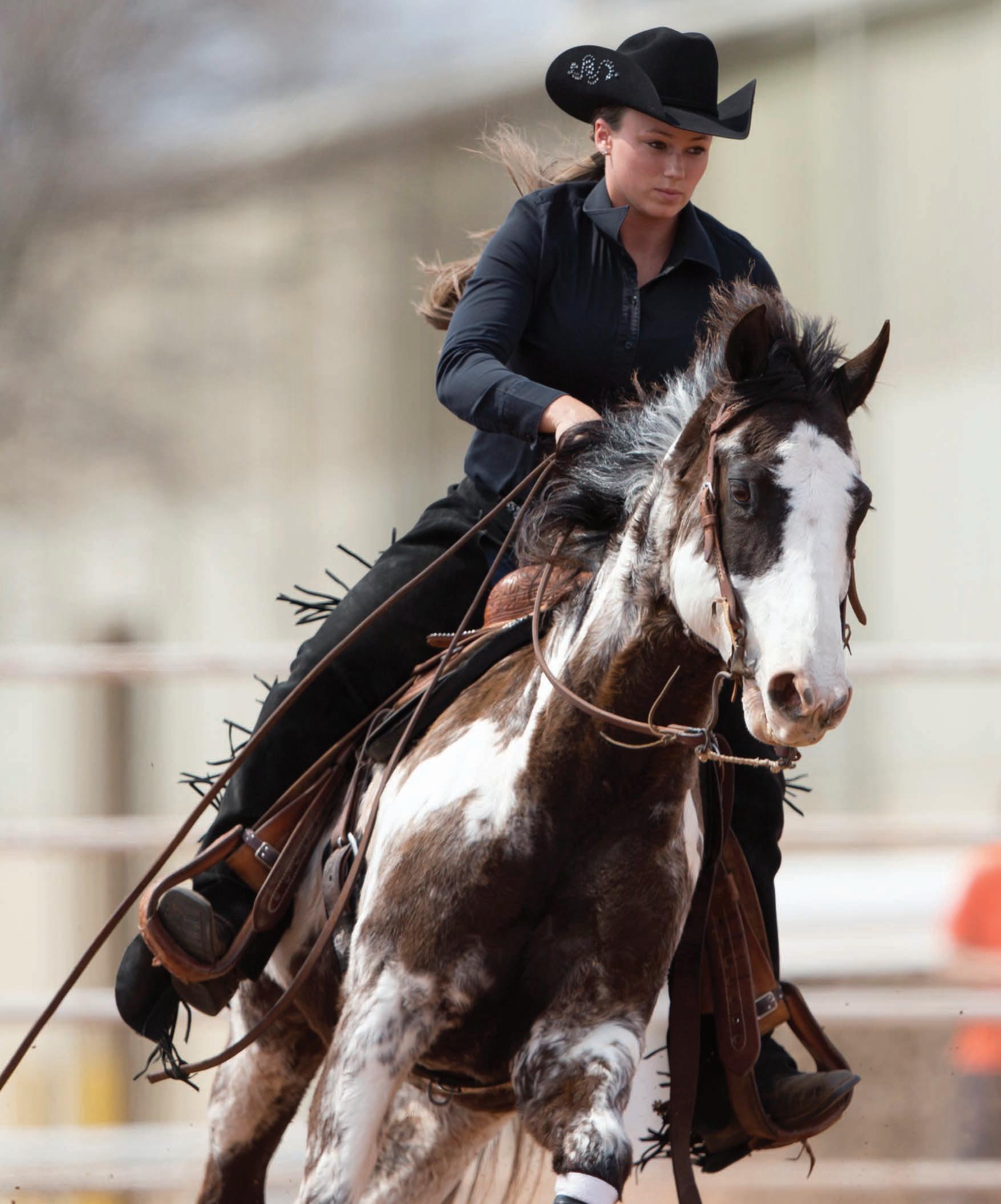
58 13 14
OF THE
PHOTO / BRUCE WATERFIELD FALL 2014
RIDING with PRIDE
STORY BY RYAN CAMERON
With the relationship between horse and rider crucial to success, that calm demeanor resides firmly at the forefront of Blumer’s skill set.
“In our sport you are dealing with another living being that helps out more than you know. Being consistent allows the horse to relax and process without having to work through your nerves in deciphering what you are trying to tell it to do,” Sanchez explained.
A member of OSU’s equestrian team the past four seasons, Blumer wrapped up her career this past spring as one of the most decorated riders in program history. The Spring Brook, Pa., native elicits praise which should not be taken lightly from head coach Larry Sanchez, head coach at OSU since the program’s inception in 1999.
“(Blumer) has been one of the top riders to ever be a part of our program,” Sanchez said. “She’s one of those athletes that every coach wishes he had multiple just like her.
“If all of them were like her, coaching would be a breeze.”

What Sanchez had at his disposal the past four years was a rider who earned AllAmerica status from the National Collegiate Equestrian Association (NCEA) each of the past three seasons. She was named the BIG 12’S REINING
“I feel like I am still in shock about it. It really was surprising when thinking about it, and every female athlete we have here,” Blumer said. “It really hasn’t hit me because I never would have thought of myself as being chosen for it because of all of the phenomenal and talented women out there. I am so honored beyond belief.”
Equipped with a rare quality found in high-caliber athletes, Blumer possesses the ability to keep an even keel no matter how grand the stage. It was a trait she repeatedly displayed at the NCEA National Championships, where she completed her career with an unblemished 9-0 mark.
While going through the recruiting process, Sanchez knew he was pursuing a talented rider with Blumer being one of the premier talents within the National Reining Horse Youth Association.
“I knew she was going to come in and be e ective. I JUST DIDN’T KNOW THAT SHE WAS GOING TO BE THAT EFFECTIVE THAT QUICKLY,” Sanchez said. “I just knew that she brought a lot to the table. I was amazed that even during her freshman year she was able to contribute as much as she did and continued to raise the bar for the other riders because of her level of ability.
“She is a very talented individual.”
Talent mixed with e ort usually leads to success, and Blumer is no exception.
RIDER OF THE YEAR
following her junior and senior campaigns.
“She is naturally gifted. Some students are just blessed with the ability to do the things required of them to reach a higher level, and that is how she is, not to mention she is a very solid-minded student in that she is the same all the time,” Sanchez said.
Student is a proper adjective for Blumer, who earned Academic All-Big 12 and NCEA All-Academic Team honors en route to being named OSU’s female student-athlete of the year for 2013-14. The latter honor left her nearly at a loss for words even days after receiving the news.
“She is definitely able to process what is going on and not get caught up in everything that is involved with the national championships, and she is able to execute at a very high level without letting that other stu play in,” Sanchez said.
Even with her sparkling record, the humble Cowgirl is quick to downplay any attention that may come with it.
“There isn’t really any secret to it, it just worked out,” Blumer said. “There is a lot more expected, and you want to do that much better because of expectations. The national championships are the last one of the year and you want to keep making it to the next round and, hopefully, to the finals.”
“She is an overachiever to the point where, on and o the horse or in and out of the arena, she is giving 110 percent,” Sanchez said. “You tell her to do it, and she is going to try to execute it to the best of her ability. That was consistent through her four years of college here.”
With all that Blumer has given to Oklahoma State, she is equally grateful for the opportunity Sanchez and the university a orded her.
“I think it was fantastic that I was able to go to school and do something that I love and to get a scholarship for it. I NEVER COULD HAVE IMAGINED GOING TO SCHOOL AND GETTING TO RIDE HORSES,” Blumer said.
59
The reasons for selecting coaching as a vocation are varied and numerous, however one that certainly ranks near the top of the list are studentathletes cut from the cloth of Oklahoma State’s Jenna Blumer.
“I think it is a great opportunity to get to do that and be on a team with 40 other girls that share your same passion for a horse. You have coaches that really care. Larry has the best heart and has been a great coach, and we have a great coaching sta . It was a great experience to be able to ride but also be able to get a really good education on a great campus. It was more than I ever thought it would be.”
The wheels were put in motion early for Blumer’s opportunity in her native Pennsylvania, where her love of horses developed at an early age.
“My dad had a few horses and I just grew up around them, and I started riding pretty much as soon as I could walk,” Blumer said. “We have a family farm in Pennsylvania and raise about 10 babies a year. I have always grown up with horses.”
Blumer, who was also a member of the North Pocono High School basketball squad, had friends encourage her to continue riding at the collegiate level as her prep career drew to a close.
“A couple of girls I used to show with were a couple of years older than me — Lyndsey
Jordan was one and Nichole Grant was the other,” Blumer said. “Lyndsey went to Auburn and was very successful there, and Nichole went to Georgia. They always would say how much they loved it and how much they loved riding for the team and said it was something I should look into.”
While the road from the Keystone State to Oklahoma is one less traveled, it was not as much of a stretch as it may seem. In fact, Stillwater’s location may very well have played in OSU’s favor when it came time to choose a college.
“In the horse industry, a lot of people are from the Oklahoma City area. I knew people here in Oklahoma and also we have a training facility here in Oklahoma so I get to go there and ride and help manage that for my dad,” Blumer said.

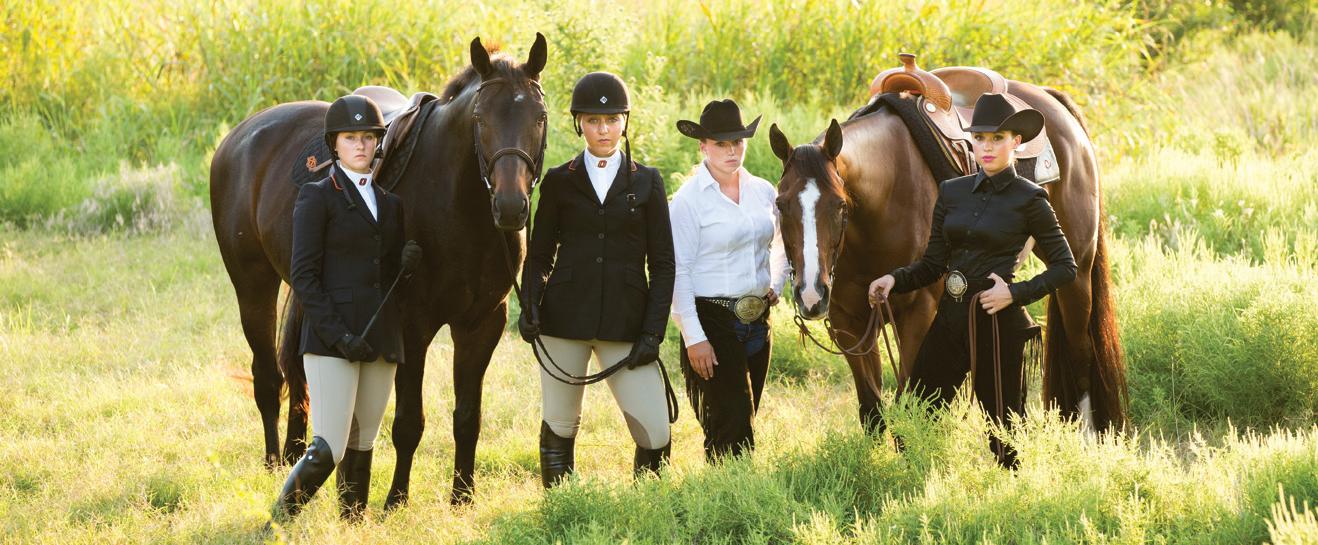
“I have friends out here so it wasn’t like I was thrown somewhere where I didn’t know anyone.”
Already familiar with the state, the everimportant recruiting trip provided the reassurance that north-central Oklahoma was the place to be.
60
“My dad had a few horses and I just grew up around them, and I started riding pretty much as soon as I could walk.”
PHOTO / PHIL SHOCKLEY
FALL 2014
PHOTO / BRUCE WATERFIELD
“With Oklahoma State, my visit was great, and Larry was great. The girls were very welcoming, and it just seemed like a great place to go to school. I also loved that the campus isn’t huge,” Blumer said.
Blumer was obviously a mammoth factor during OSU’s recent run that has included THREE-STRAIGHT CONFERENCE CHAMPIONSHIPS AND A NATIONAL CHAMPIONSHIP DURING HER JUNIOR YEAR.
As her career progressed and she moved to the forefront of the program, she subscribed to the theory of leading by example and made it a point to let her body of work speak for itself.
“Jenna is not a big talker, and she always led by example,” Sanchez said. “She is one of the quieter ones on the team but always did everything at the highest level. The girls were able to see how she was executing and followed that. Her being a quiet leader like she was and being able to lead us in the way she did to the accomplishments that the team had while she was on it was pretty incredible.”
Ever the humble leader, Blumer undoubtedly wrote her own chapter in the story of the Cowgirl program with her prowess in the arena, but her impact goes beyond athletic prowess.
“She has proven through her achievements to be a very accomplished rider. I wish everybody really knew how good of a person she is inside. She is the type of young lady
that every father and mother would want their daughter to be,” Sanchez said.
Those traits were on full display at the National Reining Horse Association Collegiate Reining Championship in Oklahoma City during her sophomore season. After winning the event, it was Blumer receiving and then promptly presenting the trophy to the proud owners of the horse.
“They were the absolute best and were so supportive and so nice. After I won, they were so excited. They are just genuinely sweet people and when I saw how excited they were and how much it meant to them that their horse was able to go do that, I wanted to give them the trophy because it meant so much to them,” Blumer said.
With individual accolades aplenty, winning on the team level proved to be the pinnacle of Blumer’s distinguished collegiate career. In April of 2013, winning the NCEA Western National Championship provided a significant moment in an already special career.

“I remember the next day everybody was hoarse, and we all had sore throats because you are so excited and cheering for each other,” Blumer said. “It is everyone working together, and there is so much support. It is better to do it as a team than an individual, especially since we had such a close team. For it to work out that way was great.”
With her collegiate eligibility exhausted, Blumer will continue to do what she loves, competing in events across the country.
“The National Reining Horse Association hosts events all over the country. The major ones are here in Oklahoma City. I am just going to keep riding and get back to showing as much as I used to,” Blumer said.
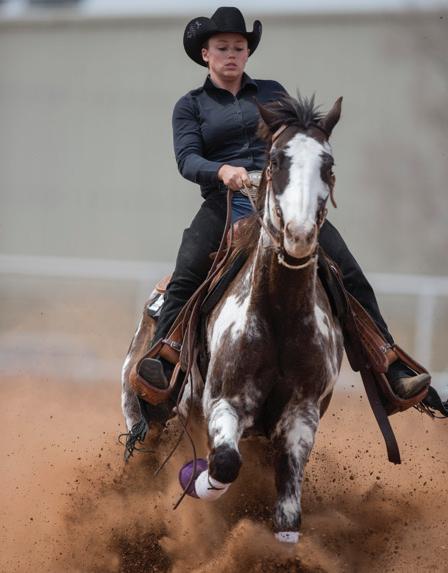
In the mold of a true studentathlete, finishing school remains a priority as well. Blumer is currently completing undergraduate work on a degree in elementary education as well as her master’s degree in special education.
“The only thing I had left to do was student teaching, but I was unable to do that being on the team because we travel so much. That is why I postponed that and started my masters in January. I will graduate with both of my degrees next May,” Blumer said.
When her coursework is complete it is only fitting that the opportunity to intertwine her two interests may present itself.
“I HAVE WANTED TO BE A TEACHER FOR QUITE A WHILE NOW,” BLUMER SAID. “I JUST REALLY ENJOY SCHOOL AND KIDS. Through my undergrad and my observations, we had a choice of which classroom to be in, and I chose a special education classroom to see what it was like and fell in love with it.
“I am really interested in the whole idea of therapeutic riding. I see how much these kids react to horses, and that is already a huge passion of mine so I have wanted to do that.”
Spending a weekend in nearby Guthrie at the Make Promises Happen Camp evolved into what she described as the “experience of a lifetime” and helped provide the potential blueprint for life after college.
“It was amazing. I had such an awesome time and loved all of the kids I got to interact with there,” Blumer said. “A lot of my observations have been with special education and I have enjoyed it. I figured ‘Why not?’ So that is what I am going to do.
“I am going to stay here in Oklahoma and apply for jobs here. I would really like to get involved in the therapeutic riding center.”
A welcome addition to her adopted home state no doubt.
61
PHOTO / BRUCE WATERFIELD
PHOTO / BRUCE WATERFIELD
JENNA BLUMER with her SENIOR TEAMMATES and the 2013 Big 12 championship trophy



13 14 OF THE FALL 2014
AFamilyTRADITION
STORY BY AUSTIN CHAPPELL PHOTOGRAPHY BY BRUCE WATERFIELD AND GARY LAWSON

Senior wrestler Chris Perry is named male studentathlete of the year
Chris Perry, who recently completed one of the more decorated four-year campaigns in the history of Oklahoma State’s prestigious wrestling program, isn’t referring to winning consecutive national championships.
He isn’t talking about his four Big 12 titles, three All-America seasons or his top-10 spot on the all-time wins list at OSU.
When Perry speaks of what is “demanded” of him, he is referencing the academic success that earned him this year’s Oklahoma State Athletics male student-athlete of the year honor.
“The most important things to me during my time at OSU were my schoolwork, the people around me and the fans,” Perry said. “It wasn’t all about making sure I won a certain amount of titles.
“I want people to look back on me and say that I was one of the greatest to wrestle here, both on the mat and o the mat.”
Each summer, the OSU athletic department announces its male and female student-athlete of the year awards, presented to individuals who display the same passion in the classroom as in his or her respective sport.
Some of OSU’s most-recognized figures have received the honor, but their successes on the field have garnered more headlines than those in the classroom.
Current Cowboy baseball head coach Josh Holliday, the male student-athlete of the year in 1999, won the award in the middle of a College World Series run. Former NBA standout Joey Graham received the honor only days before being selected by the Toronto Raptors in the first round of the 2005 NBA Draft.
Perry was still fresh off his second-consecutive NCAA individual championship when he was honored with the award in June.
He had also just qualified for the United States national team by placing at the World Team trials and ASICS University Nationals, giving him the opportunity to compete in the University World Championships in Pecs, Hungary, where he won a silver medal.
With a loaded past and a promising future, Perry easily could have let his wrestling endeavors overshadow an academic award. However, he said he was incredibly humbled when he first heard he had received the honor.
“IT’S VERY IMPORTANT TO KNOW THAT YOU CAN SUCCEED IN ACADEMICS AND STILL BECOME A NATIONAL CHAMPION,” PERRY SAID. “IT’S A GREAT AWARD TO ACCEPT, AND
IT’S HONESTLY UP THERE WITH EVERYTHING ELSE THAT I’VE ACHIEVED IN MY CAREER.”
A large number of college athletes value their education, but a mentality like Perry’s isn’t just developed through the traditional four-year athletic career. It’s established by a strong support system, a slew of role models and most importantly, enormously high expectations.
“The people in my life who have pushed me to succeed in my wrestling career and academic career haven’t necessarily threatened me with it, but they have demanded it of me,” Perry said. “They demanded that I do well, and they demanded that I have the motivation to overcome the challenges of balancing school and sports.”
To comprehend the massive pressure loaded on Perry, consider his background. For starters, he comes from one of the most famous wrestling families in the world.
Perry’s older brother, Mark Perry Jr., compiled four consecutive All-America campaigns at the University of Iowa from 2005-08. He topped o that run with national championships his junior and senior years.
Perry Jr. was also named the Iowa athlete of the year in 2007, the Hawkeyes’ equivalent of OSU’s student-athlete of the year award. And just like his younger brother, Perry Jr. says he reached the same heights by knowing what was demanded of him.
63
“THEY DIDN’T ASK ME TO DO IT, THEY DEMANDED IT. I EITHER DO IT, OR I FAIL.”
“GROWING UP AROUND A PROGRAM LIKE OKLAHOMA STATE, THE PHILOSOPHY IS YOU WANT TO BE THE BEST, OR IT’S A FAILURE,” Perry Jr. said. “Chris has done some great things with his career, and he knows that I’m his biggest supporter and how proud I am of him.
But when you grow up in this kind of family, it’s expected, and you expect it out of yourself.”
Next in line is Perry’s father, Mark Perry Sr., who many Oklahoma State fans remember as a star for the Cowboy wrestling team in the mid-1980s. During his time in Stillwater, he helped lead Tommy Chesbro’s Cowboys to two Big Eight championships and NCAA runner-up finishes in both 1983 and 1984.
The former OSU star grappler twice won Big Eight titles at 118 pounds and was a two-time All-America honoree.
Perry stresses that his father’s experience as a student-athlete has been crucial to his own success, both on and off the mat.
“Because of him I’ve always grown up knowing what it took to win,” Perry said. “But he also helped teach me what type of journey it would take to win and keep my priorities straight.”
Perry Sr.’s accomplishments as a Cowboy laid the foundation for a family legacy at Oklahoma State. After seven successful years as an assistant at Nebraska, Perry Sr. joined the OSU coaching sta in 1992 with a reputation as one of the best recruiters in the country.

Known for his intensity and motivational talents, Perry Sr. was also a key force behind numerous Cowboy wrestlers winning academic awards. During his coaching career at OSU, his pupils were named to the National Wrestling Coaches Association all-academic team 13 times, and three were awarded the esteemed NCAA Postgraduate Scholarship.
Perry said growing up under his father’s meticulous mentality helped him learn to deal with many of a student-athlete’s challenges, such as time management and prioritizing.
“I WANT TO WIN SO BAD IN WRESTLING, AND ACADEMICS IS A KEY PART OF THAT DESIRE, BUT THE FIRST THING I HAVE TO DO IS TAKE CARE OF ALL MY PRIORITIES AND THEN I WORRY ABOUT OTHER THINGS,” Perry said. “I live a very disciplined life. The people who have really guided me through life knew how disciplined I wanted to be with my lifestyle and the way I live, and I took that on as a challenge.”
After the student-athlete of the year award was introduced at OSU in the early 1990s, Perry Sr. saw Mark Branch and Steven Schmidt become the first two members of the wrestling program to earn the honor. It helped provide him with the essential ingredients needed to pass a recipe of success down to his two sons.


Perry acknowledges his father’s wisdom, saying his parents were a vital part of the crowd of people who helped him flourish academically.
“I have been fortunate enough to be extremely successful with my wrestling career, but most of that goes toward my parents, the people at the academic center and my coaches,” Perry said. “Those are the people who have been down a successful path and have shown me the right path to follow. The only obvious path in life was down that road.”
The expectations inherited from a father and brother with such vast collegiate wrestling success is one thing. But the family was also blessed with an Olympic superstar on the tree.
64
FALL 2014
“I want people to look back on me and say that I was one of the greatest to wrestle here, both on the mat and off the mat.”
That’s where John Smith, who is entering his 24th year as the head coach at Oklahoma State, steps in.
“HE’S THE BEST COACH IN THE COUNTRY,” PERRY SAID OF SMITH. “HE’S A GREAT LEADER, AND HE PUTS PEOPLE ON THE RIGHT PATH TO SUCCESS SO I’VE MASSIVELY BENEFITTED FROM HIM BEING IN THE FAMILY.”
Smith, a name synonymous with wrestling success, just happens to be Perry’s uncle. The connection formed more than 30 years ago when Smith’s sister, Cathy, married Perry Sr., beginning a wrestling dynasty within a family.
When Perry Sr. first stepped onto the mat at Gallagher-Iba Arena, one of the first families of wrestling was only beginning to blossom. Following the All-America career of Perry Sr., it was Smith’s turn. He went on to win Big Eight individual championships in 1985, 1987 and 1988. He was never part of an NCAA team championship, but ended undergraduate days at Oklahoma State with 152 victories, 42 falls and a school-record 47-win campaign in 1988.
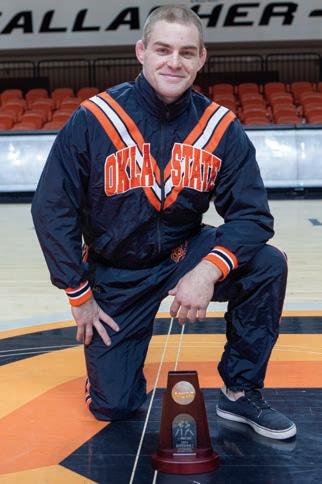
His historic run continued through the international circuit and was highlighted by six world championships and gold medals at both the 1988 and 1992 Olympic Games. Various accolades and awards followed, including membership in the National Wrestling Hall of Fame and a spot on the list of the 100 all-time greatest Olympians.
On paper, the family has achieved a seemingly endless catalog of recognition in the wrestling world. The tradition throughout his lineage might seem overwhelming to some, but Perry claims he wouldn’t have thrived without it.
“You have to take it ONE PIECE AT A TIME. and it’d be too much to handle if I constantly thought about it,” Perry said. “It’s something that I’ve turned out to be extremely thankful for. This is where it got me, and I wouldn’t take a minute of it back. Those people are the people that have gotten me where I’m at.
“It’s also been a big part of keeping me on my toes in the classroom. There are always challenges down the road, but the college grind is a di erent kind of grind. Seeing those people go through it made me really learn to appreciate it, and it’s made me a better person and an even better wrestler.”
Because of the family ties, Smith has been an influential figure for Perry throughout his entire life. He stood alongside Perry during his entire collegiate career, along with Perry Sr. and the rest of the family.
Overall, he’s seen his nephew develop into ONE OF THE ALL-TIME OKLAHOMA STATE GREATS.
Most importantly, though, he’s watched Perry become more than just a wrestler.
“I’ve seen a big di erence from the time he came in, mainly with him becoming a lot more mature in his
personal faith and how he interacts with people,” Smith said. “Through his development, he’s obtained everything a coach could ever want, from passion to drive to hunger.
“There’s no question that he shows great passion on the mat and shows a great conscious academically. Our program is excited about having the studentathlete of the year, and it should motivate the next guys.”
Now that Perry has wrapped up his competitive days with the Cowboys, he plans on continuing to build the family name by competing internationally. He’s already taken steps toward qualifying for next year’s world championships and the 2016 Olympics.
When compared with the careers of each of his family members, Perry’s postcollegiate wrestling career could track the in the same direction as that of his uncle. Regardless of that competitive path, when he decides to hang it up he’ll continue the family tradition of coaching, with hopes of doing so at the collegiate level.

“When you’re competing, you don’t have time to coach so when I’m done competing, that’s definitely what I’ll look to do,” Perry said. “I love working with kids, college kids especially, so I couldn’t see it any other way than coaching at the college level. Right now I’m focused on putting myself in the right position to get those goals done and give myself the best opportunity to continue my career as a coach.”
With his résumé, Perry has all the essential tools needed to be a successful coach. The skills he’s gained over the past four years will become more refined as he gets deeper into the wrestling world, and his academic accomplishments will provide him with the experience needed to lead the next generation of wrestling.
“I feel like the first national title helped me to be a part of my family’s legacy, but I think this year also helped me create my own,” Perry said. “But there’s more to come, I feel like. I just have to stay focused and continue to do what I do.
“I think good things will come.”
65

66
YEAR
OF THE YEAR OKLAHOMA STATE UNIVERSITY 1994 . . . CHARLOTTA ELIASSON Women’s Golf ALAN BRATTON Men’s Golf 1995 . . . CHERYLANNE “LANNY” WHITESIDE Women’s Golf RAFEAL DENSON Football 1996 . . . . . . . STACY COFFEY Women’s Basketball TRIP KUEHNE Men’s Golf 1997 . . . . . . . KYM HAZZARD Women’s Tennis MARK BRANCH Wrestling 1998 . . . . . . CHERI EDWARDS Women’s Basketball STEVEN SCHMIDT Wrestling 1999 . . . . . KOURTNEY BOWER Women’s Basketball JOSH HOLLIDAY Baseball 2000 . . . . . . JENNIFER CROW Women’s Basketball JEFF RAGAN Wrestling 2001 . . . . . . . MARIA BODEN Women’s Golf MARK MUNOZ Wrestling 2002 . . . . . . . . JENNY KIPP Softball FRAN KREPELKA Men’s Tennis 2003 . . . . . . . . LAUREN BAY Softball KYLE EATON Football 2004 . . . . . . LUANN ULRICH Equestrian JOHNNY THOMPSON Wrestling 2005 . . . . . VALENTINA MEDINA Women’s Track JOEY GRAHAM Men’s Basketball 2006 . . . . . . LAUREN COLWELL Women’s Soccer JOEY GRAHAM Zack Robinson 2007 . . . . . LAUREN SIMMONS Women’s Tennis DARNELL SMITH Football 2008 . . . . . NICCOLE GRIMALDI Women’s Soccer NATHAN MORGAN Wrestling 2009 . . . . . YOLANDA ODENYO Women’s Soccer RYAN VAIL Men’s Track 2010 . . . . . . . . LEAH KUEHN Equestrian OLEKSANDR NEDOVYESOV Men’s Tennis 2011 . . . . . MARIAH GEARHART Softball BRANDON WEEDEN Football 2012 . . . . . . . KRISTA LOPEZ Women’s Soccer COLBY LOWE Men’s Track 2013 . . . . NATALJA PILIUSINA Women’s Track CLINT CHELF Football 2014 . . . . . . JENNA BLUMER Equestrian CHRIS PERRY Wrestling FALL 2014
FEMALE & MALE STUDENT-ATHLETES OF THE
FEMALE & MALE STUDENT-ATHLETES


68 FALL 2014

69
STORY BY BLAKE ZIMMERMAN
PHOTOGRAPHY BY BRUCE WATERFIELD
CAITLIN WAY
FIVE
OKLAHOMA STATE’S CAITLIN WAY IS THE MODEL STUDENT-ATHLETE.
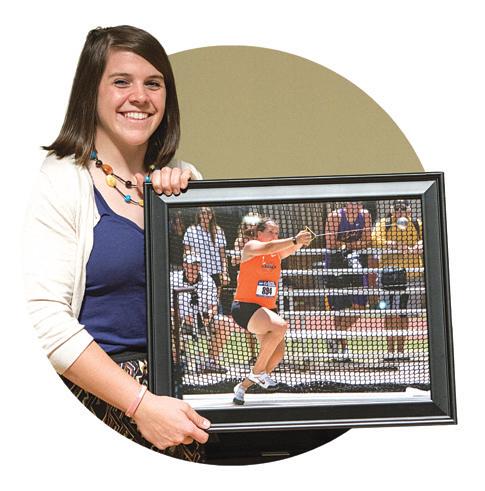
All-Big 12 honors combined in the weight and hammer throws, a two-time member of the Capital One Academic All-America Track & Field Team and four academic All-Big 12 honors while carrying a cumulative 4.0 GPA
Way, hailing from Mitchell, S.D., has always had her priorities in order. She knew why she was at Oklahoma State, and that the academics were probably more important to what she wanted to accomplish. “I would focus on track and getting myself better when I trained and competed, but I always knew I had to focus on my classwork,” Way said. “I ALWAYS TRIED AS HARD AS I COULD TO KEEP MY PRIORITIES STRAIGHT AND REMEMBER I WAS AT OSU TO DO A JOB, AND THAT WAS MY JOB.”
OSU throws coach John Baumann said he has never coached an athlete quite like Caitlin. In his mind, the things that made her so e ective in the classroom were almost holding her back in the circle.
“Caitlin is very systematic,” Baumann said. “That trait has really helped her in the classroom. She is such a planner, which allowed her to balance her classwork and stay on top of everything. However, in the circle, she had the expectation that if she did this and did that, she would get a certain result. That’s not always how it works. When that happened, her world would kind of begin to fall apart. Where she has improved the most is dealing with and shutting out the external stressors around her. Once she began to do that, it all started to fall into place.”
In all fairness to Way, what became her signature event was something she had never thrown before arriving in Stillwater.
“I ACTUALLY ONLY THREW THE SHOT PUT AND DISCUS IN HIGH SCHOOL,” WAY SAID. “WE DIDN’T HAVE THE HAMMER IN HIGH SCHOOL IN SOUTH DAKOTA. I loved throwing the discus. I thought that was my bread and butter, and what I would be throwing in college. When I got to Stillwater, I thought I would throw the shot, discus, hammer and weight, but coach Baumann thought I had maybe reached my potential in the discus.
The Big 12 is so competitive in the throws. YOU HAVE TO BE GREAT AT WHAT YOU DO TO BE AN ALL-CONFERENCE PERFORMER, so we decided to put all the eggs in one basket and do the hammer in outdoors and the weight during indoors.”
70
“I’ve always thought that as long as I work as hard as I can, even if things don’t turn out the way I want them to, I would be OK with that,” Way said. “I knew I was at OSU to be a student and then an athlete. I wanted to be as good at both of those things as I possibly could be.”
FALL 2014
Way began to gain confidence in the hammer, and soon there was no worry, no preconceived notions. It was time to let it fly, and she did. SHE EARNED HER FIRST ALL-BIG 12 HONOR IN THE 2012 OUTDOOR HAMMER, PLACING SIXTH and qualifying for the NCAA WEST preliminary round. She didn’t advance to the finals, BUT TOOK 28TH WITH A THROW OF 57.59M/188'-11", A PERSONAL BEST AT THE TIME.
It was just the beginning.
In the 2013 indoor season, she won the weight throw at the KANSAS STATE UNIVERSITY ALL-COMERS MEET (17.30m/56'-9.25"), the ARKANSAS-OSU duel (16.60m/54'-5.5") and the SOONER INVITATIONAL , where she THREW AN INDOOR-BEST 18.65m/61'-2.25". At the BIG 12 CHAMPIONSHIPS, she launched an 18.39m/60'-0.04" to finish SEVENTH, earning two team points for the Cowgirls. In the outdoor season she yet again earned allconference honors after launching a
then personal-best 60.02m/196'-11" to take FOURTH IN THE HAMMER. She once again qualified for the NCAA WEST preliminary in the hammer, and missed qualifying for the national meet by a meter.
In 2014, Way was a two-time AllBig 12 honoree. She was seventh in the weight throw and sixth in the hammer. She also qualified for the OUTDOOR WEST preliminaries for a third time. Amidst the athletic success, she compiled FOUR CONSECUTIVE ACADEMIC ALL-BIG 12 HONORS, BECOMING ONLY THE SECOND COWGIRL TO DO SO. She was named to the Capital One Academic All-America Track & Field Teams in 2013 and 2014.

Baumann said Way’s adaptation to change, in both athletics and in life, has helped her improve.
“SHE HAS JUST EVOLVED SO MUCH,” BAUMANN SAID. “Like I said, she is such a creature of habit. When she was able to evolve in her understanding of the sport and life in general, she began to show how incredible she really is. She realized stepping out of the box was OK.
SHE HAS IMPROVED SO MUCH IN REGARDS TO DEALING WITH CHANGE, AND IT HAS HELPED HER IMPROVE AS AN ATHLETE AND A PERSON.”
Way’s hard work did not go unnoticed. Two of her most important accolades were still to come.
In the fall of 2013, Way was named one of 47 SENIORS OF SIGNIFICANCE at OSU. From that pool, in the spring of 2014, OSU selected 15 seniors to be the university’s outstanding seniors for 2014.
Way was on that list. To put the honor in perspective, only the top one-half percent of OSU’s seniors were selected.
“It was really humbling and surprising,” Way said. “To me, I was always just doing my job and what was expected of me. I didn’t really think I was doing anything outstanding or extraordinary. However, the fact that the university recognized me and determined I had, was humbling and
exciting. It was really cool.”
Even with the success in the classroom and the circle, Way felt she had a higher calling, and that led her to the FELLOWSHIP OF CHRISTIAN ATHLETES
“What I’ve done and enjoyed the most is visiting schools, speaking to kids and telling my story,” Way said. “I want to use the platform I’ve been given to influence other kids and serve them. I’ve really enjoyed that. Being a college athlete, I’ve learned that life is so much bigger than athletics, and I want to communicate that. SPORTS ARE GREAT, BUT THEY ARE ONLY PART OF SOMETHING MUCH BIGGER.”
Way had found a perfect fit, and eventually became the organization’s president. She continued to use the platform to do what she feels she was meant to do.
“I’ve just wanted to stress to young athletes that there is so much more to life than winning and losing,” Way said. “Being the president for the past two years has given me the platform to communicate that and I am grateful.”
That experience has led Way, a premed/physiology graduate, to take advantage of being the second Cowgirl track and field athlete to earn an NCAA post-graduate scholarship. She will be a track and field coach at the UNIVERSITY OF SIOUX FALLS, a Christian liberal arts university, in Sioux Falls, S.D.
Way said she is excited to do what she has a passion for, and also be close to home.
“I’ve known the former throws coach at the University of Sioux Falls for a long time,” Way said. “In February I competed in a meet at the University of Nebraska and saw him there. He said he was going to step down and they were looking for a replacement. They were especially looking for a female. We talked about it and two weeks later I got the call from the head coach. We discovered I was the perfect fit for them and
they were the perfect fit for me. It’s a great opportunity, being a Christian school, to share my faith with my athletes at my job.”
Way said even though her degree is supposed to be a stepping stone to medical school, she knows she is where she is supposed to be right now.
“I don’t really know what my end goal is right now,” Way said. “I know even with how much I loved everything about the science in my undergraduate courses, I don’t want to go to medical school — at least not yet. During my time at OSU, I got really involved with FCA and fell in love with serving and mentoring young athletes. I don’t know how long I will be doing this, but I KNOW THIS IS WHAT GOD HAS PLANNED FOR ME REGARDING THE NEXT STEP IN MY LIFE.”
71
“I’VE LEARNED THAT LIFE IS SO MUCH BIGGER THAN ATHLETICS … ”
the Honor Roll
When OSU announced its scholarship endowment initiative, the athletic program was last in the Big 12. Now, more than halfway through the 10-year program, OSU leads the conference. But we’re not finished yet.
OSU awards 229 full scholarships to student-athletes each year at a cost of $4.5 million. Each dollar freed up through endowed scholarships goes back into our programs. Better equipment. Better facilities. Better support. Each dollar has a direct impact on the lives of our student-athletes.
“Each scholarship we endow secures the future of OSU athletics and provides more opportunities for our student-athletes on and off the field,” says Mike Holder, Vice President for Athletic Programs and Director of Intercollegiate Athletics.

This is the list of all the generous supporters who have helped to provide a bright Orange future. They are our Honor Roll.



To learn more about scholarship opportunities and how you may contribute, please contact Larry Reece (405-744-2824) or Matt Grantham (405-744-5938).
“It has been amazing to see 315 donors step up to get us past the $58 million mark in commitments to the Leave A Legacy campaign.
The bottom line is OSU supporters get it … scholarships help our studentathletes today while strengthening our athletic budget forever.”
— LARRY REECE, SENIOR ASSOCIATE ATHLETIC DIRECTOR, DEVELOPMENT
BASEBALL 6.5
FULL SCHOLARSHIP
Dennis and Karen Wing (2)
Hal Tompkins
HALF SCHOLARSHIP
Mike Bode and Preston Carrier
Jennifer and Steven Grigsby
Sally Sparks
QUARTER SCHOLARSHIP
Bryant and Carla Coffman
David and Grace Helmer
Jill Rooker
FOOTBALL 32.0
FULL SCHOLARSHIP
Bob and Kay Norris
Bryant and Carla Coffman
/ The Merkel Foundation
David LeNorman
Dennis and Karen Wing (2)
Dr. Mark and Beth Brewer
Jack and Carol Corgan
Football Scholarship
Jim Click
John and Gail Shaw
HALF SCHOLARSHIP
Cindy Hughes
Donald Coplin
Doug Thompson
Ed and Helen Wallace
Greg Casillas
Ike and Marybeth Glass
Martha Seabolt
Sandy Lee
Dr. Scott Anthony
Ken and Jimi Davidson
Leslie Dunavant
Mike and Kristen Gundy
Mike and Robbie Holder
Ron Stewart
Ross and Billie McKnight
Sandy Lee
Tom and Sandra Wilson
Wray and Julie Valentine
Jim and Lynne Williams
John and Patti Brett
Mike and Judy Johnson
Sally Sparks State Rangers
Tom Naugle
QUARTER SCHOLARSHIP
Al and Martha Strecker
Arthur “Andy” Johnson, Jr.
Arthur Couch
Barry and Roxanne Pollard
Bill and Ruth Starr
Brad and Leah Gungoll
Brian K. Pauling
Bridgecreek Investment Management LLC
Bryan Close
David and Cindy Waits
David and Gina Dabney
Dr. Berno Ebbesson
Dr. Ron and Marilynn McAfee
Eddy and Deniece Ditzler
Flintco
Fred and Janice Gibson
Fred and Karen Hall
Howard Thill
James and LaVerna Cobb
Jerry and Lynda Baker
Jerry and Rae Winchester
John P. Melot
John S. Clark
Ken and Leitner Greiner
Kent and Margo Dunbar
Paul and Mona Pitts
R. Kirk Whitman
Randal and Carol White
Roger and Laura Demaree
Shelli Osborn
Steve and Diane Tuttle
Tony and Finetta Banfield
72
AS OF 6/20/14 FALL 2014
GENERAL 1.25
HALF SCHOLARSHIP
Terry and Martha Barker
QUARTER SCHOLARSHIP
David and Judy Powell
Kenneth and Susan Crouch
Sally Sparks
GRADUATE ATHLETE 0.75

QUARTER SCHOLARSHIP
Bob and Joan Hert
Neal Seidle
Tom and Cheryl Hamilton
MEN’S BASKETBALL 20.75
FULL SCHOLARSHIP
A.J. and Susan Jacques
Brett and Amy Jameson
Calvin and Linda Anthony
Chuck and Kim Watson
David and Julie Ronck (1.25)
Dennis and Karen Wing (2)
Douglas and Nickie Burns
HALF SCHOLARSHIP
Bill and Marsha Barnes
David and Julie Ronck
Dr. Mark and Susan Morrow
Jay and Connie Wiese
Griff and Mindi Jones
James and Mary Barnes
Jim Vallion
Ken and Jimi Davidson
Kent and Margo Dunbar
KimRay Inc.
Mitch Jones Memorial
Sally Sparks
Sandy Lee
Stan Clark
QUARTER SCHOLARSHIP
Dr. Scott and Lynne Anthony
Gary and Sue Homsey
Holloman Family
Michael and Heather Grismore
Rick and Suzanne Maxwell
Robert and Sharon Keating
Steve and Suzie Crowder
Terry and Donna Tippens
MEN’S GOLF 4.25
FULL SCHOLARSHIP
David and Julie Ronck
Dennis and Karen Wing
HALF SCHOLARSHIP
Stillwater National Bank
Jack and Carol Corgan
Men’s Golf Scholarship
QUARTER SCHOLARSHIP
Bob and Elizabeth Nickles
Garland and Penny Cupp
Richard and Joan Welborn
MEN’S TENNIS 0.25
QUARTER SCHOLARSHIP
Tom and Cheryl Hamilton
MEN’S TRACK 0.75
QUARTER SCHOLARSHIP
Dr. Mark and Susan Morrow
Susan Anderson
Ken and Leitner Greiner
WOMEN’S BASKETBALL 6.0
FULL SCHOLARSHIP
Brad and Margie Schultz
Ken and Jimi Davidson
HALF SCHOLARSHIP
Baloo and Maribeth
Subramaniam
Mike Bode and Preston Carrier
Don and Mary McCall
John and Caroline Linehan
QUARTER SCHOLARSHIP
Bill and Sally Cunningham
Calvin and Linda Anthony
Donald Coplin
Jill Rooker
Jon and Nancy Patton
Richard and Linda Rodgers
WOMEN’S EQUESTRIAN 0.25
QUARTER SCHOLARSHIP
David and Gina Dabney
WOMEN’S GOLF 1.0
HALF SCHOLARSHIP
David and Julie Ronck
QUARTER SCHOLARSHIP
Amy Weeks
Kent and Margo Dunbar
WOMEN’S TENNIS 0.25
QUARTER SCHOLARSHIP
Jamie Maher
WRESTLING 10.25
FULL SCHOLARSHIP
A.J. and Susan Jacques
Bruce and Nancy Smith
Chuck and Kim Watson
Lon and Jane Winton
OSU Wrestling – White Jacket Club / Gallagher
Endowed Wrestling Scholarship
OSU Wrestling – White Jacket Club / Myron
Roderick Endowed Wrestling Scholarship
HALF SCHOLARSHIP
Mark and Lisa Snell
QUARTER SCHOLARSHIP
Danny and Dana Baze / Cory and Mindy Baze
John and Beverly Williams
R.K. Winters
OSU Wrestling – White Jacket Club / Ray Murphy
Endowed Wrestling Scholarship
OSU Wrestling – White Jacket Club / Tommy
Chesbro Endowed Wrestling Scholarship
The Cobb Family
SOFTBALL 0.25
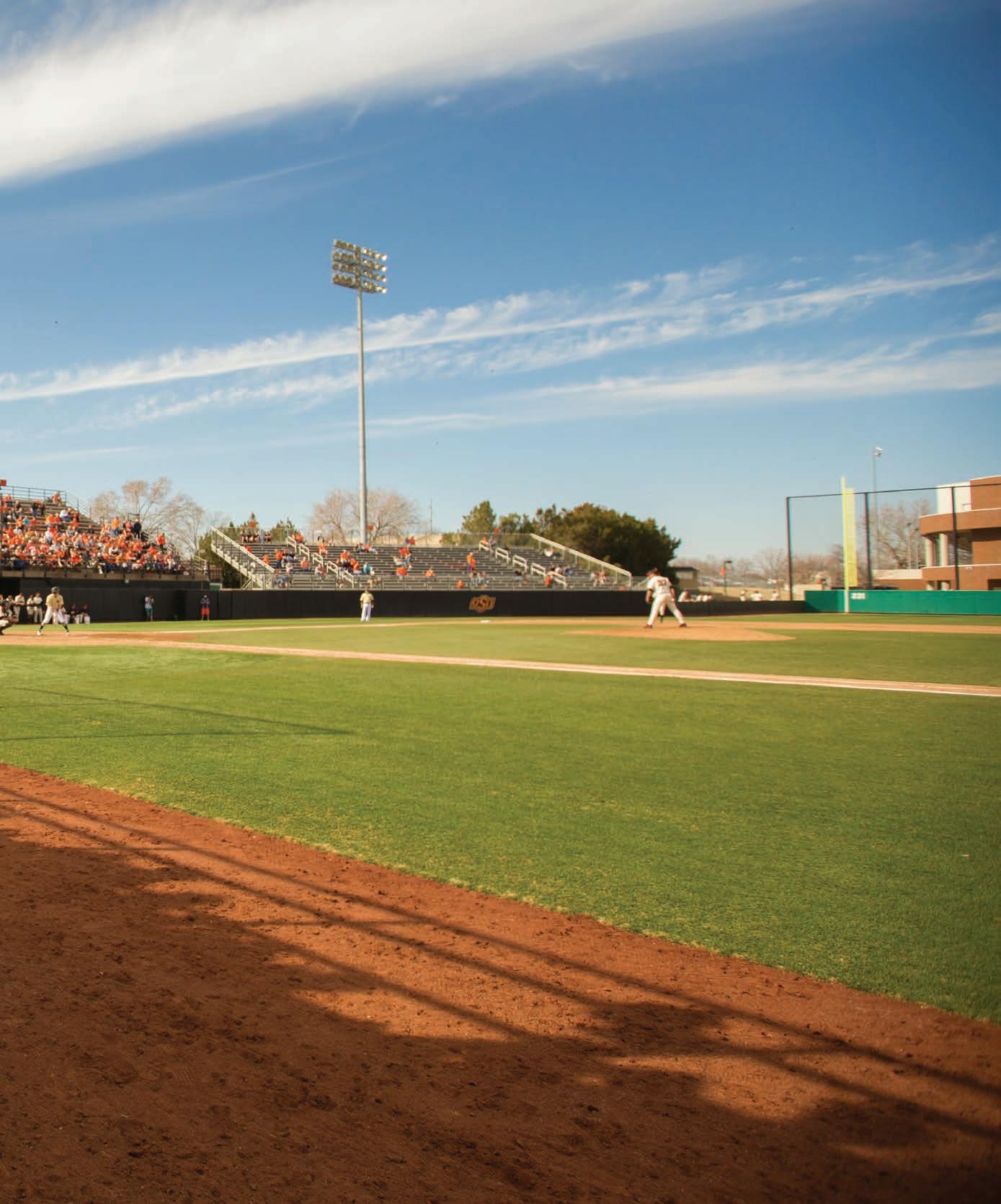
QUARTER SCHOLARSHIP
Tom and Cheryl Hamilton
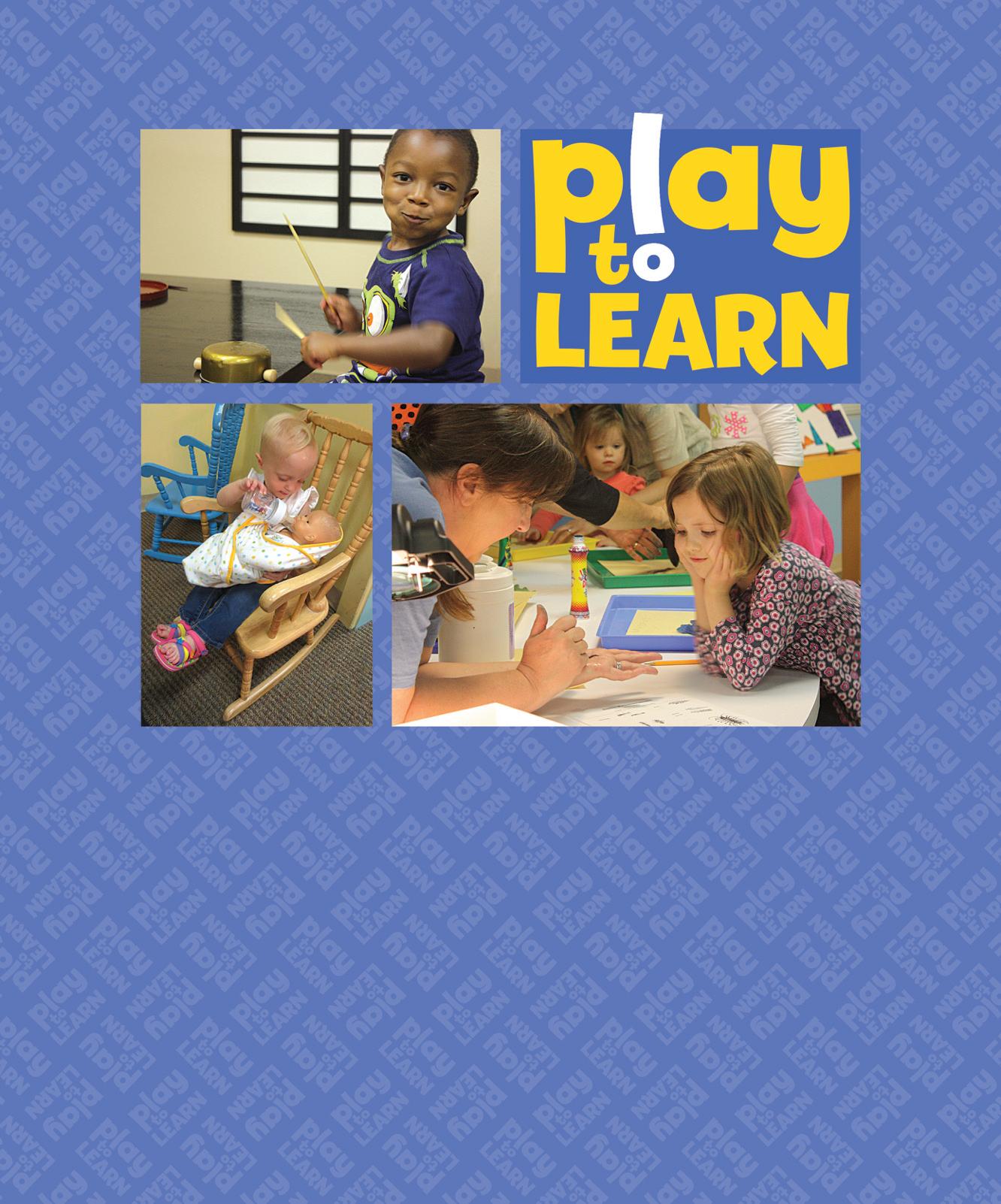






















Interactive inquiry-based exhibits exploring science, engineering, art, math, history and culture, at Oklahoma’s award-winning children’s museum! 308 West Franklin Lane, Stillwater, OK 74075 Admission: $7 Open Tuesday through Saturday 10am to 5pm • Sunday 1 to 5pm • Closed Monday (405) 533-3333 • www.okwondertorium.org • www.facebook.com/okwondertorium Central Oklahoma Frontier Country Marketing Association 2014 Outstanding Children’s Attraction
450 COWBOY AND COWGIRL STUDENT-ATHLETES THANK YOU FOR YOUR LOYAL SUPPORT.

OSU ATHLETICS AND OVER


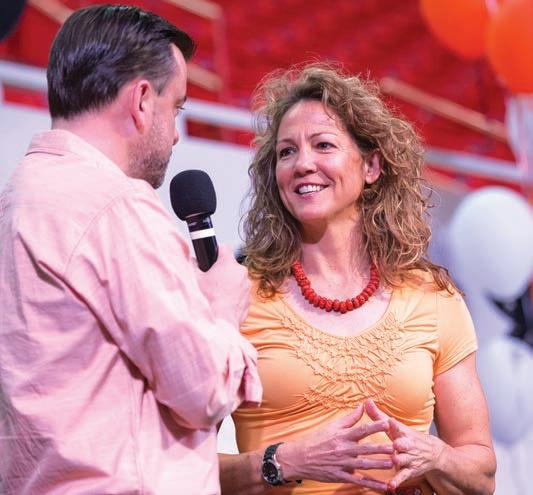


 LARRY REECE (EMCEE, LIVE AUCTION) AND MICHELE SMITH (AUCTION HOST)
TIA SCOTT (ASSISTANT AD OF MARKETING & PROMOTIONS) AND HER FIANCEE CHICO HARRING
LARRY REECE (EMCEE, LIVE AUCTION) AND MICHELE SMITH (AUCTION HOST)
TIA SCOTT (ASSISTANT AD OF MARKETING & PROMOTIONS) AND HER FIANCEE CHICO HARRING
FALL 2014
DAVE HUNZIKER (EMCEE, SILENT AUCTION)
DONORS & ALUMNI STUDENT ATHLETES SCHOLARSHIPS


& ATHLETES SCHOLARSHIPS
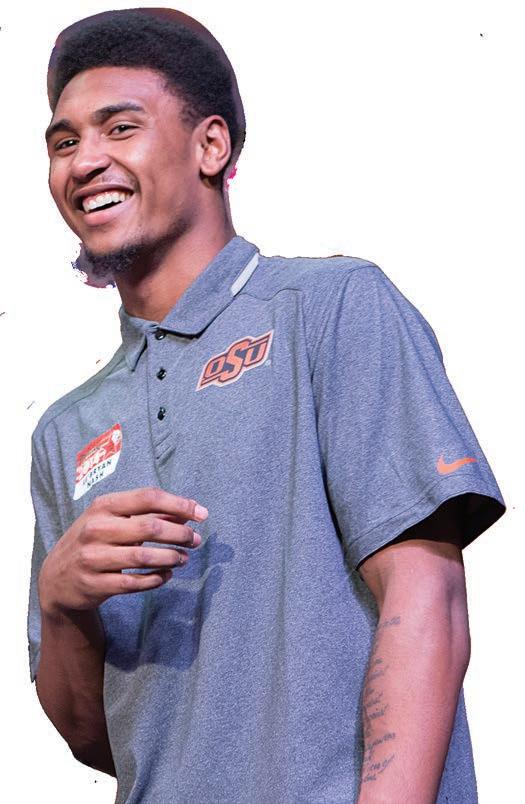
The annual POSSE auction has a simple goal: to generate funds for student-athlete scholarships. The event, however, has grown into much more than just a fundraising opportunity for OSU Athletics. The spring-time Saturday night o ers one of the few occasions in which OSU donors and alumni get the opportunity to spend time with student-athletes. During the more recent auction, MEN’S BASKETBALL PLAYER Le’Bryan Nash was so caught up in the moment that he grabbed a microphone to make an impromptu announcement that he would be returning to Stillwater for his senior year.

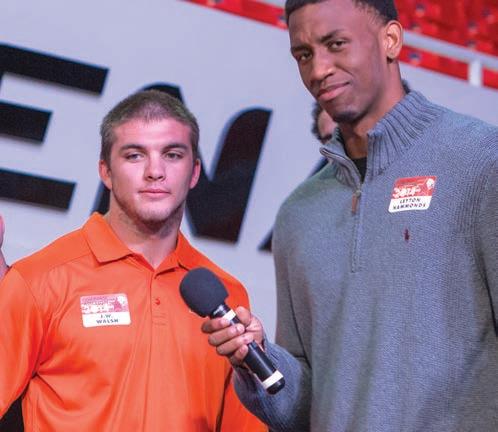

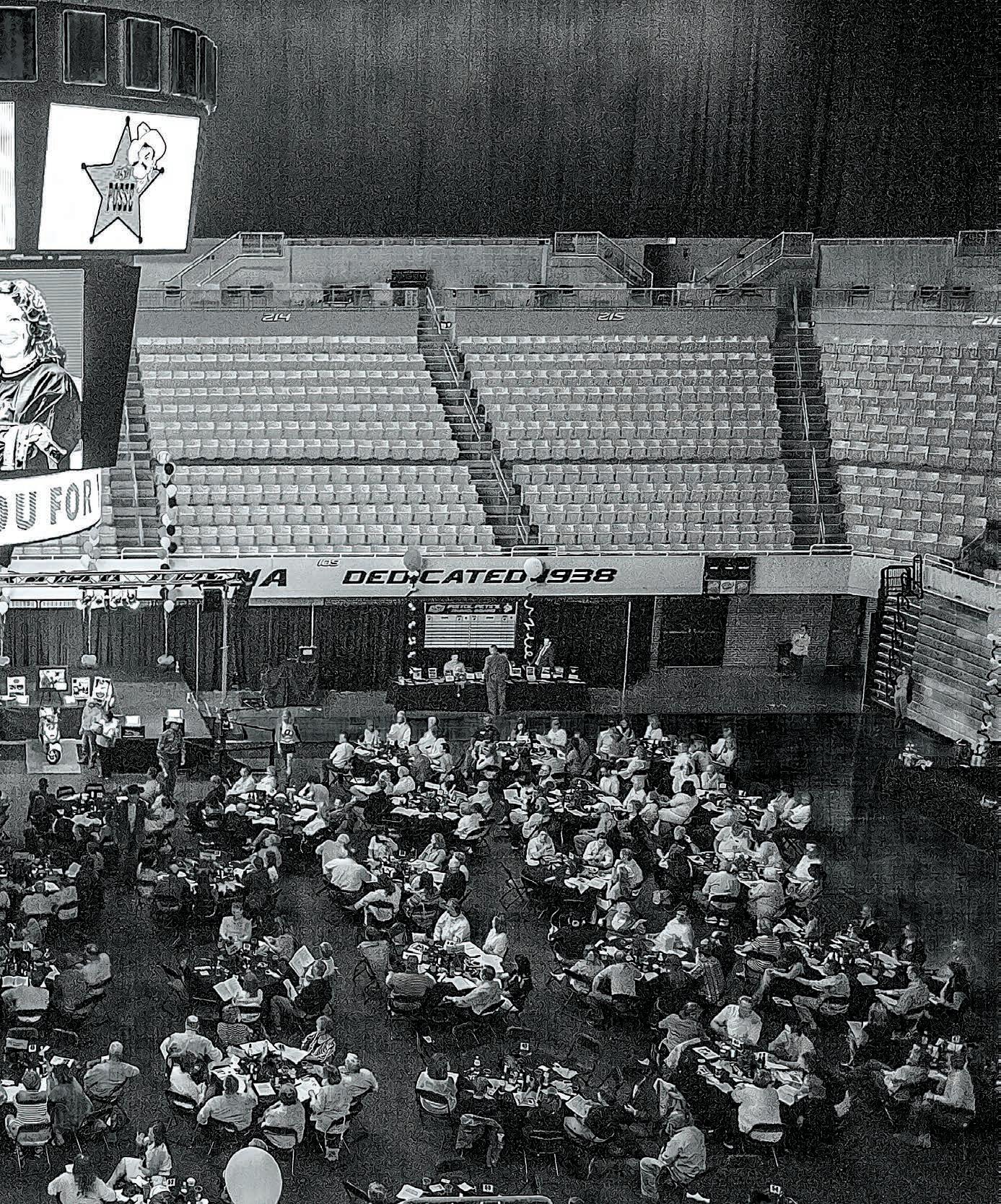
And, oh by the way, there are some pretty slick items up for auction.
Where else can you bid on everything on a CLYDESDALE CARRIAGE RIDE , attending a WHITE SOX GAME WITH ROBIN VENTURA, KEVIN DURANT’S SIGNED SHOE OR GARTH BROOKS’ AUTOGRAPHED COWBOY HAT ? The event is truly a “win-win” for everyone involved.
This year’s auction raised over $365,000 for the OSU Athletics Scholarship Fund FORMER OSU SOFTBALL AND OLYMPICS STAR Michele Smith was HONORARY CHAIR of the event and was enthusiastically received by the crowd. Larry Reece served as EMCEE and ENTERTAINER WADE TOWER capped a fun evening of camaraderie and fundraising.
PHOTOGRAPHY BY BRUCE WATERFIELD
JW WALSH (FOOTBALL) WITH LEYTON HAMMONDS (BASKETBALL)
LE’BRYAN NASH (BASKETBALL)
Did You See It?
NCAA STILLWATER REGIONAL CHAMPIONS

78
FALL 2014
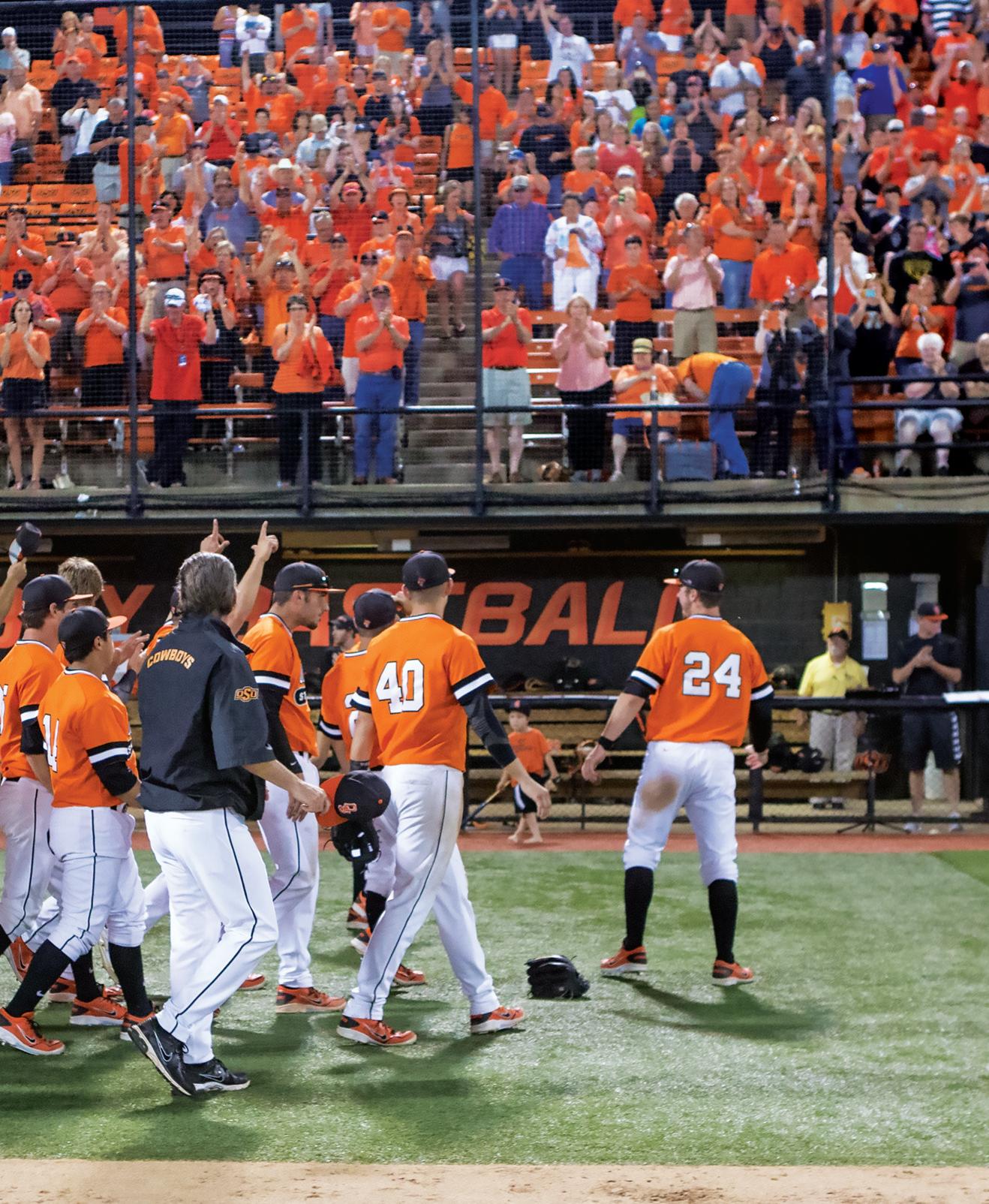
79
PHOTOGRAPHY BY BRUCE WATERFIELD
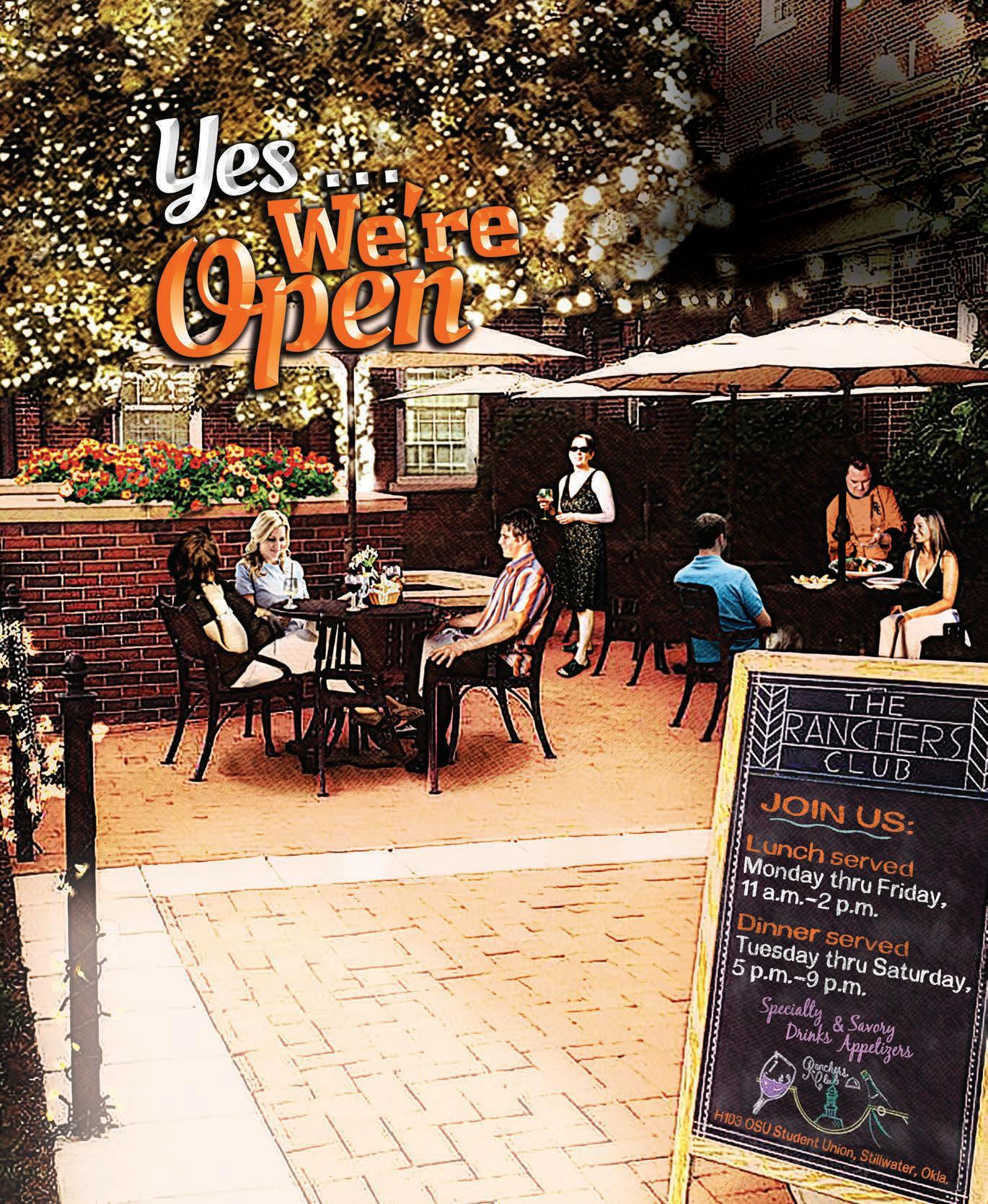
405-744-6835 AthertonHotelatOSU.com 405-744-BEEF (2333) theRanchersClub.com The Ranchers Club continues to welcome guests for Stillwater’s most unique dining experience while The Atherton Hotel receives a major makeover.




OF OK LA HO MA Beyond Borders April 10-11, 2015 Make plans now to join us for wine tasting, educational seminars and gourmet dining. Tickets go on sale January 2015! www. WineForumOfOklahoma .com 405-744-7110 WFOK@OKSTATE.EDU HUMANSCIENCES.OKSTATE.EDU/HRAD Hotel and Restaurant Administration
What's worse than dumb? THE CRITICS Maybe
THE FOLKS IN THE FILM INDUSTRY HAVE BEEN RESPONSIBLE FOR BRINGING MOVIE
BRILLIANCE TO THE SILVER SCREEN FOR YEARS. IF YOU SAT DOWN TO DEVELOP A LIST OF SOME OF THE BEST MOVIES OF ALL TIME, WHAT WOULD THEY BE? IT’S
LIKELY YOUR LIST WOULD BE DIFFERENT THAN THE TYPICAL MOVIE CRITICS.
The movies they extol might include Gone With the Wind, A Streetcar Named Desire, or Rebel Without A Cause. Perhaps a critic would try to sell us one of the Spielberg films: E.T. or Jaws. They could attempt to convince us of one of Humphrey Bogart’s flicks: African Queen or Casablanca. Wizard of Oz or High Noon might make it onto the list. How about one from the modern era, Star Wars?
I’m no Siskel or Ebert, but it seems often times, when I read a critics review of a movie and they tell me how great it is, I
WALK AWAY AFTER SEEING IT ASKING MYSELF
ONE QUESTION: WHAT THE! ? If you are like me, the movies which stick out in your mind are ones that for some reason or another mean something to you, or reach you in a special way. Maybe they make you laugh … or cry. Perhaps they are highly dramatic and keep you on the edge of your seat.
A sequel to a great movie is on its way to a theater near you this fall! The first one was so great and had such a huge following, they had to create a second one. So what’s the second version you ask? It’s Dumb and Dumber … To, of course! You had to figure the Motion Picture Corporation of America was going to take advantage of those of us loyal fans who laughed until our sides hurt, and tempt us to the box o ce again.
The movie professionals will probably tell us it’s childish and is low level humor. And, it may not be as good as the first one was. But a lot of people want to see what kind of trouble Lloyd and Harry get into as they drive around in that truck disguised as a dog! The football critics are out in full force this summer. It seems like when they start talking, I have a tendency to place them in the same category as the movie reviewer telling me why the movie I just watched was so fantastic. When what I’m really trying to figure out is how I can get my $7.50 and two hours back. The prognosticators are casting doubt on a young group of Cowboys. They seem to be thumbing their collective noses at a team which has won a lot of games and the hearts of a lot of fans during the last several years. Critics are choosing all the normal players for the stars of the national stage in college football for 2014. Toward the Oklahoma State team they aim disrespect, disbelief and doubt. Those sound like great motivations for a brilliant movie script. Like an old western. I’D LIKE TO SEE THE YOUNG COWBOYS COME RIDING INTO TOWN, SAVE THE PEOPLE AND FACE DOWN THE BAD GUYS who identified themselves as enemies from the very beginning of the picture show. You know the type: beady eyes,
snarl, evil grin, wearing purple, royal blue, green or whatever color identifies you as the bad guy. I believe it’s highly possible we will develop a team which will make a lot of people … ORANGE WITH ENVY.
You loyal Oklahoma State fans are all the same. You like teams that stick out in your minds and for some reason or another mean something to you or reach you in a special way. Maybe they make you laugh … or cry. Perhaps they are highly dramatic and keep you on the edge of your seat.
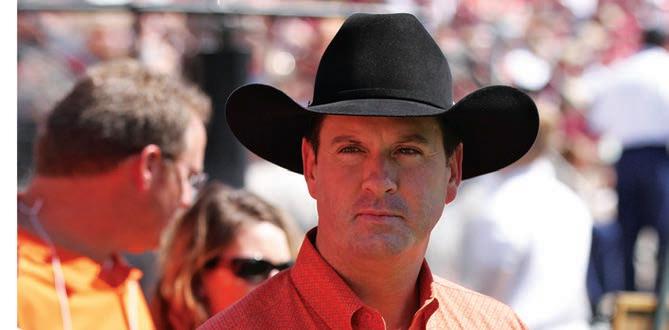
LET’S NOT BELIEVE EVERYTHING THE CRITICS SAY. They are too … critical. It’s like someone told me once, don’t ever wrestle with a pig. You both get muddy and the pig likes it. To always believe the people being critical of your team would be dumb. And there’s only one thing worse than dumb. Dumber.
GO POKES!
KYLE WRAY VICE PRESIDENT ENROLLMENT MANAGEMENT & MARKETING
82 FALL 2014

Go Anywhere. Go Pokes. Take advantage of our special bowl game ticket & travel packages. Don’t just sit there!






















































 STORY BY KEVIN KLINTWORTH
PHOTOGRAPHY BY GREG BULLARD, GARY LAWSON, JAMES SCHAMMERHORN, PHIL SHOCKLEY AND BRUCE WATERFIELD
STORY BY KEVIN KLINTWORTH
PHOTOGRAPHY BY GREG BULLARD, GARY LAWSON, JAMES SCHAMMERHORN, PHIL SHOCKLEY AND BRUCE WATERFIELD



















 WADE McWHORTER
PHOTO / PHIL SHOCKLEY
WADE McWHORTER
PHOTO / PHIL SHOCKLEY











 STORY BY RYAN CAMERON
STORY BY RYAN CAMERON




 STORY BY GENE JOHNSON
STORY BY GENE JOHNSON














 PHOTOGRAPHY BY BRUCE WATERFIELD
PHOTOGRAPHY BY BRUCE WATERFIELD


































































 LARRY REECE (EMCEE, LIVE AUCTION) AND MICHELE SMITH (AUCTION HOST)
TIA SCOTT (ASSISTANT AD OF MARKETING & PROMOTIONS) AND HER FIANCEE CHICO HARRING
LARRY REECE (EMCEE, LIVE AUCTION) AND MICHELE SMITH (AUCTION HOST)
TIA SCOTT (ASSISTANT AD OF MARKETING & PROMOTIONS) AND HER FIANCEE CHICO HARRING




























